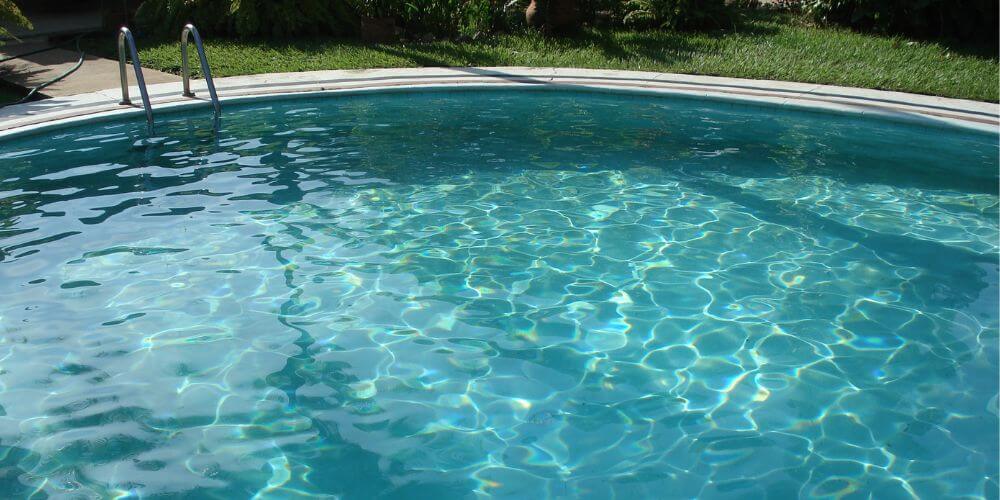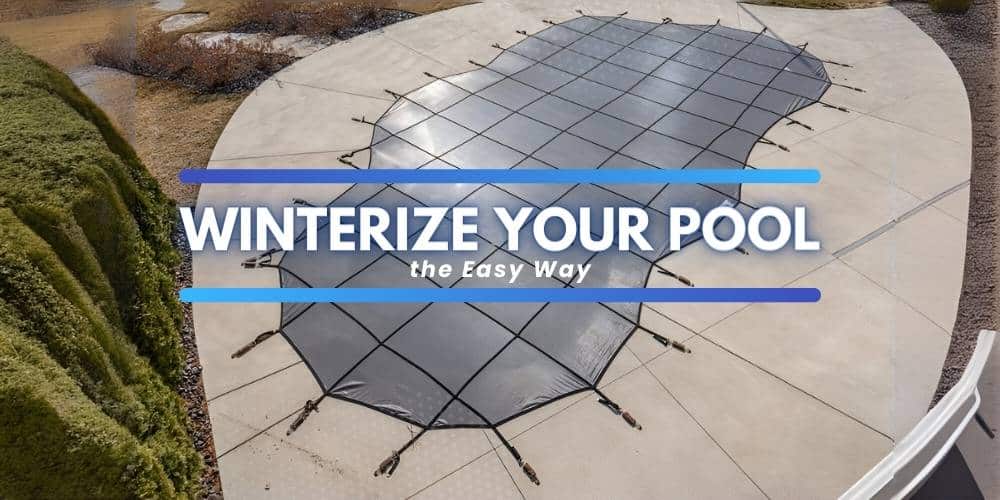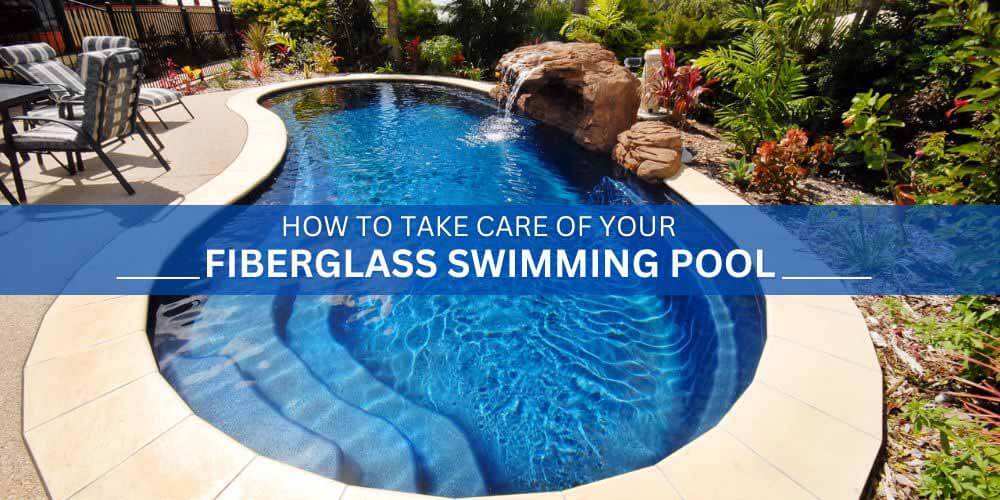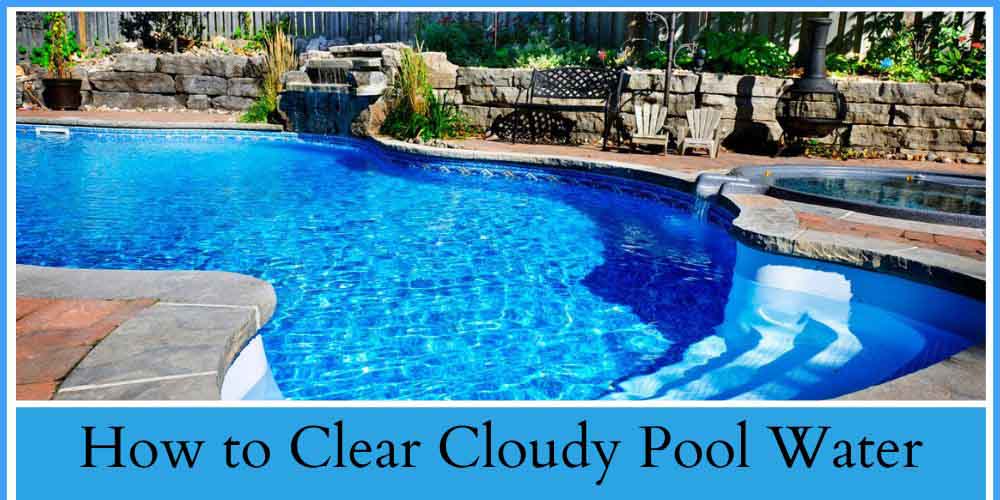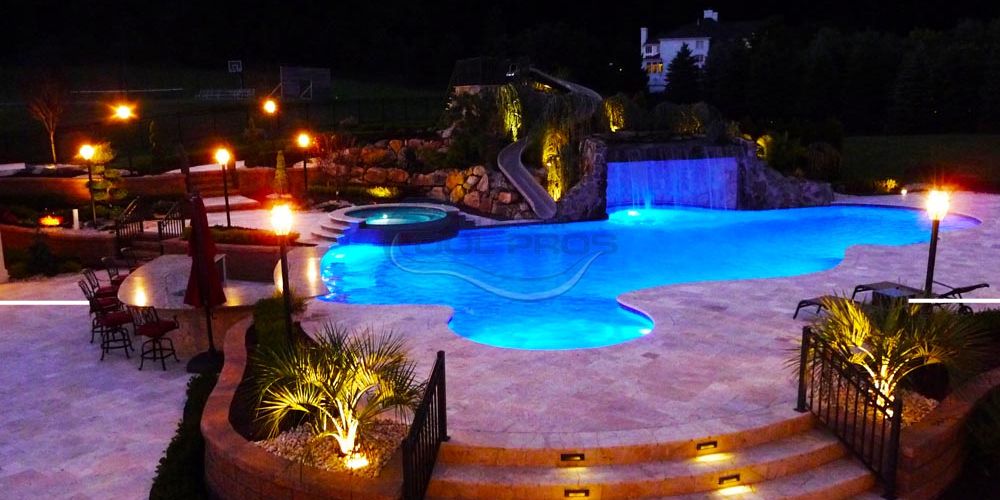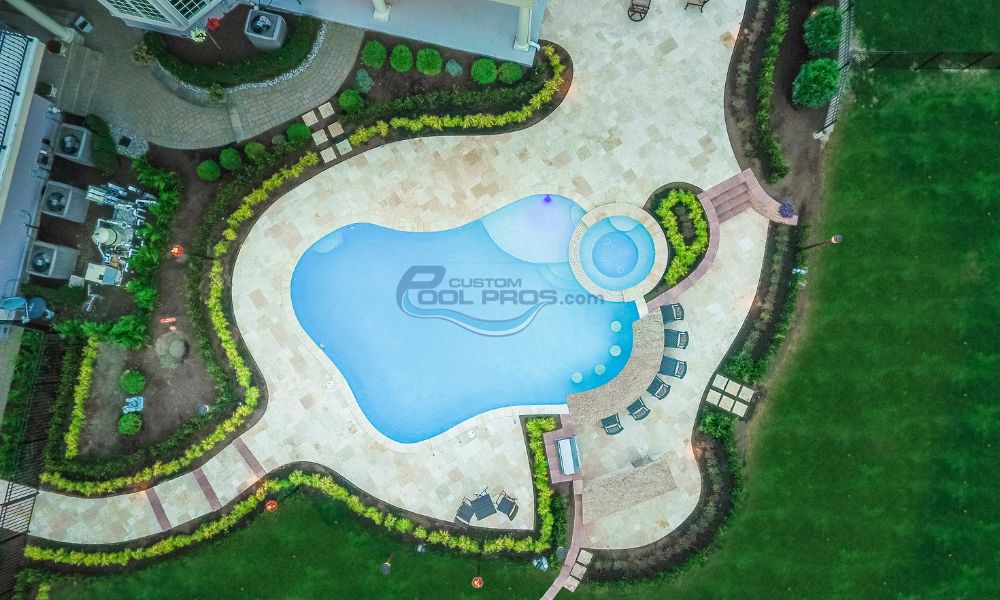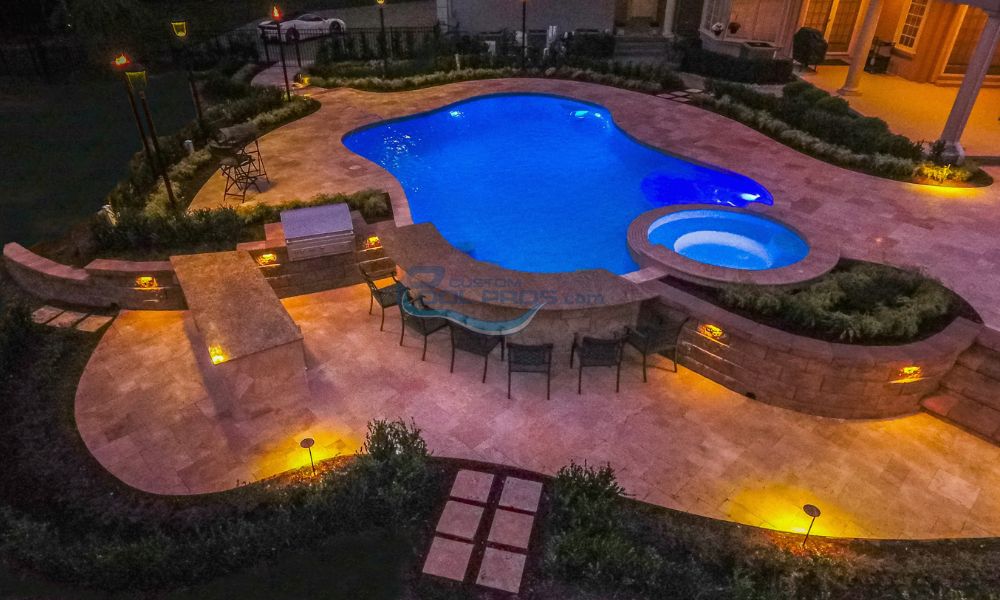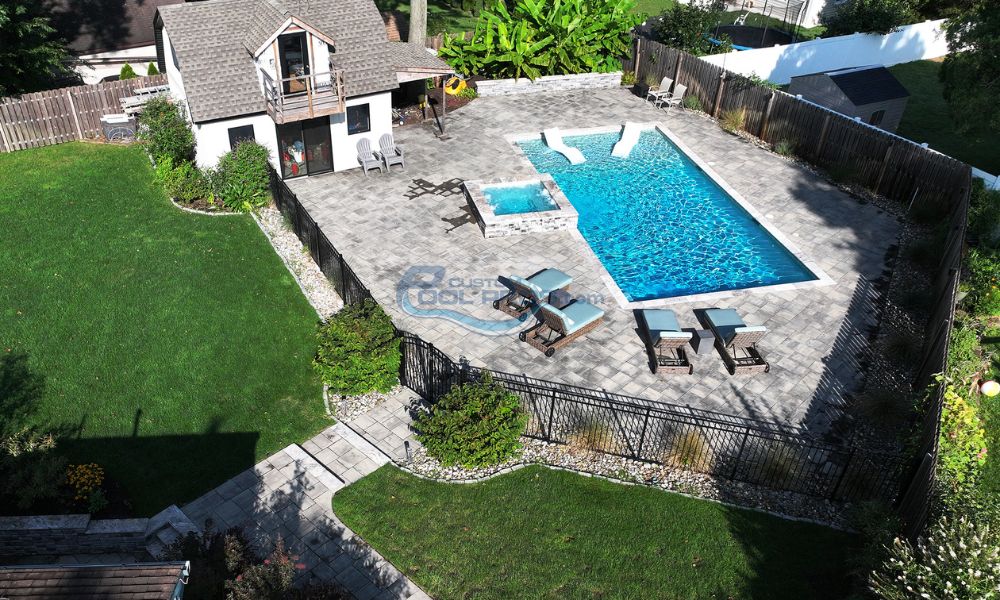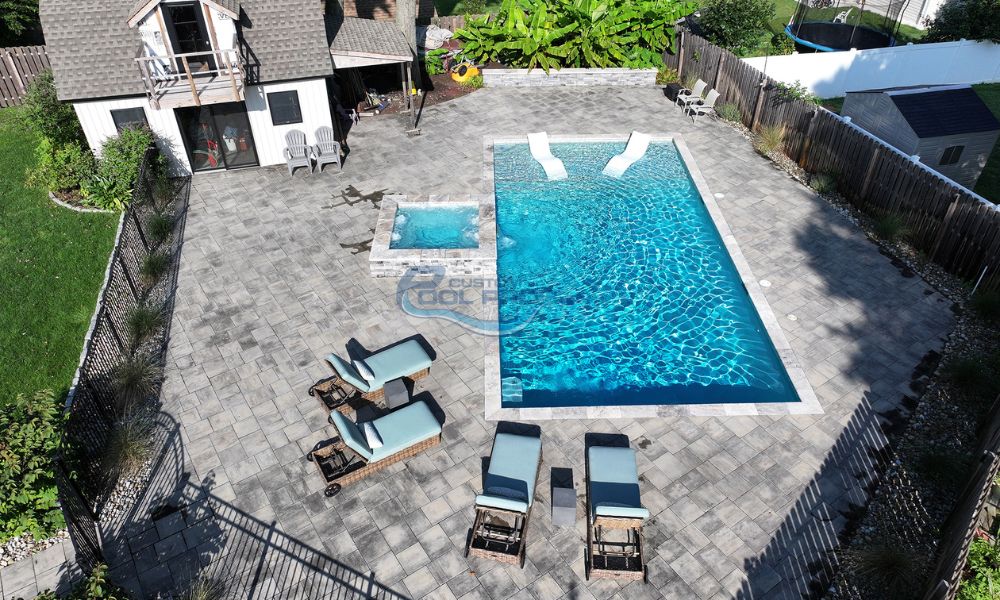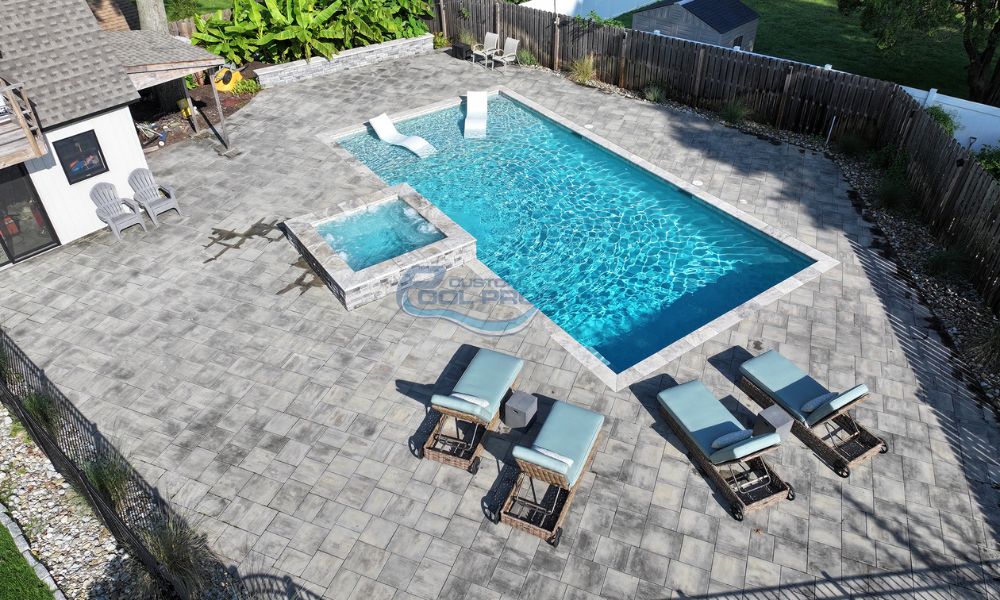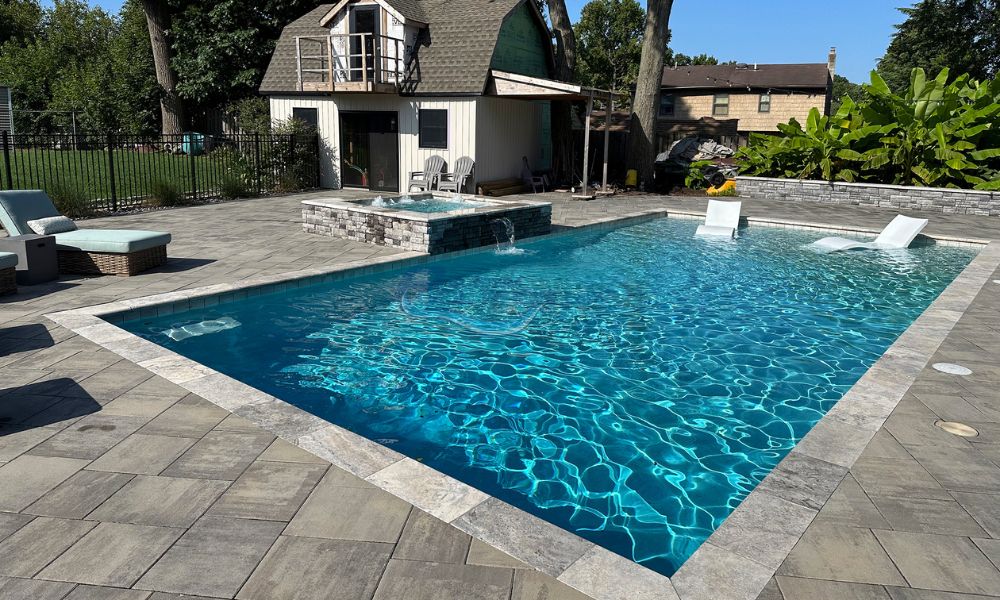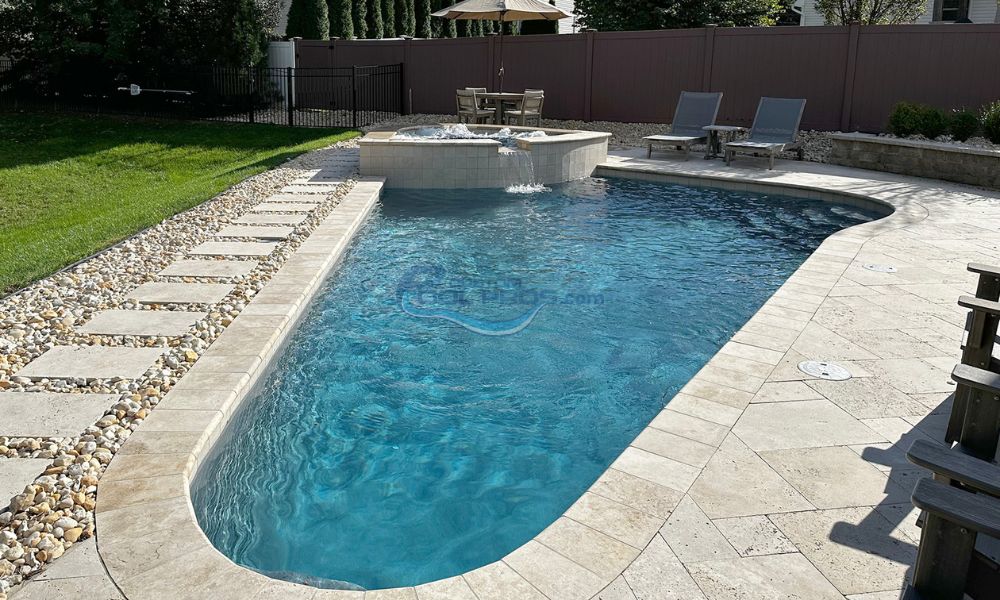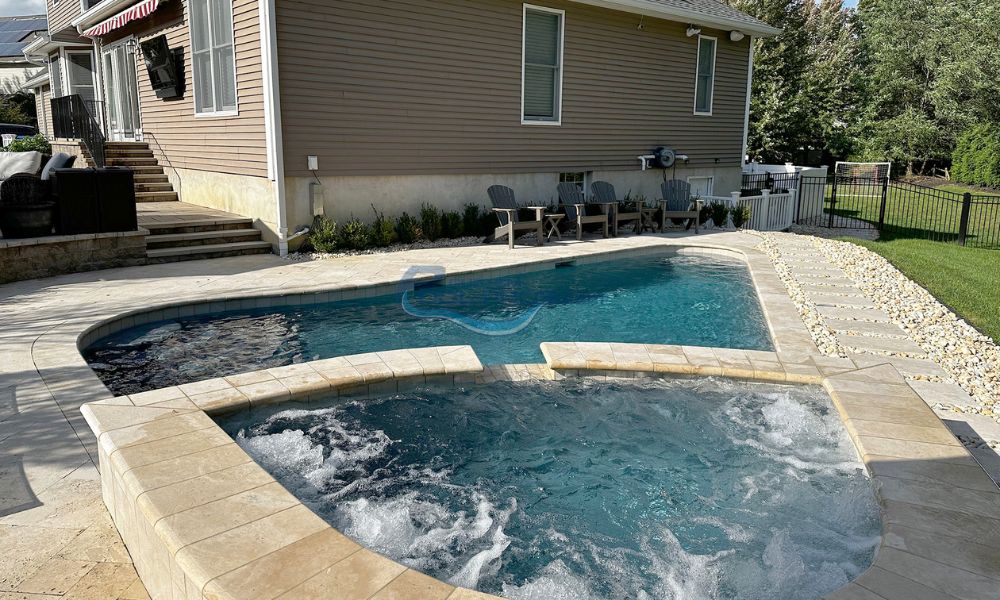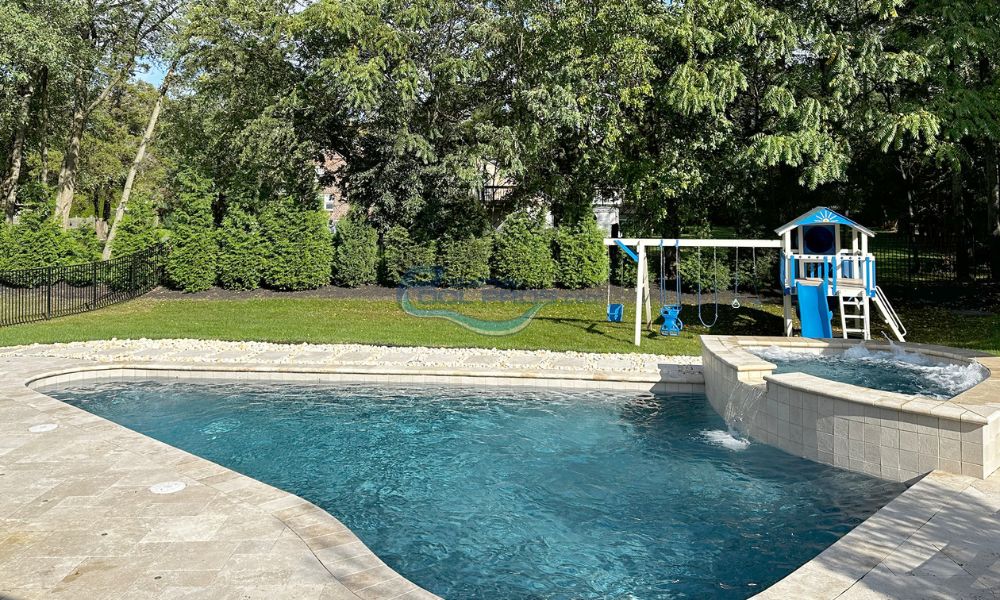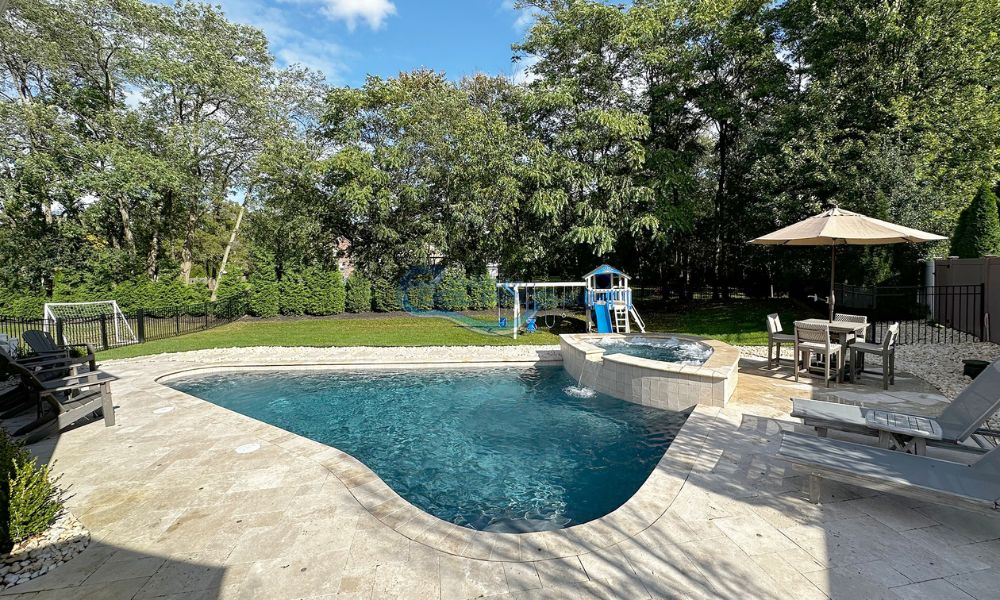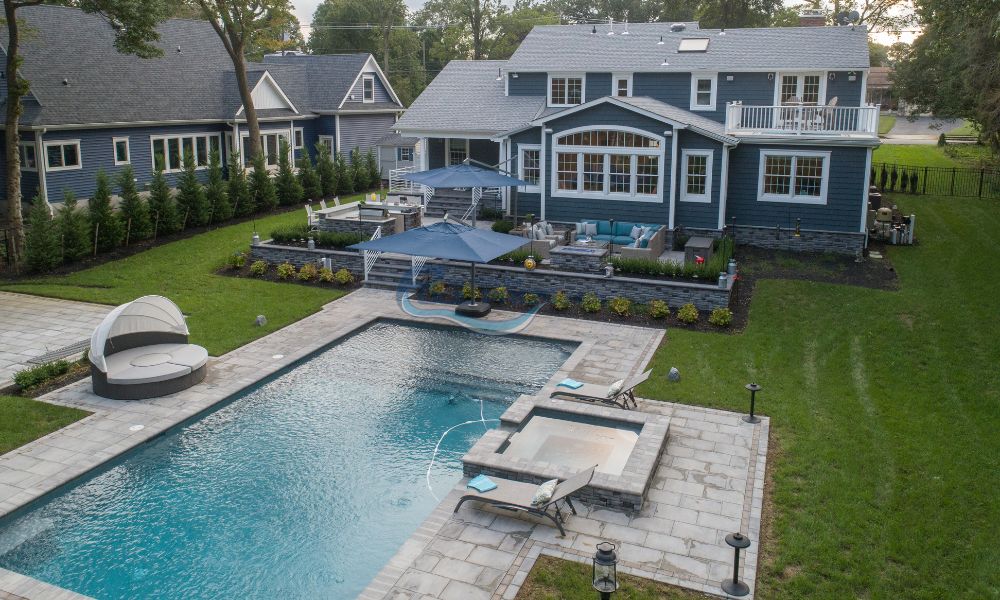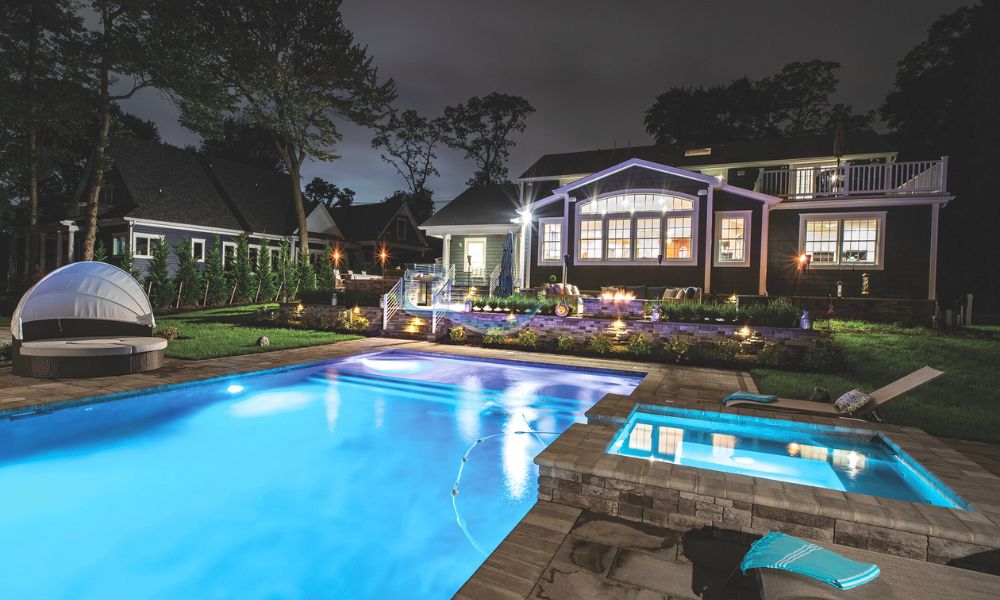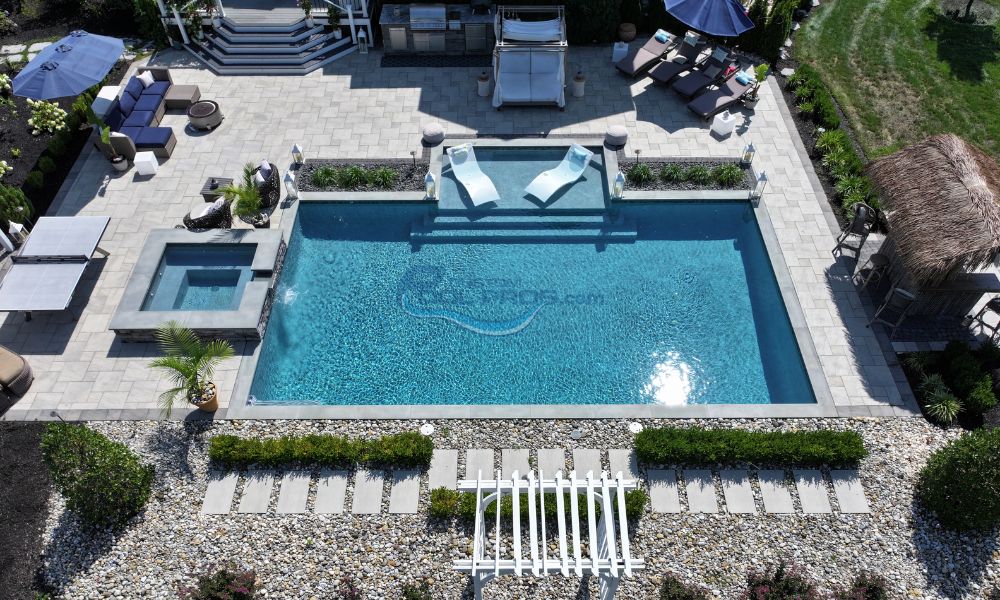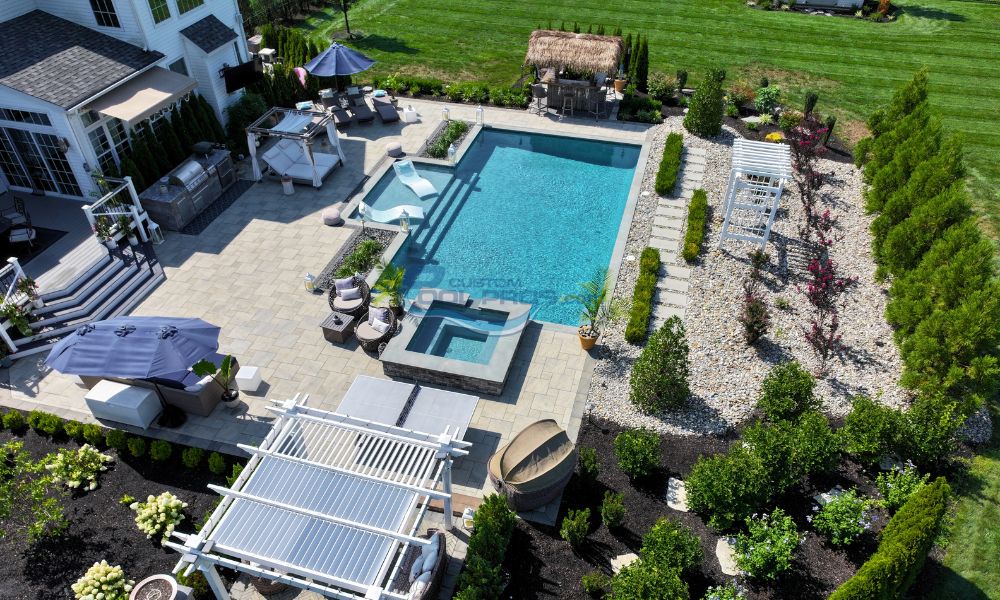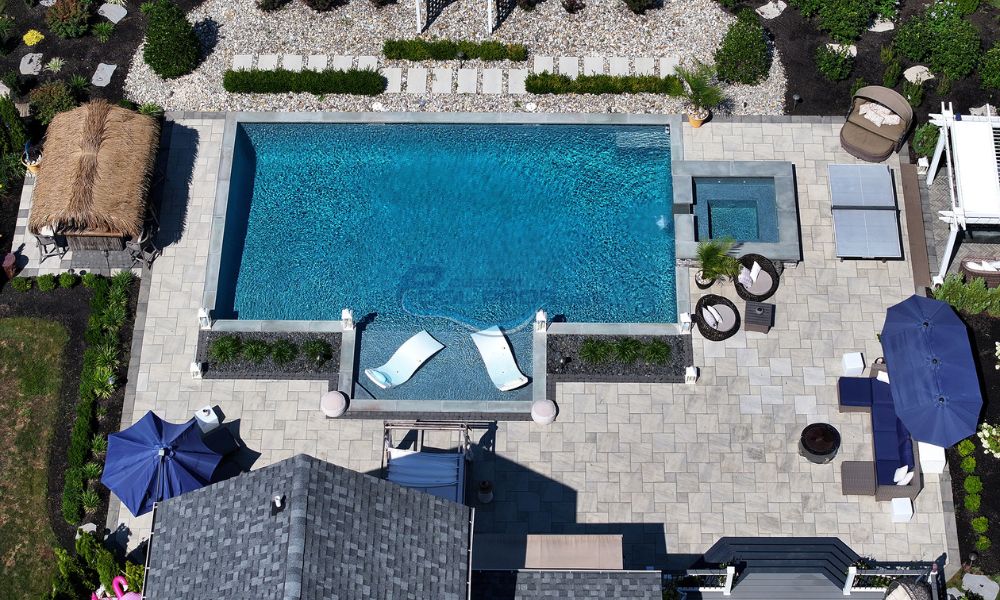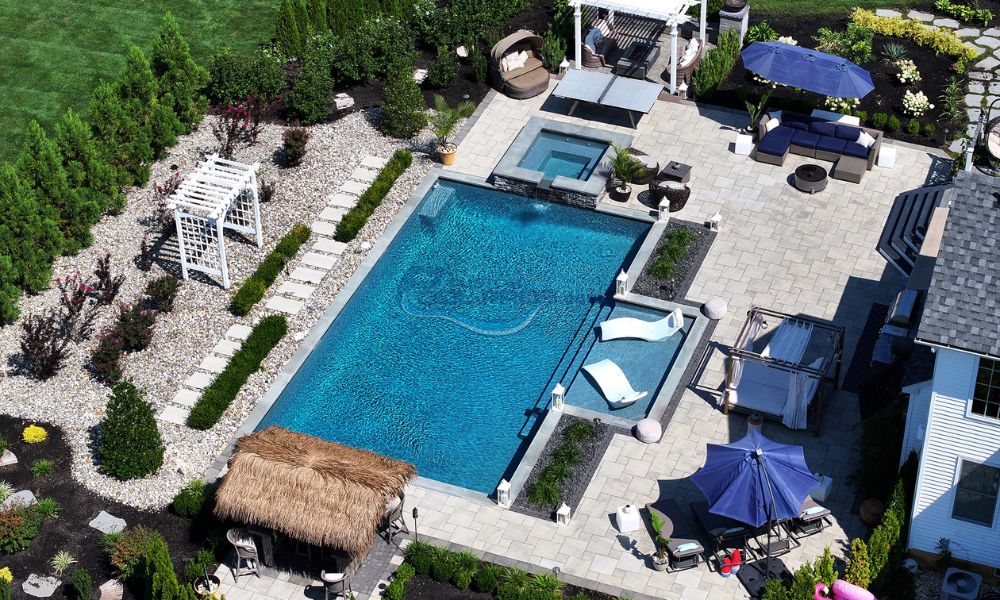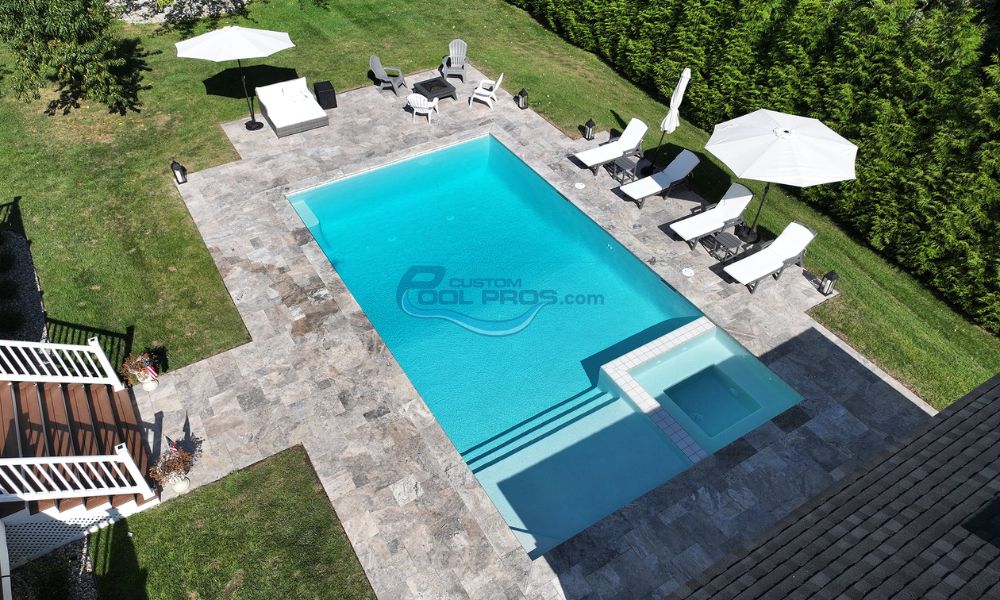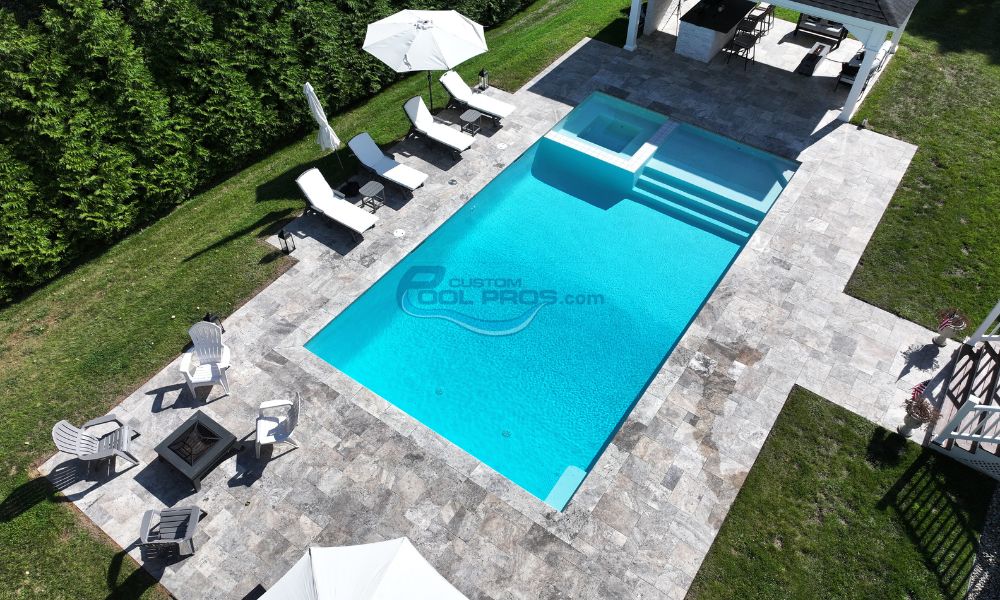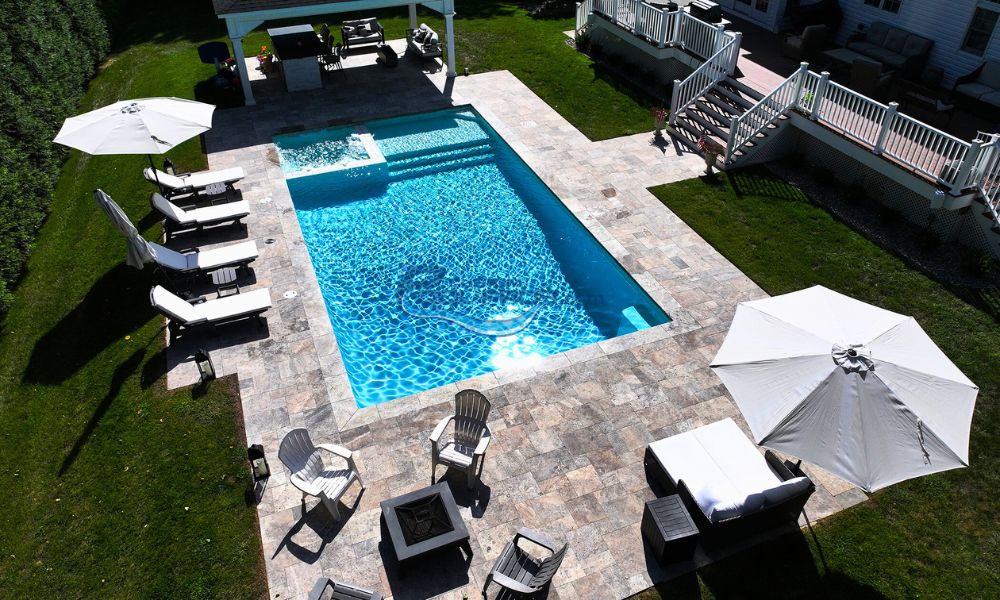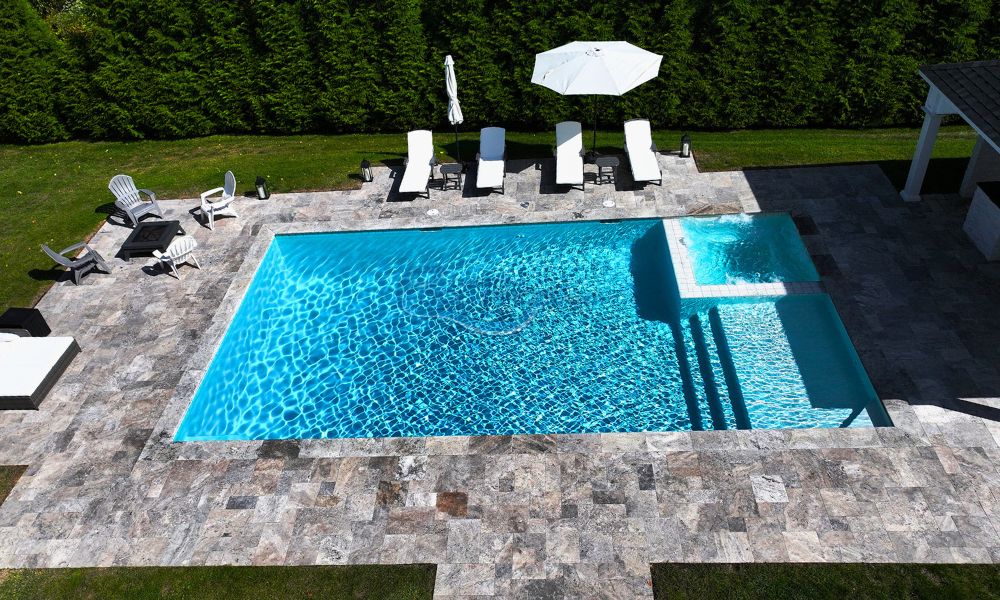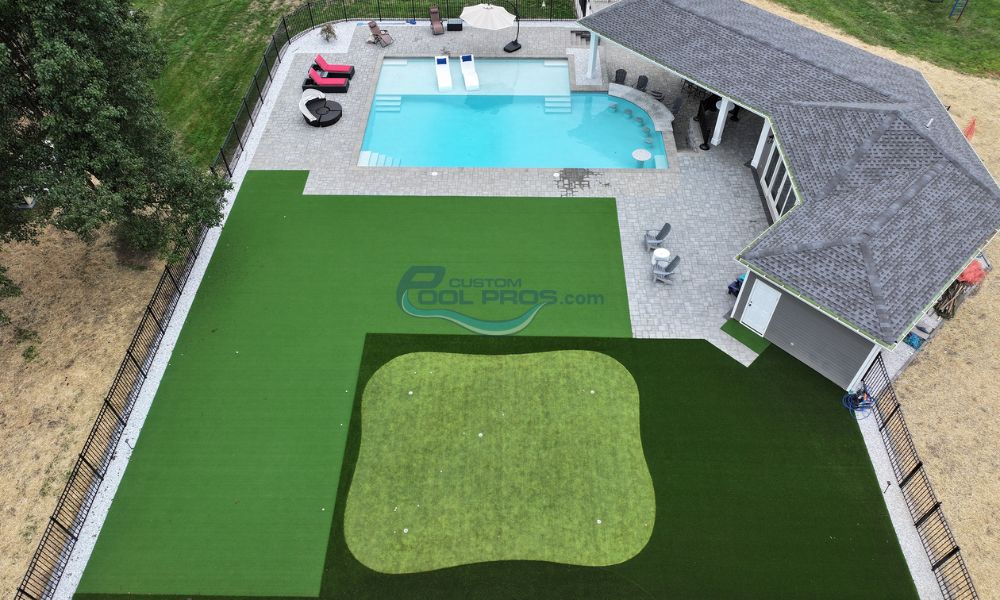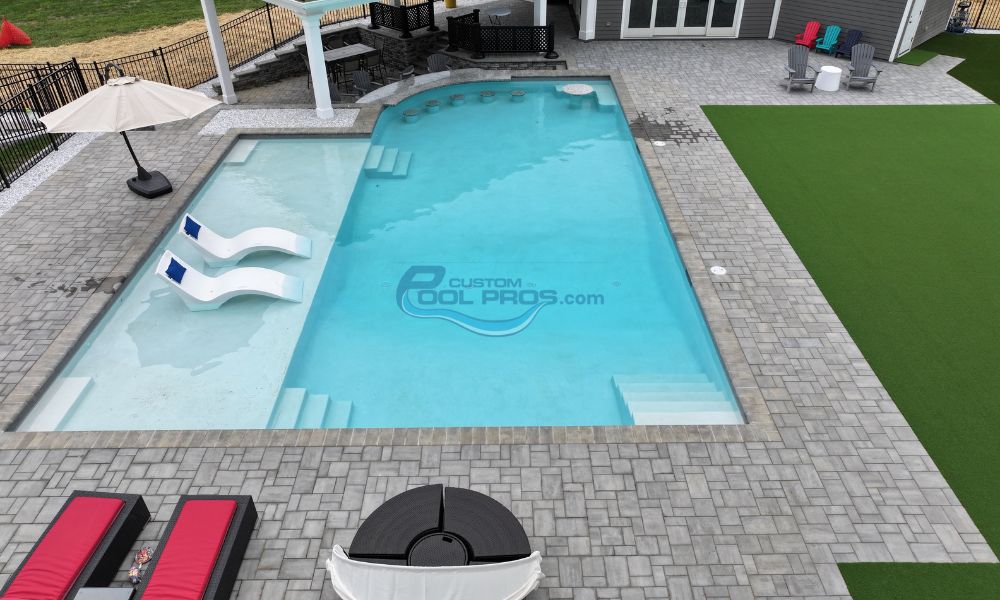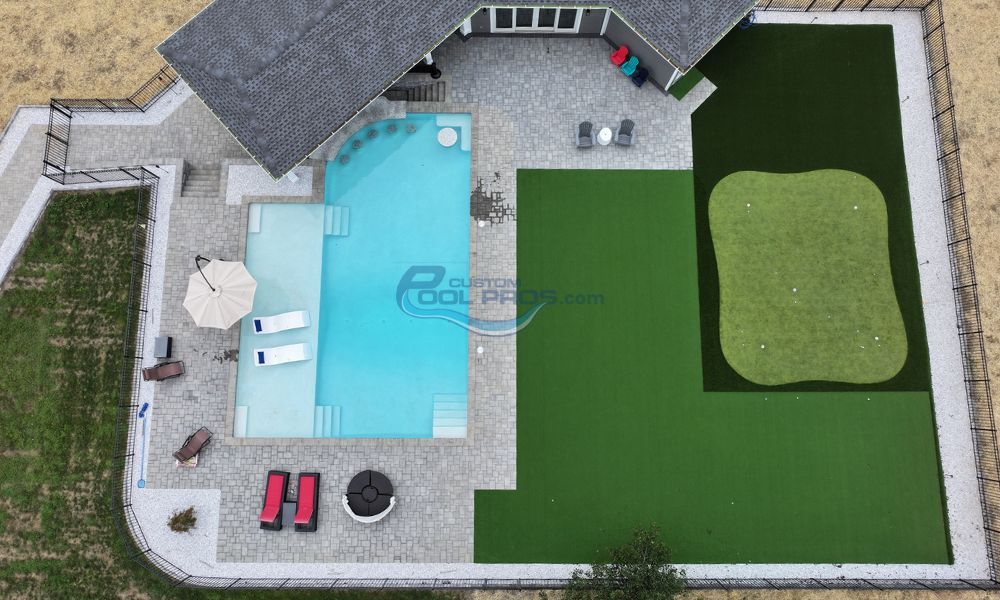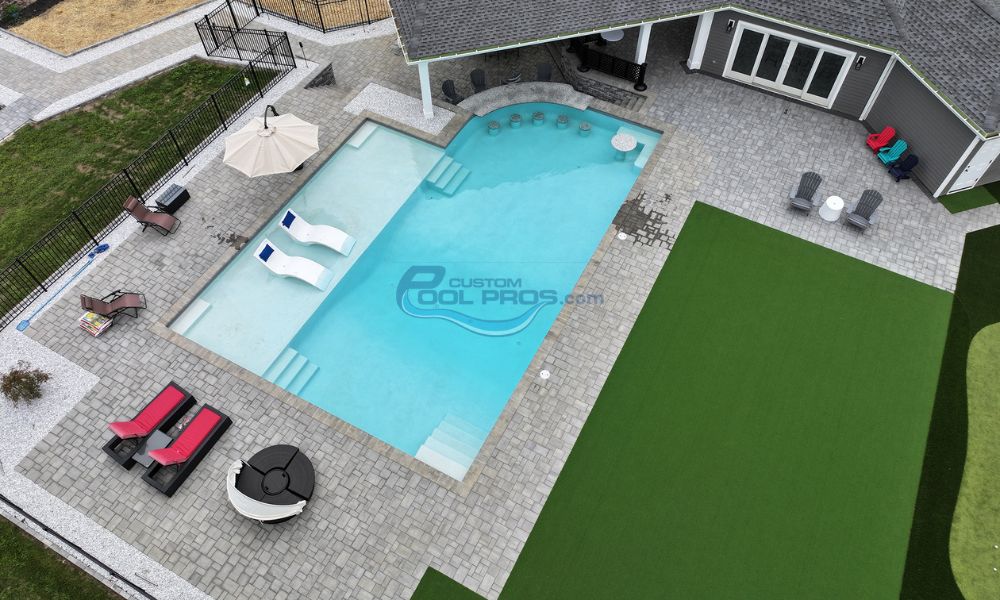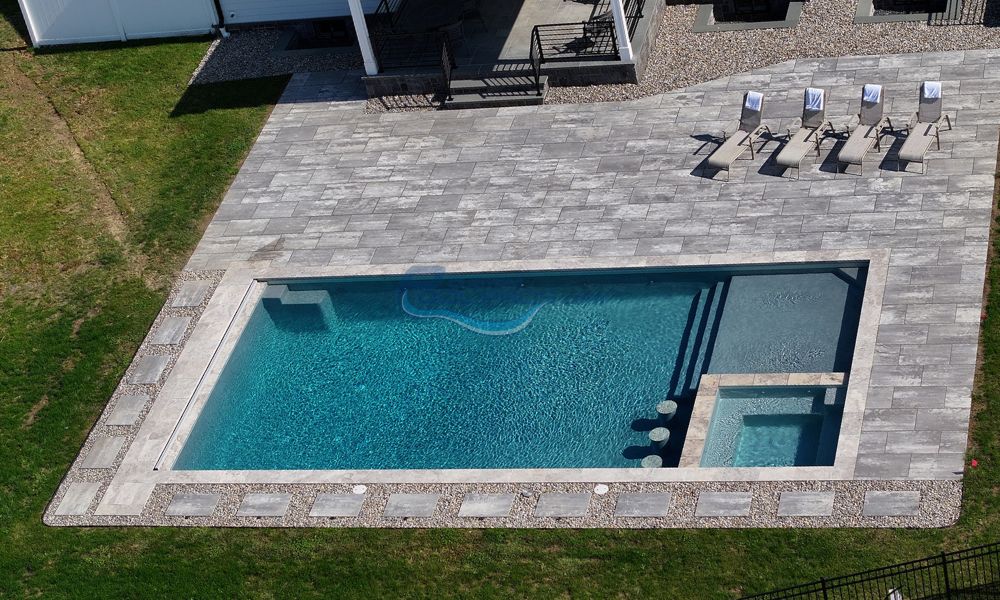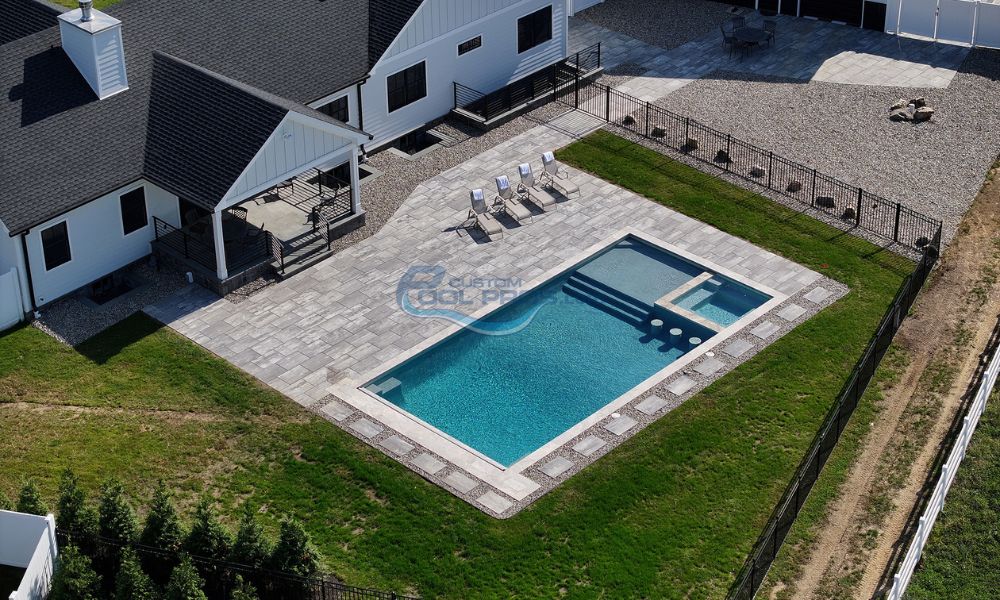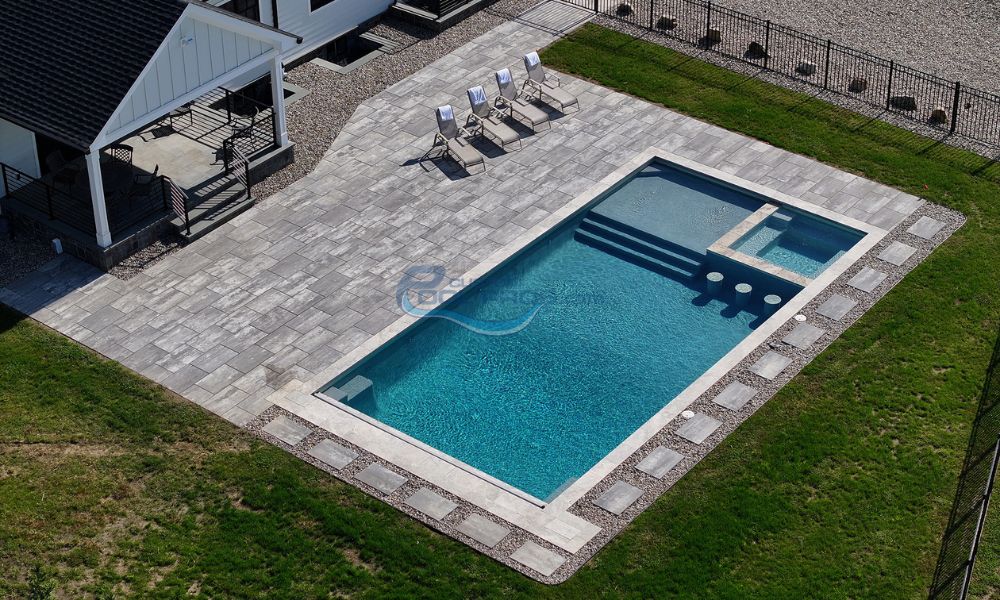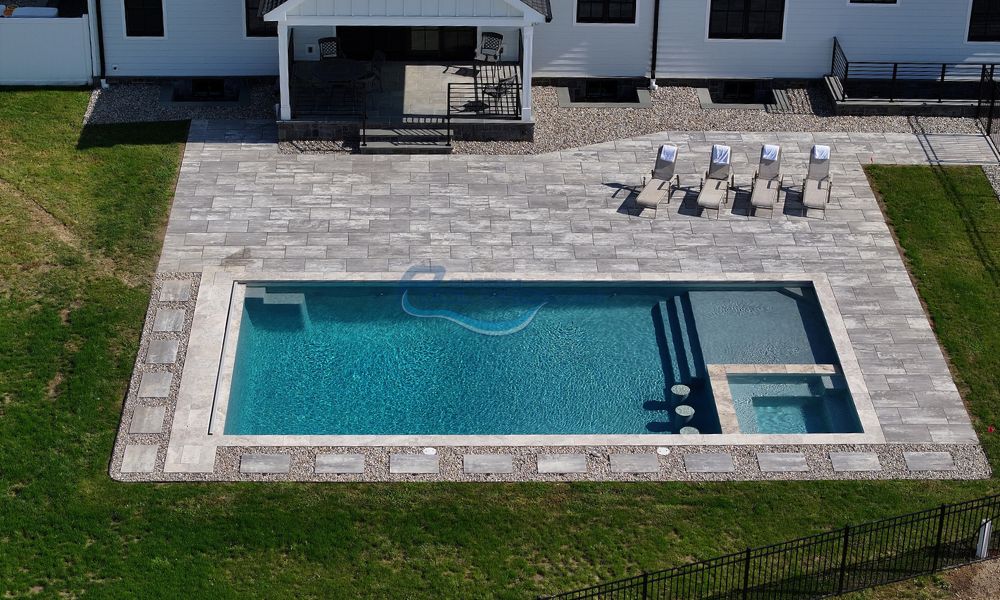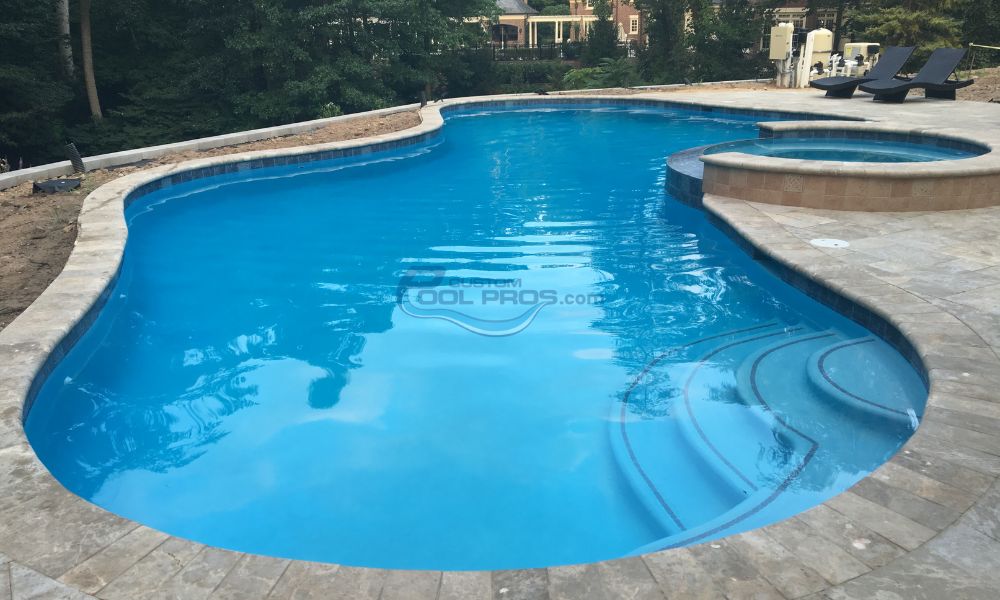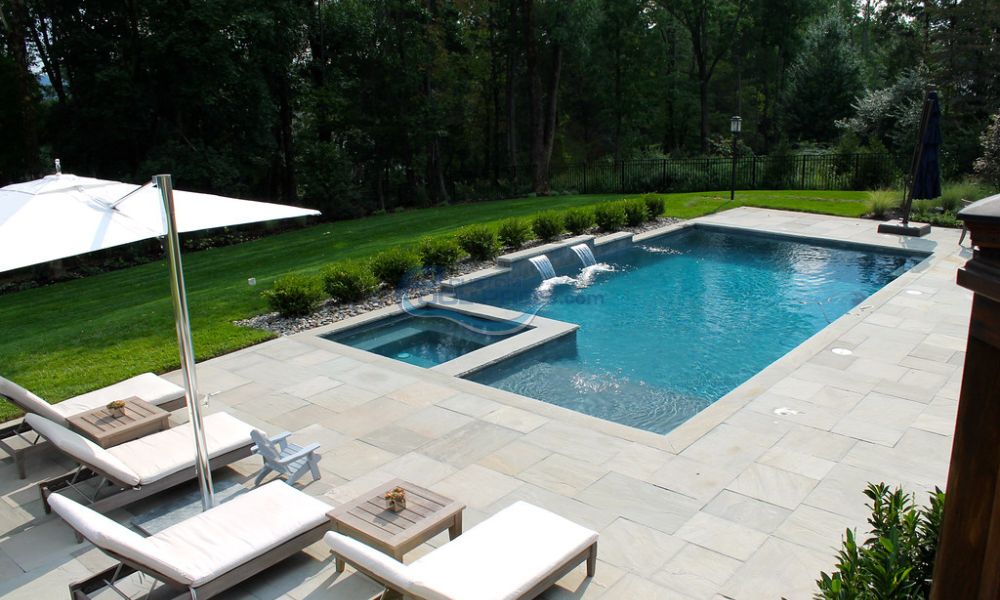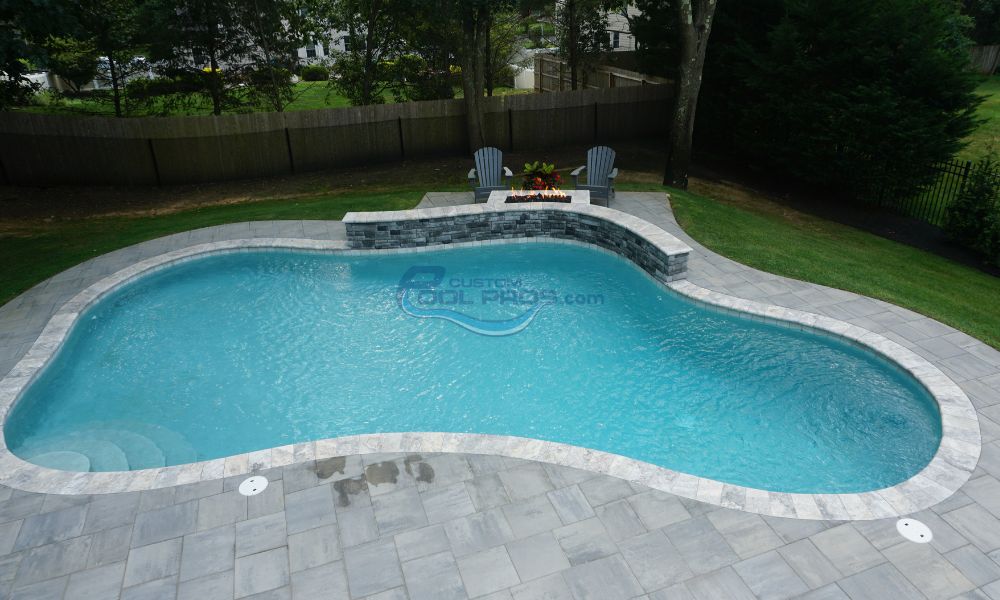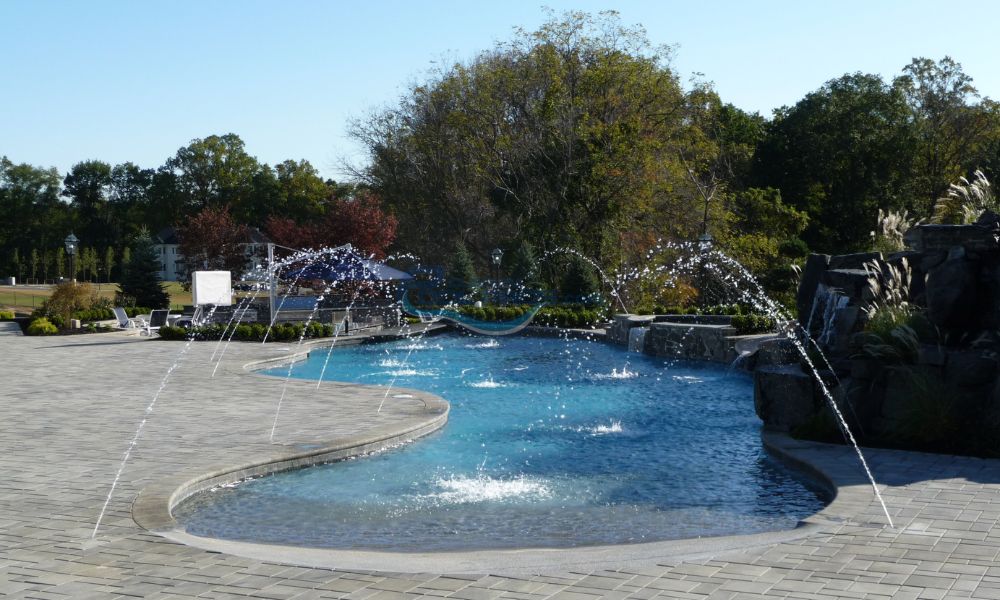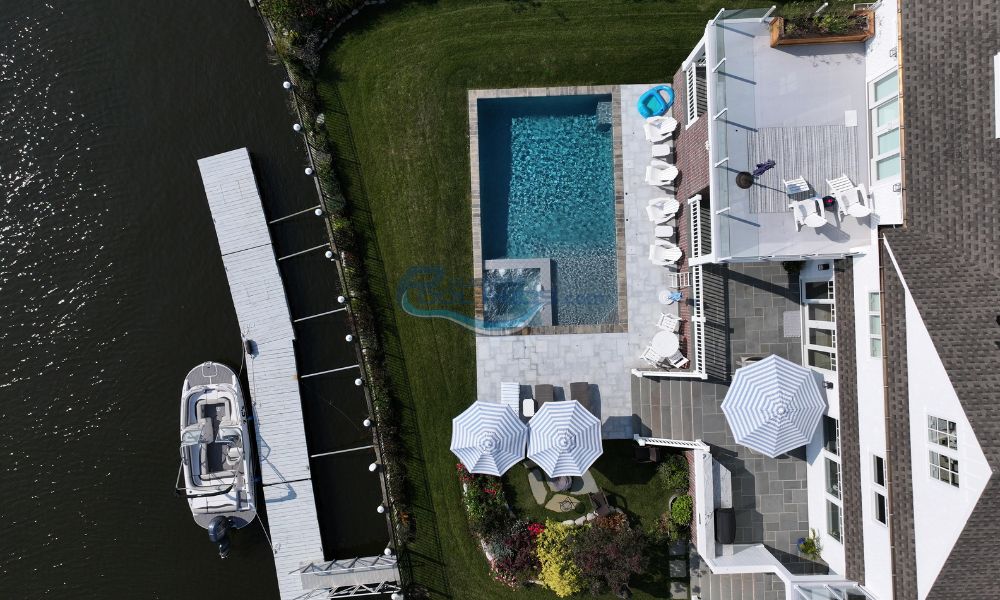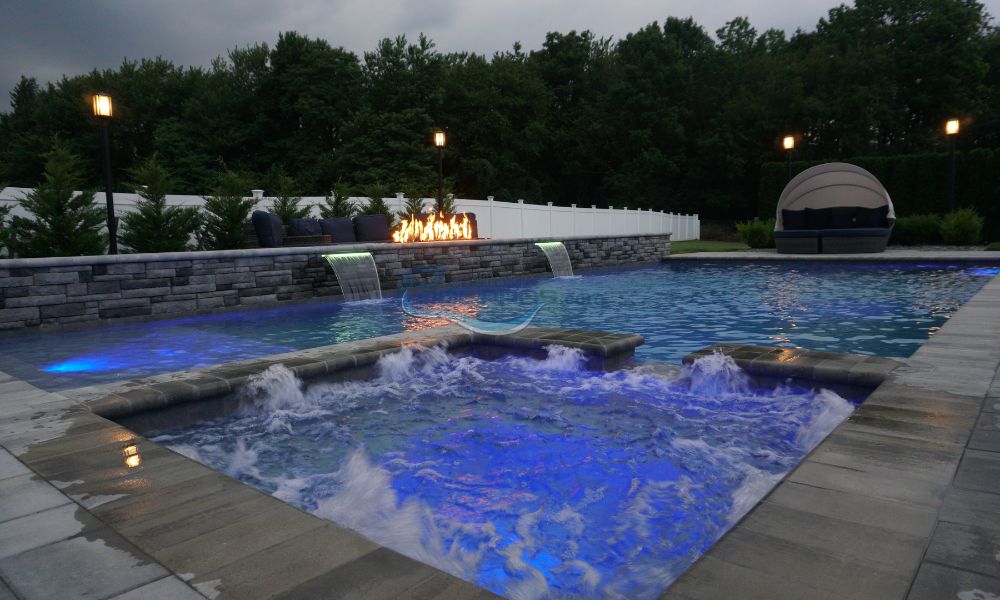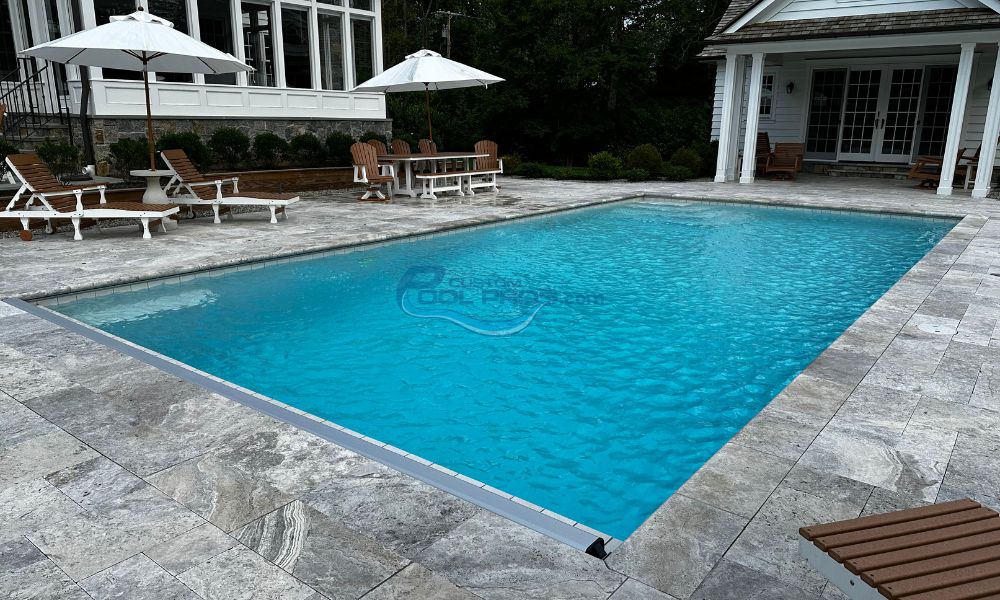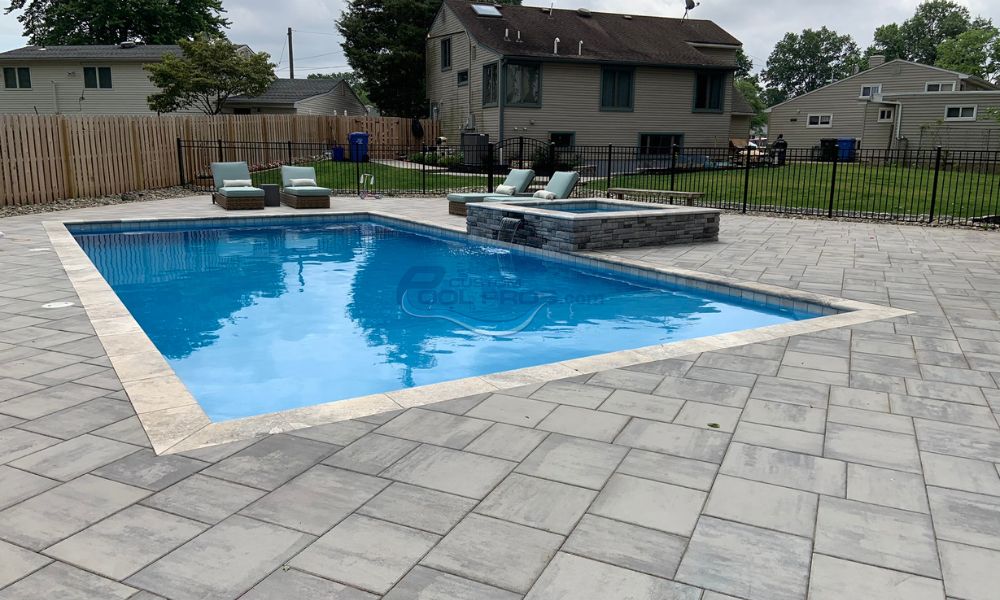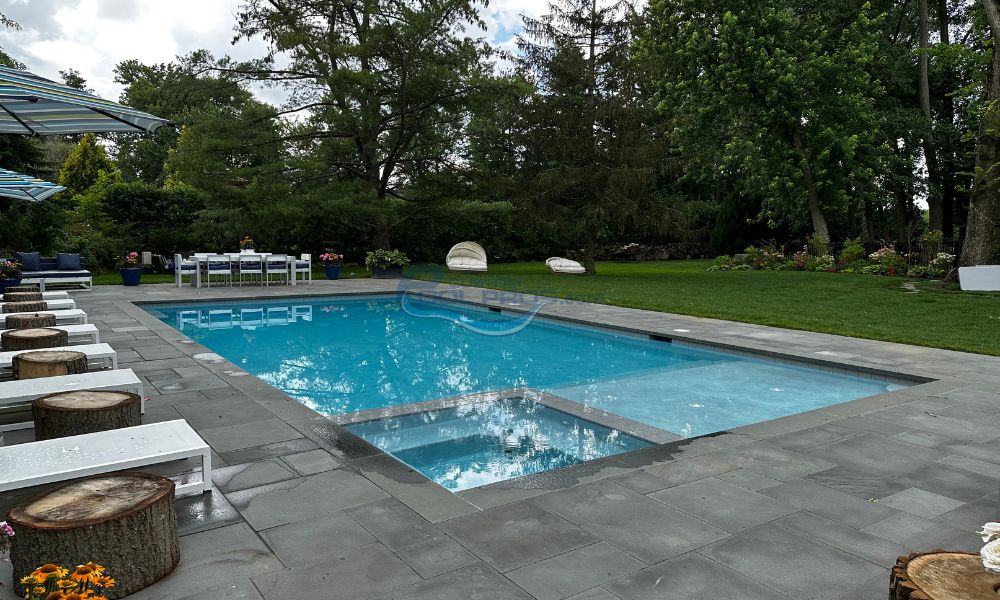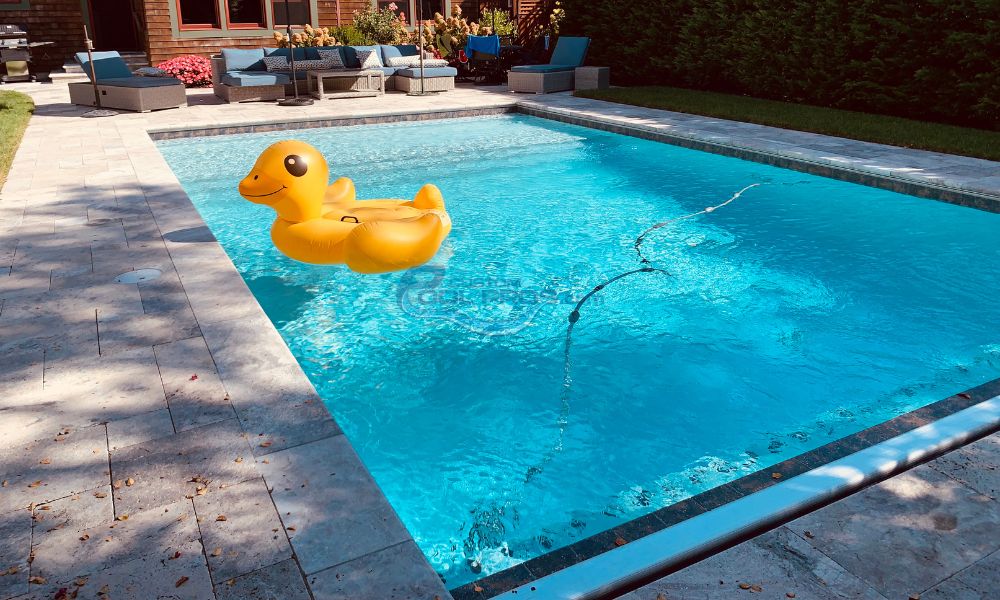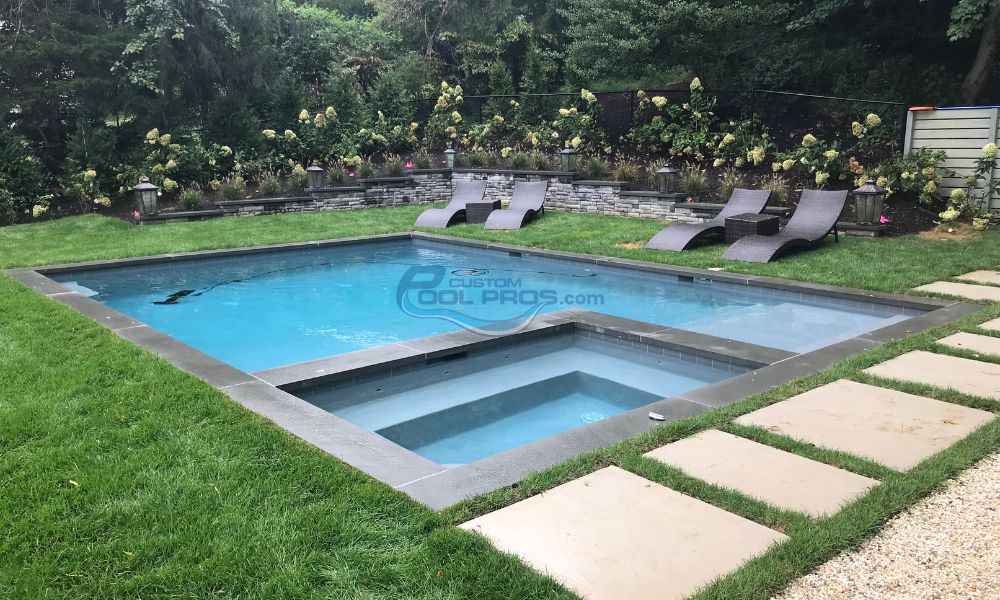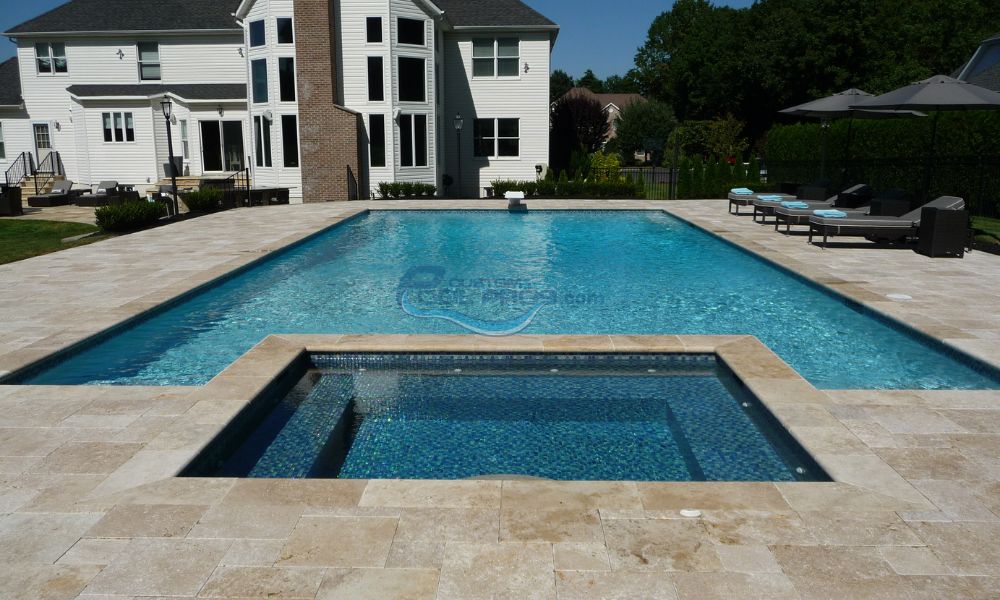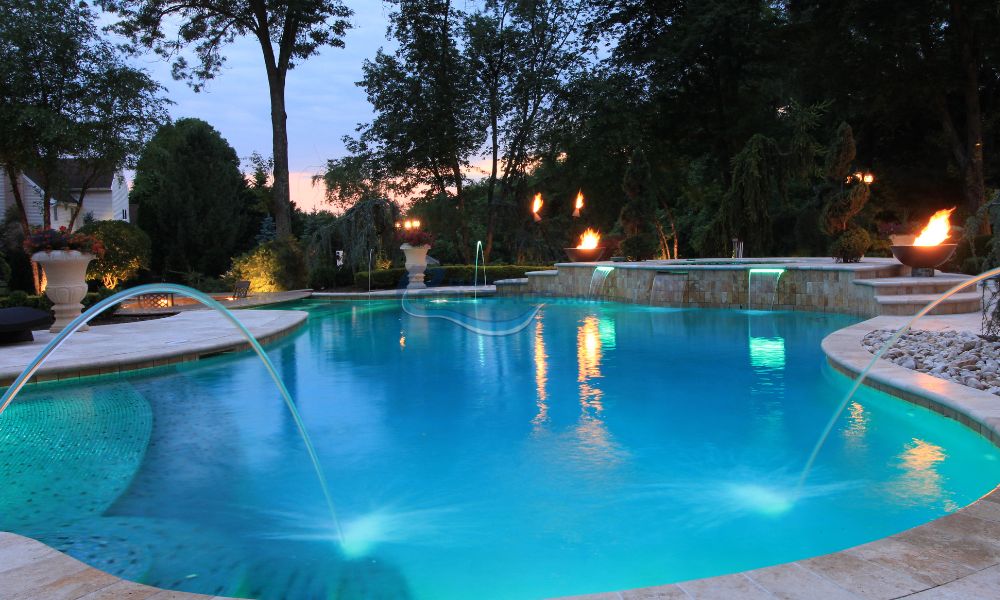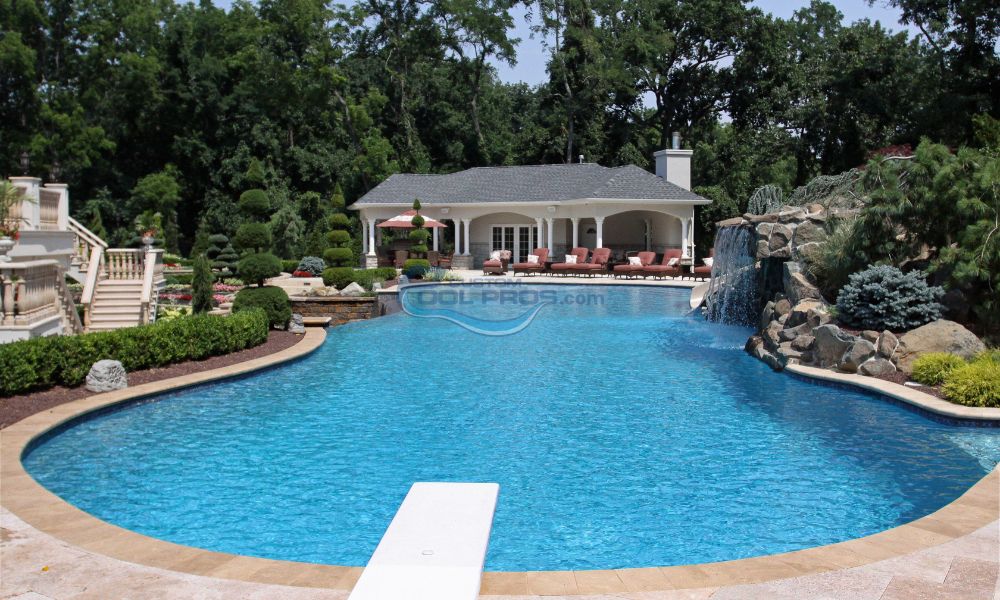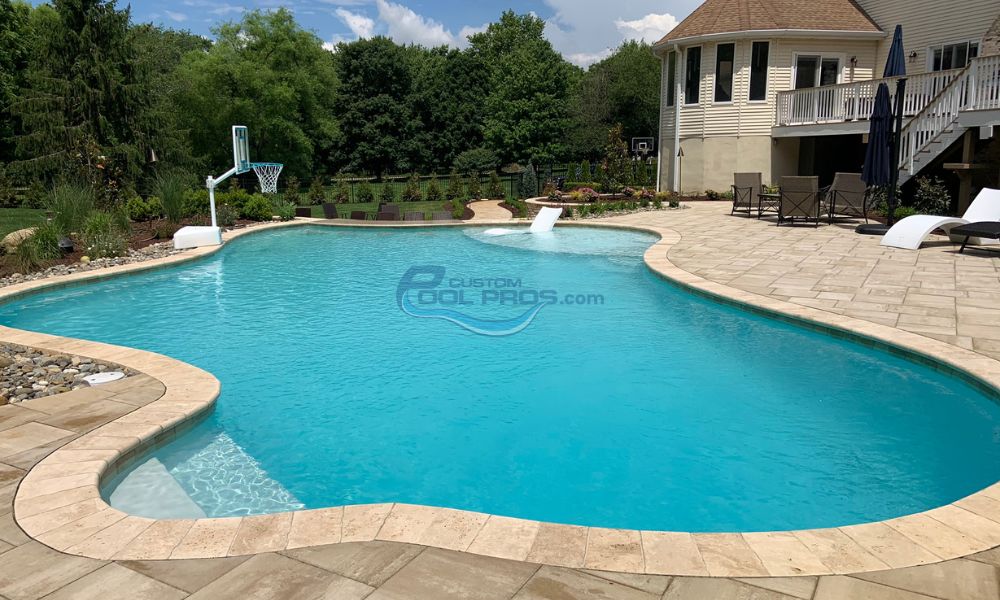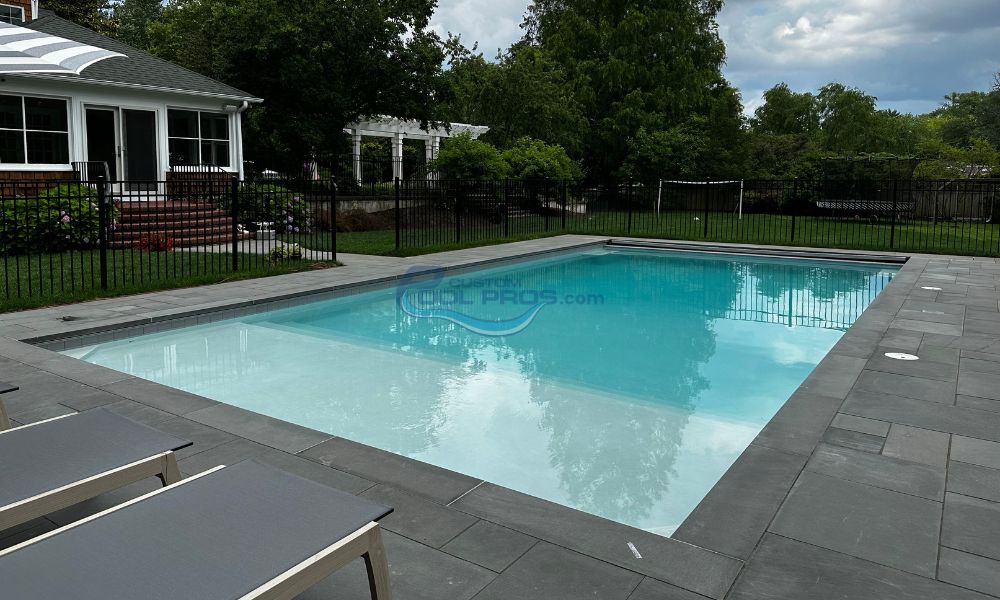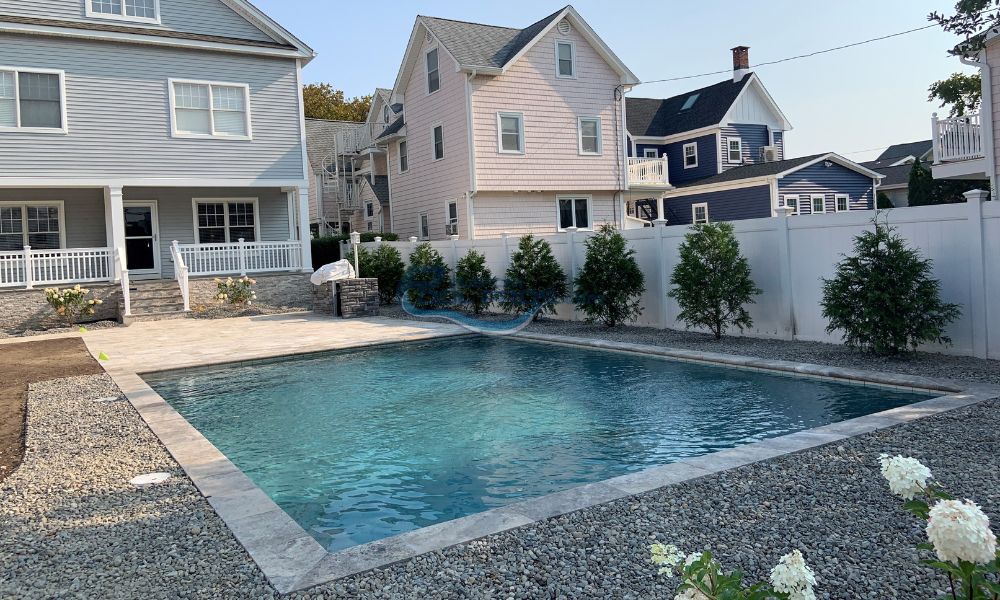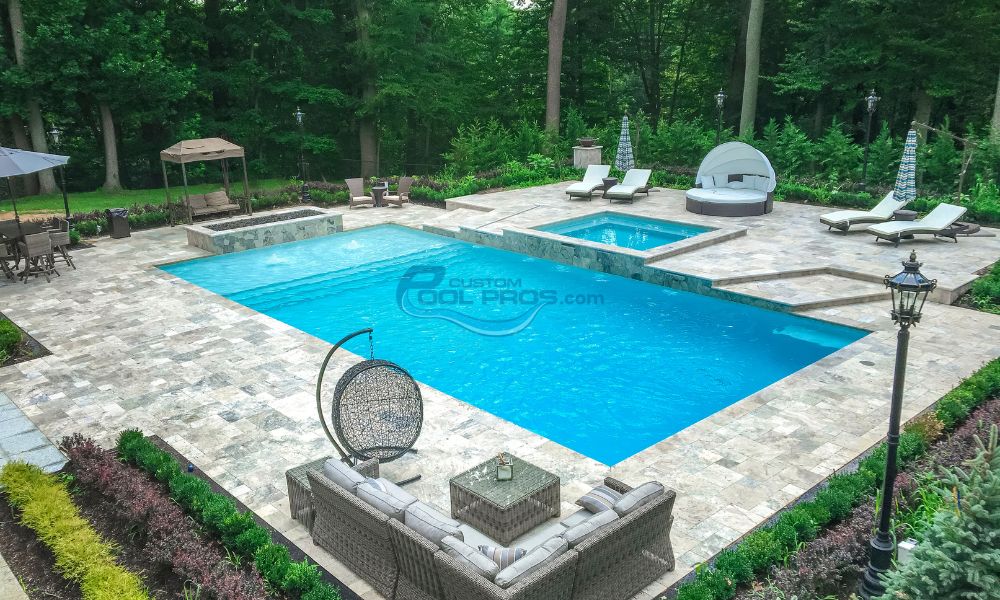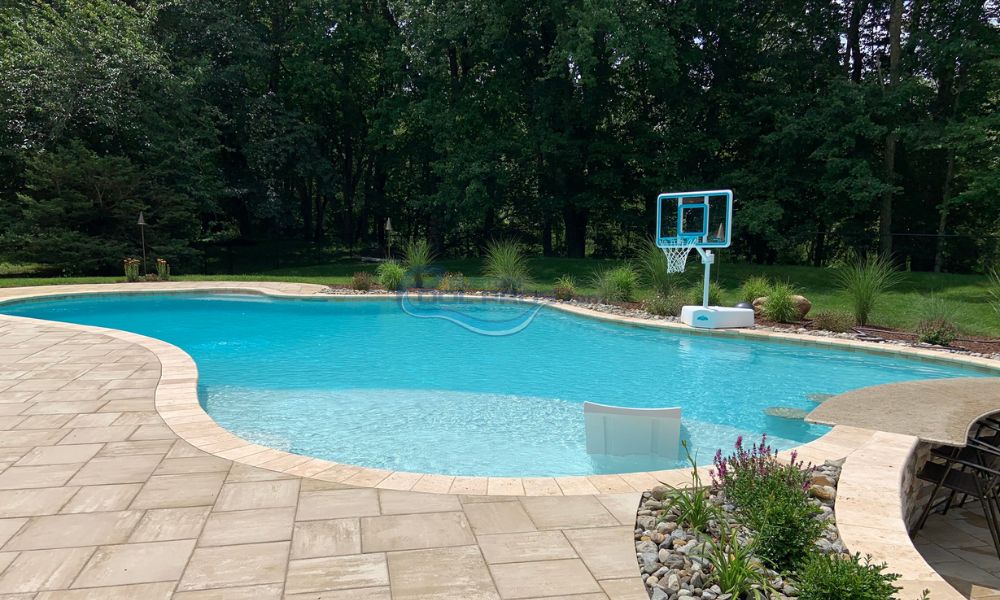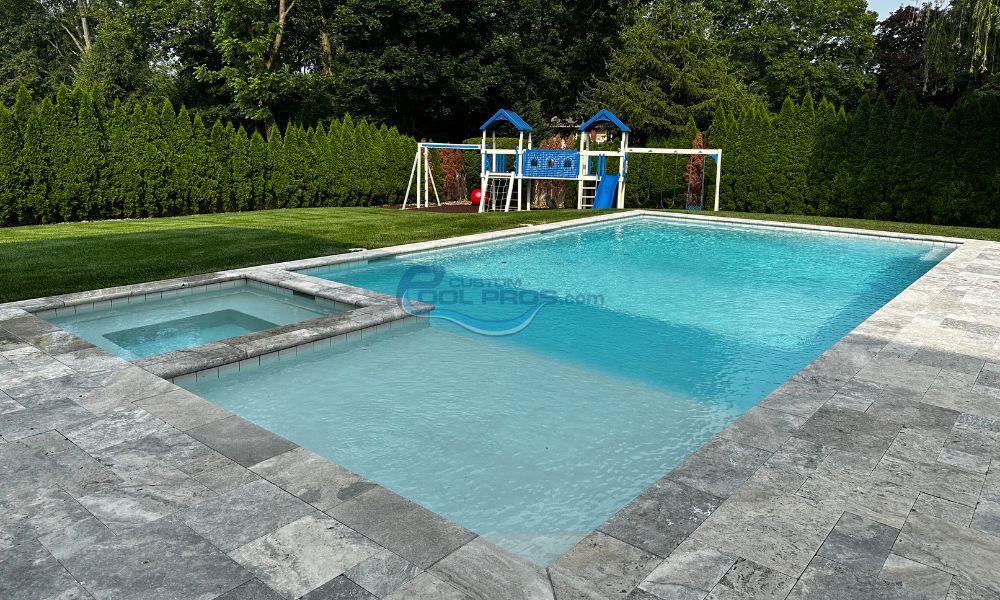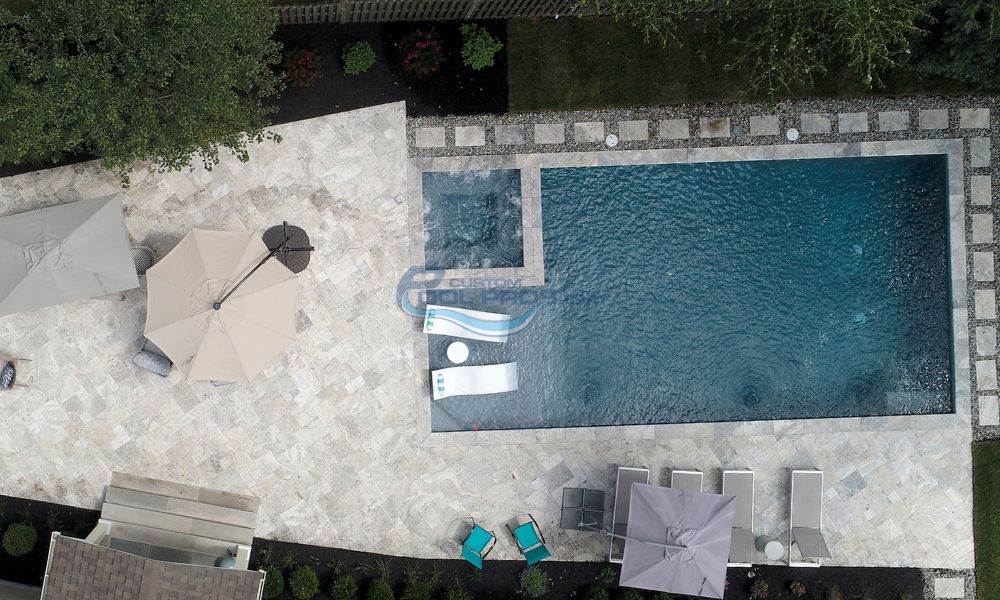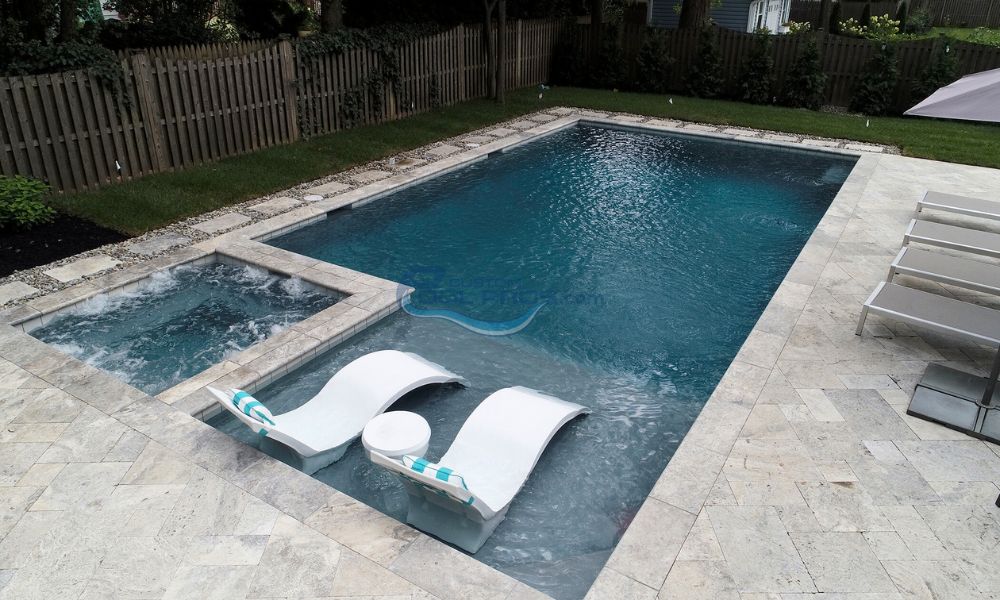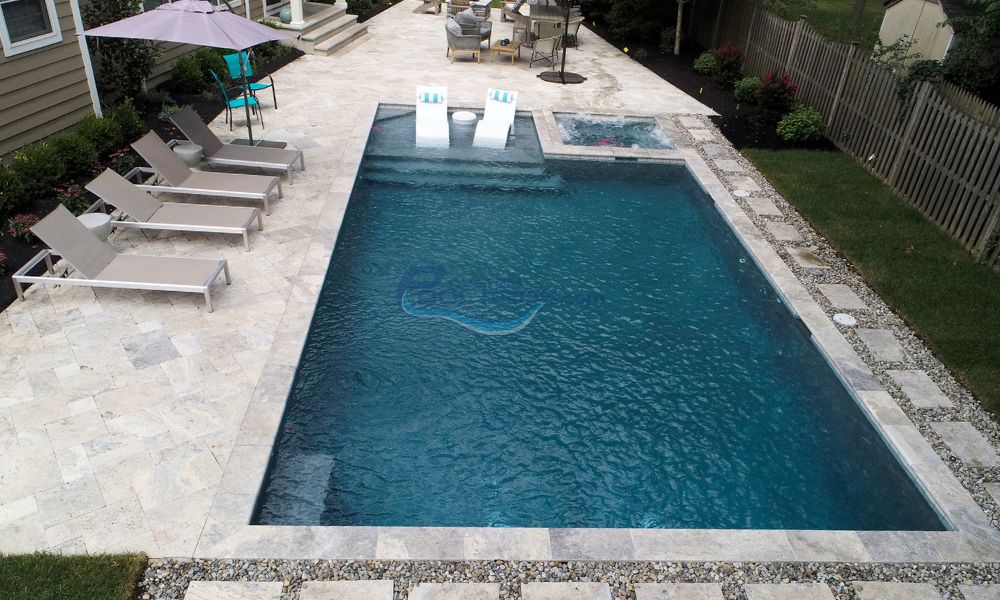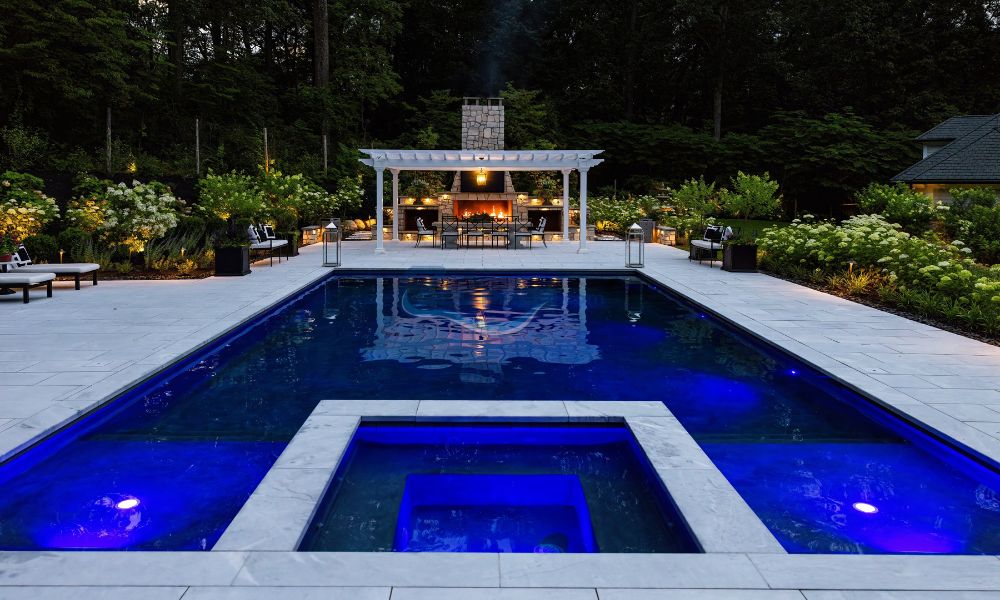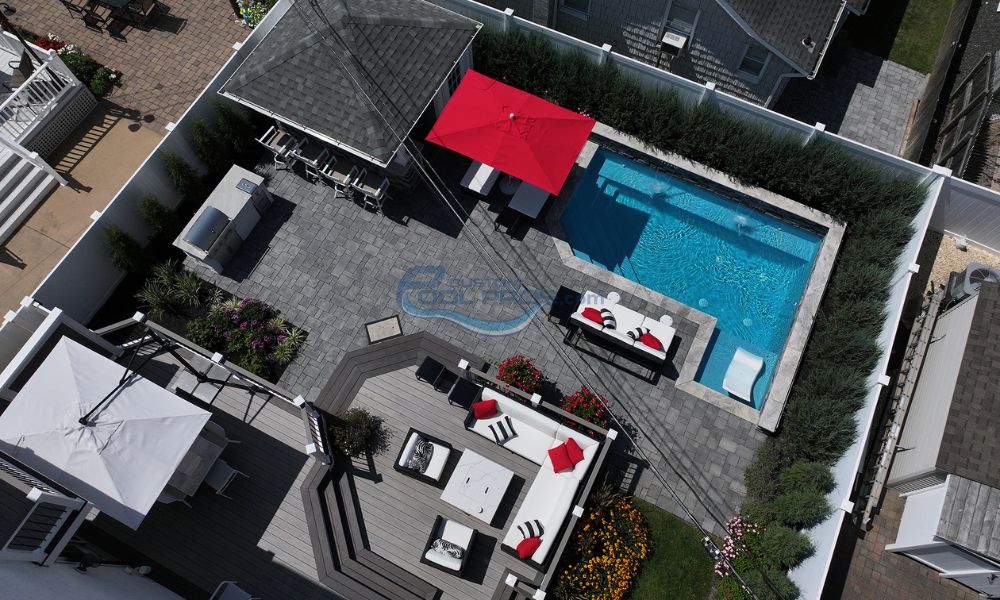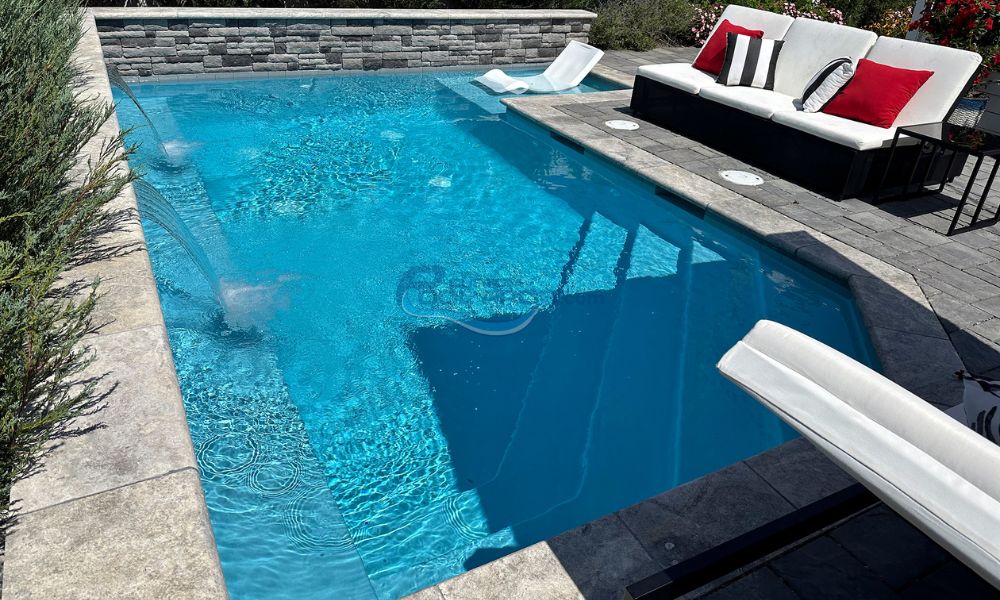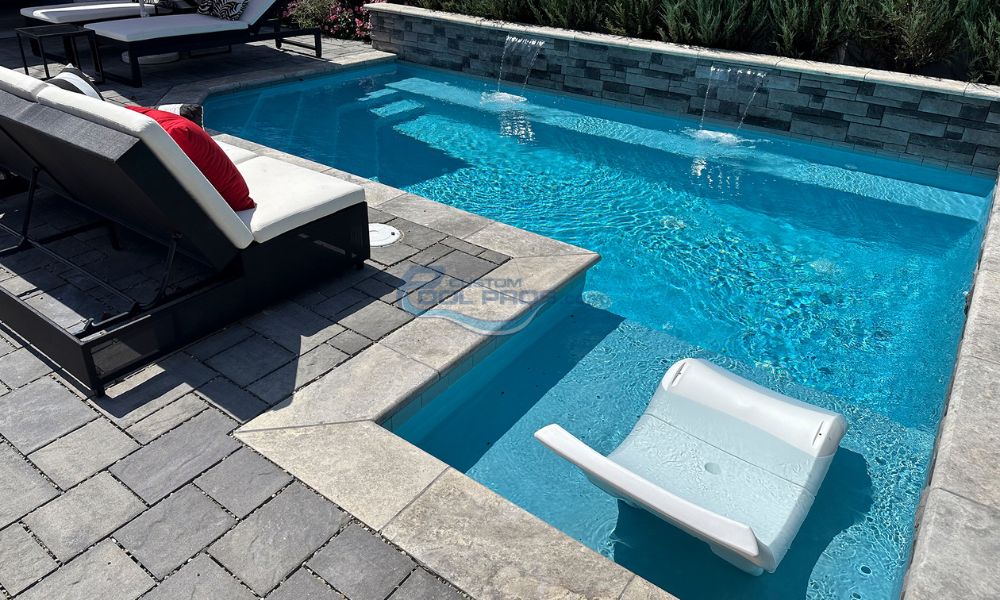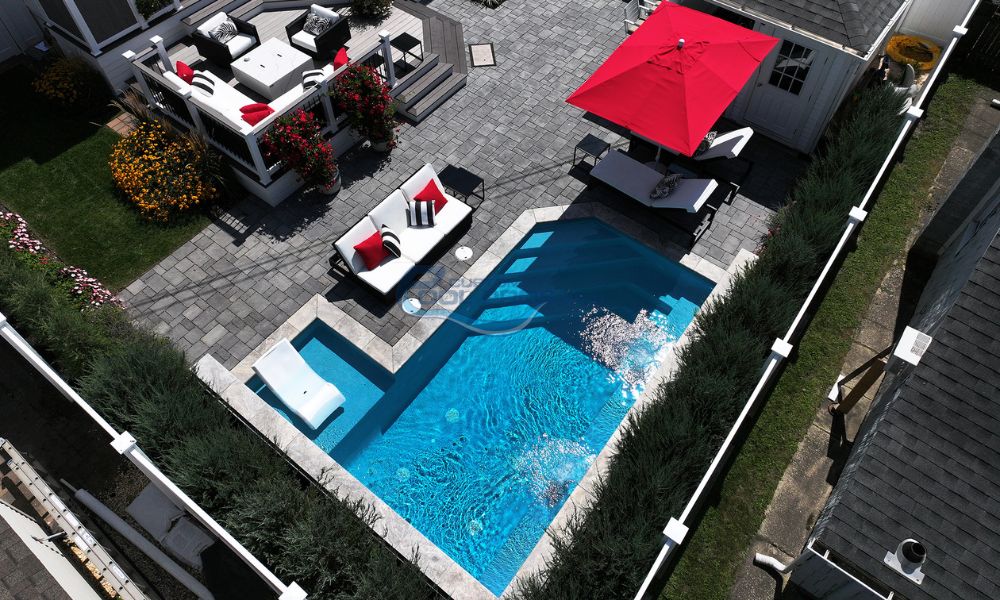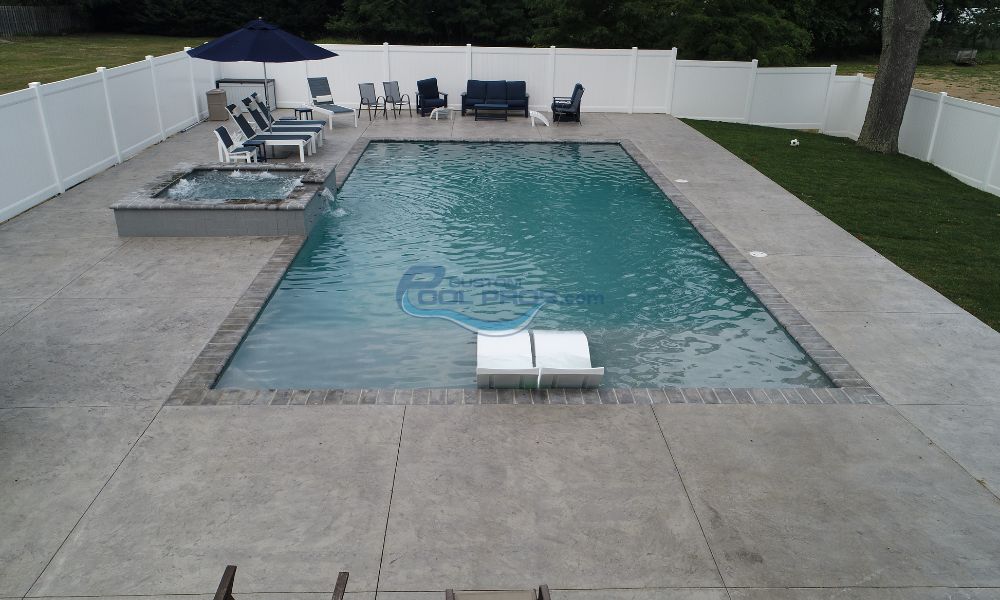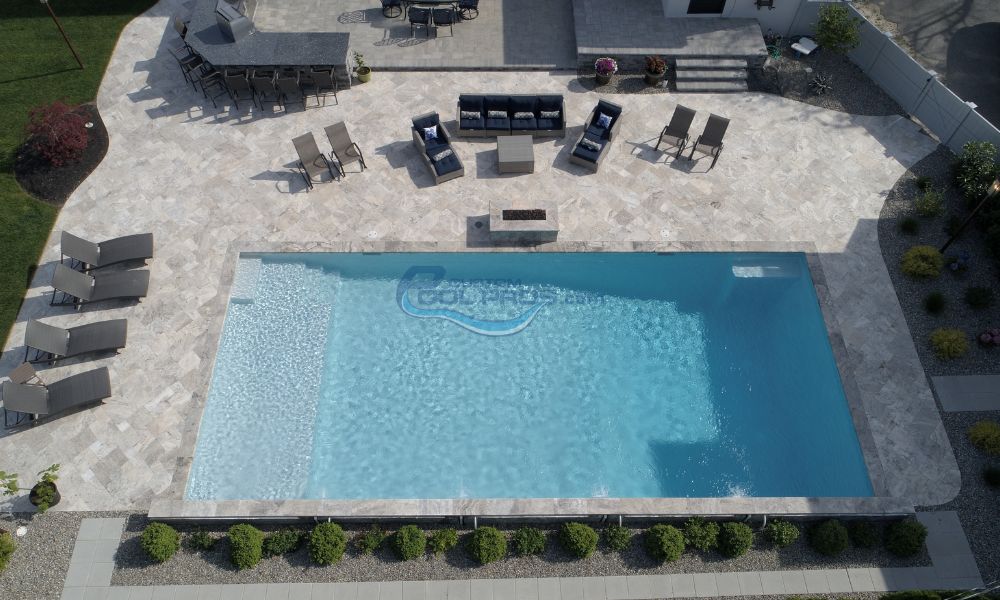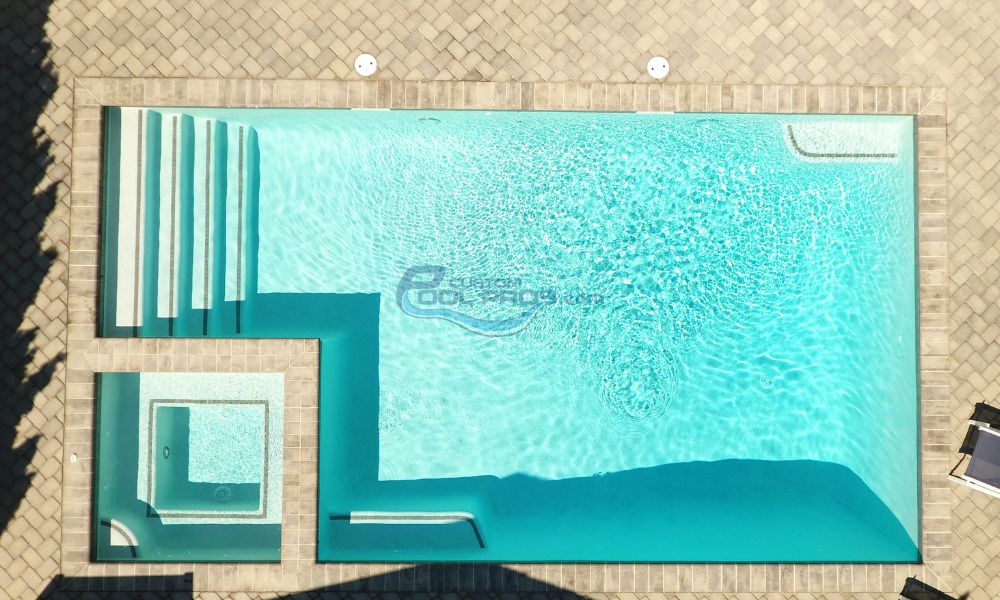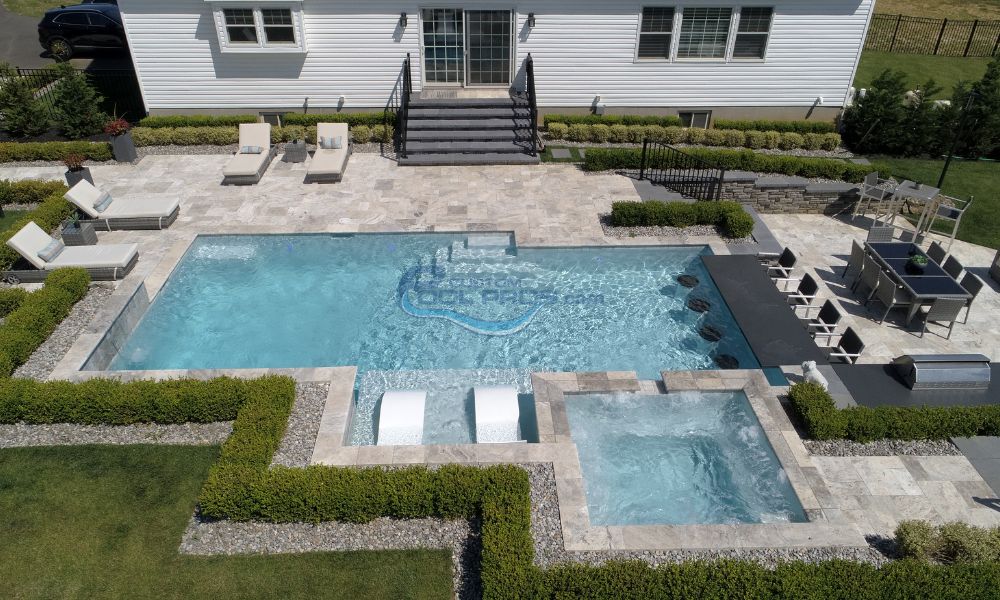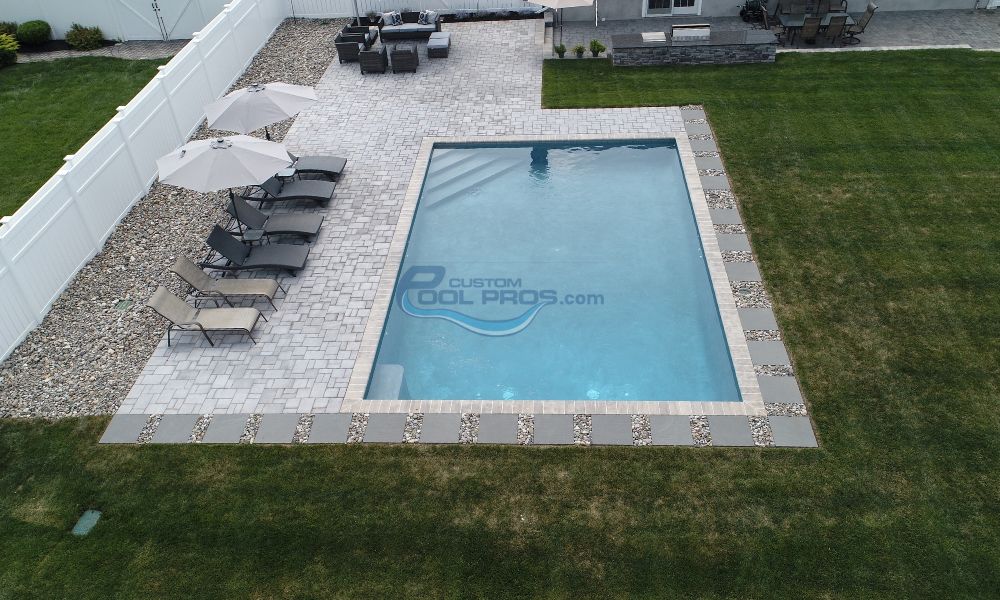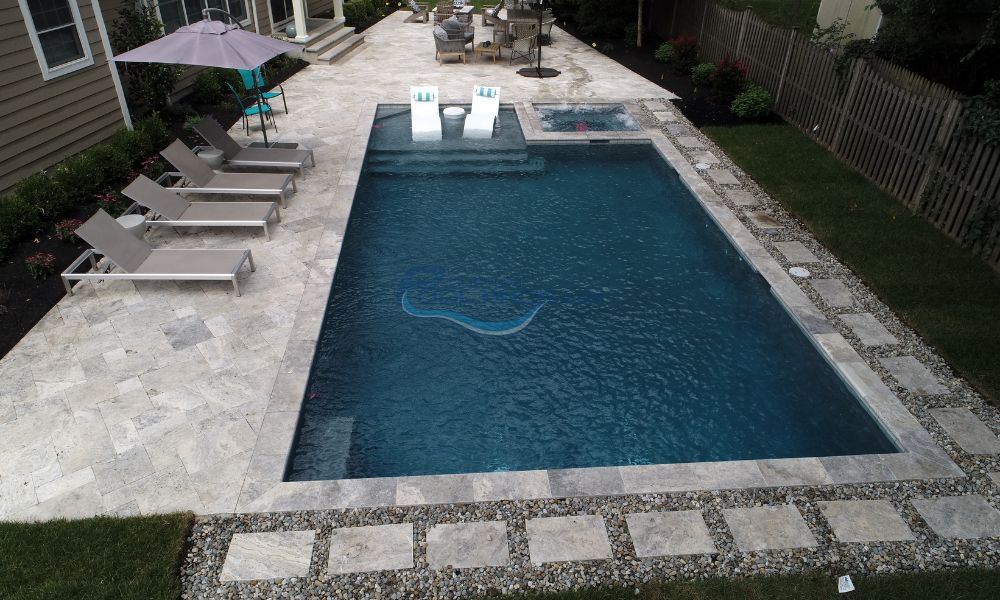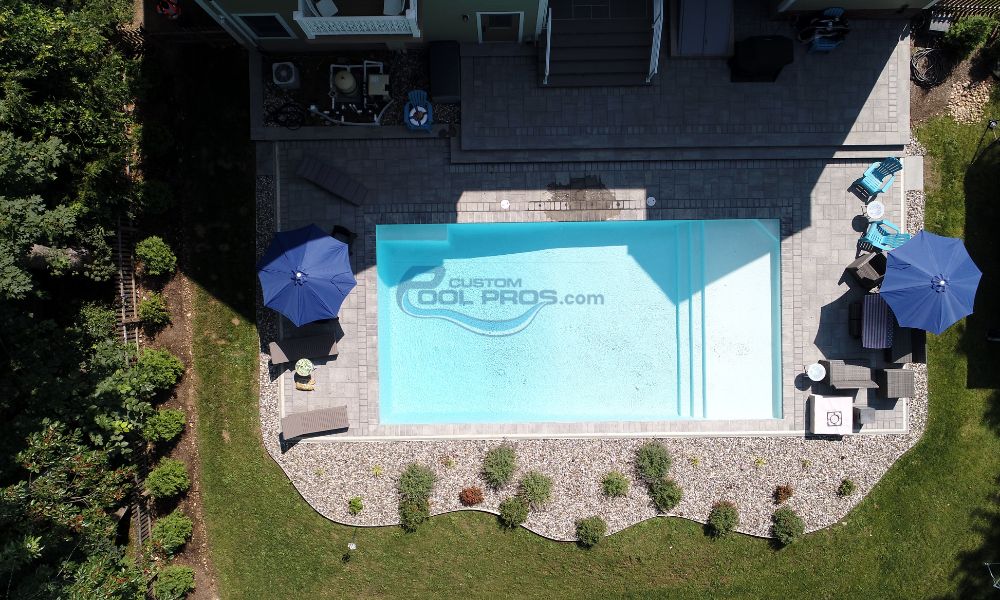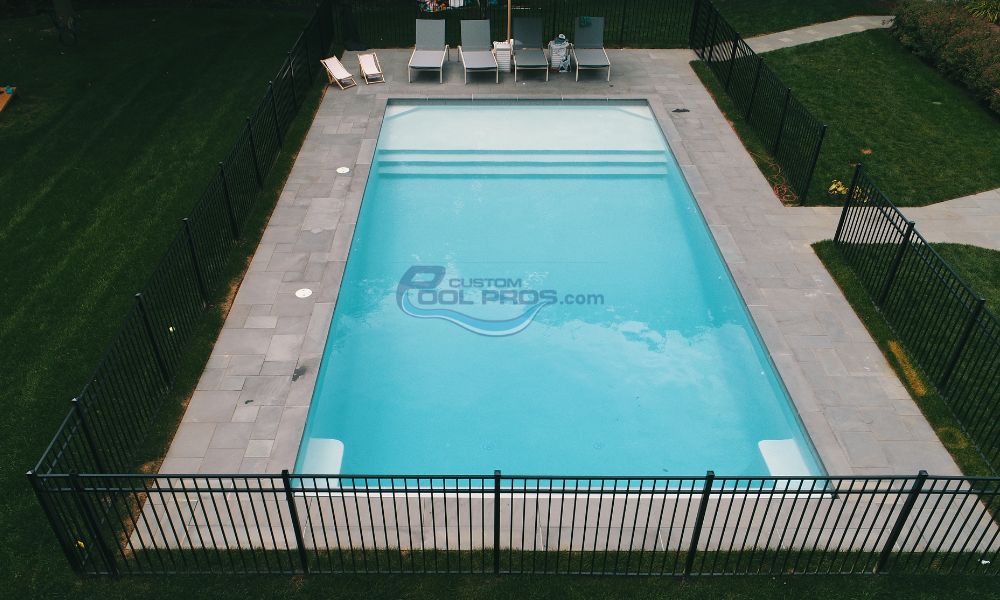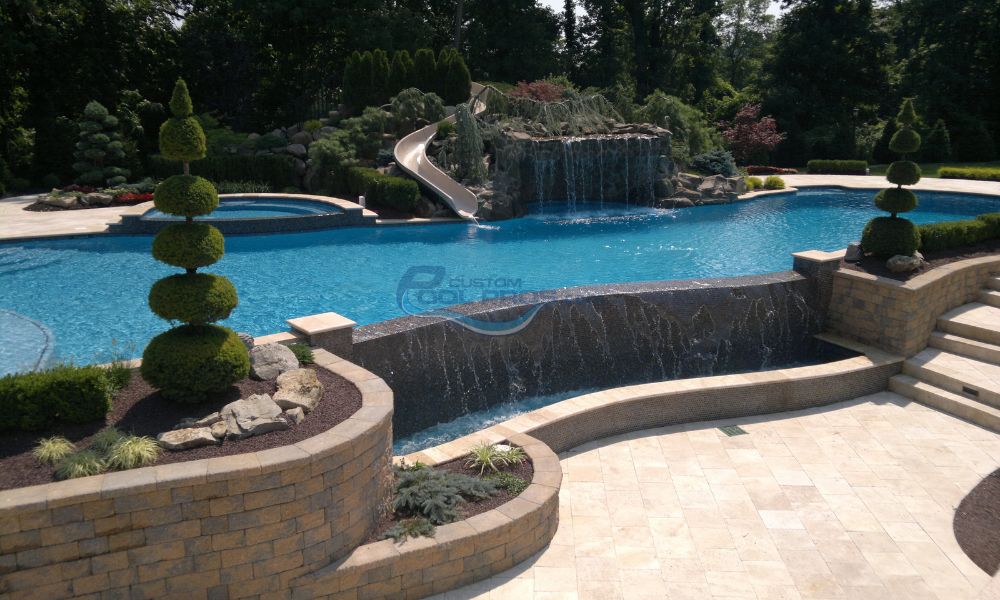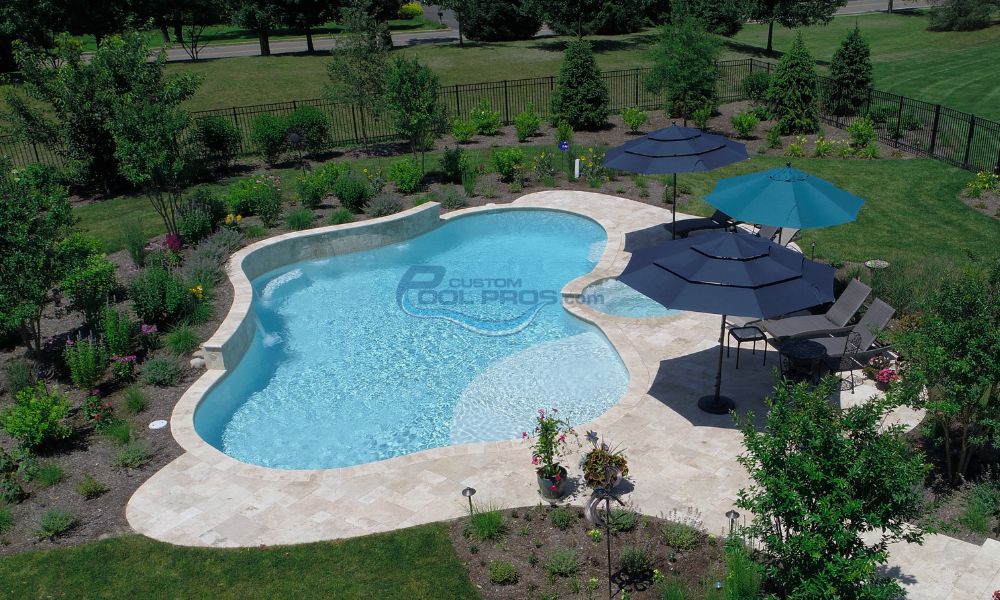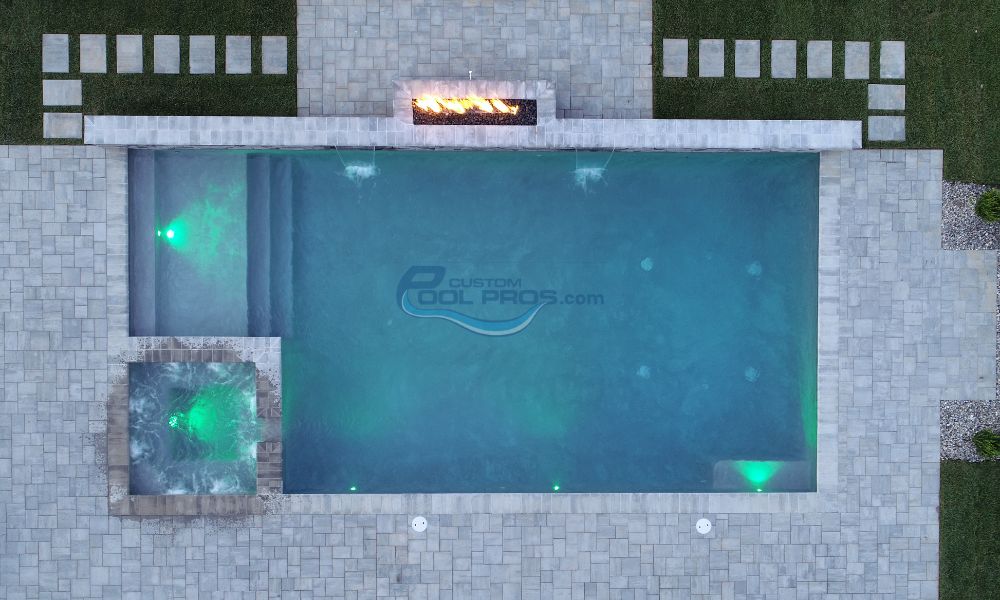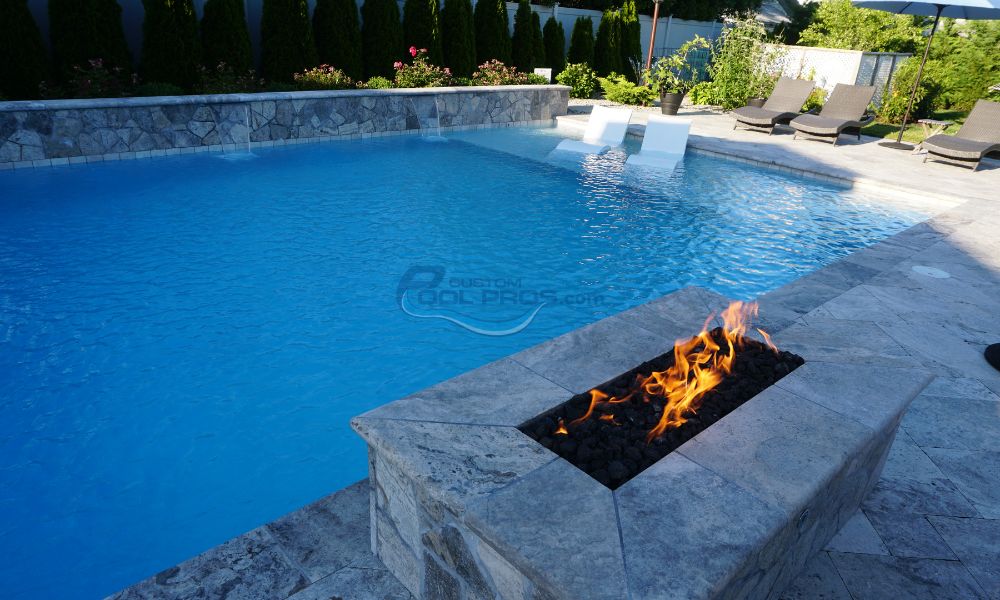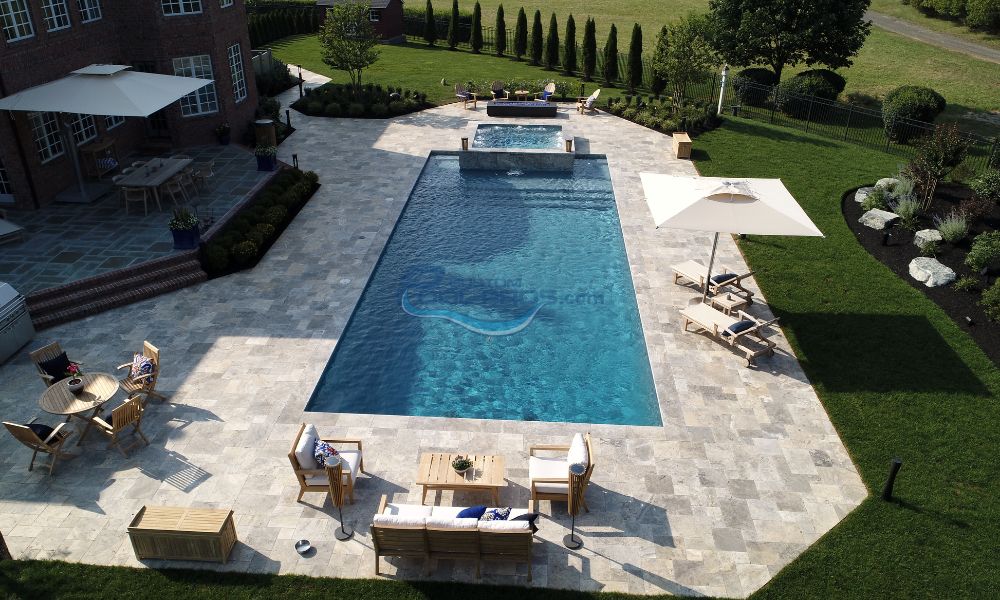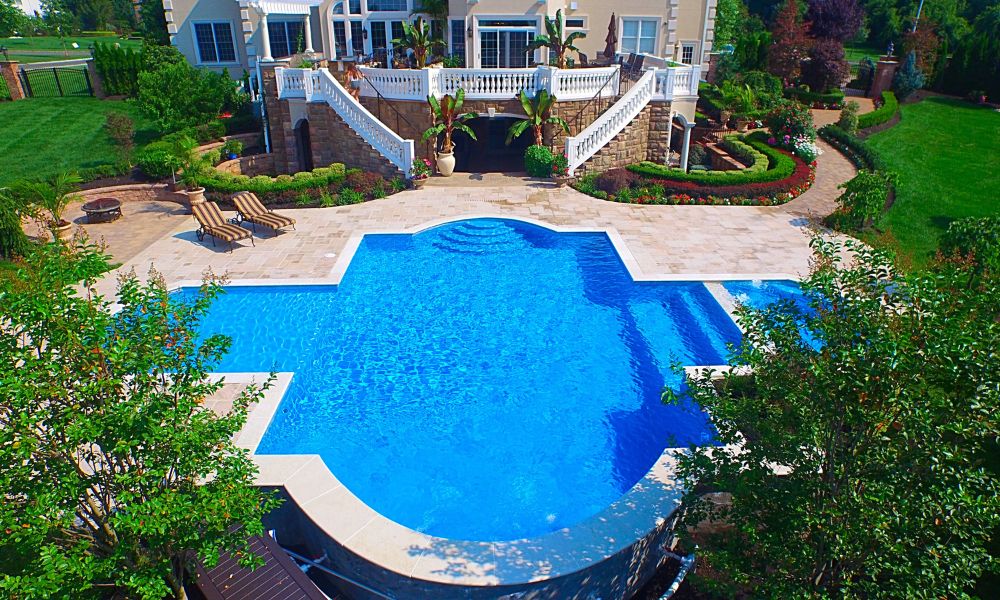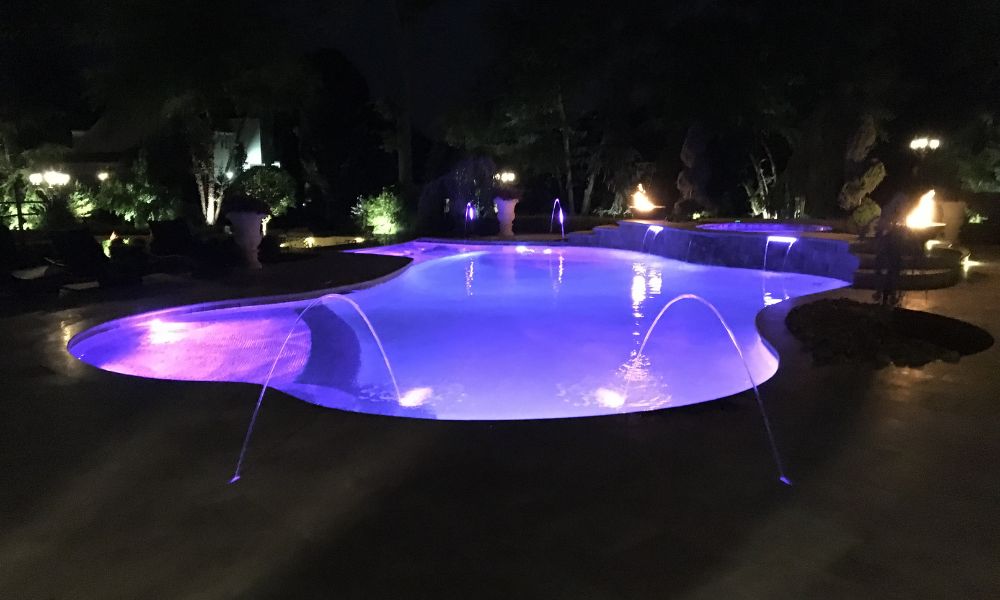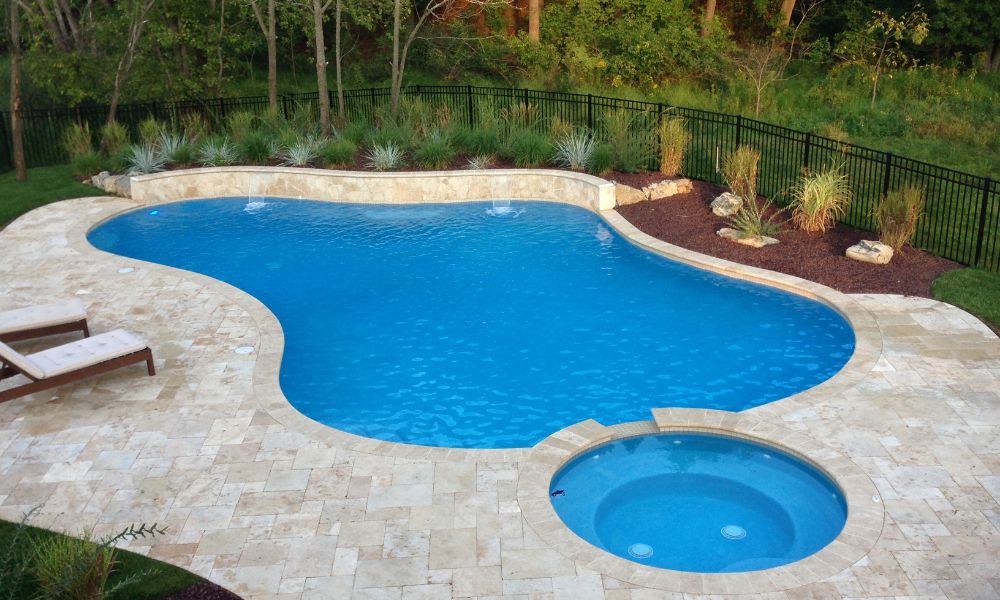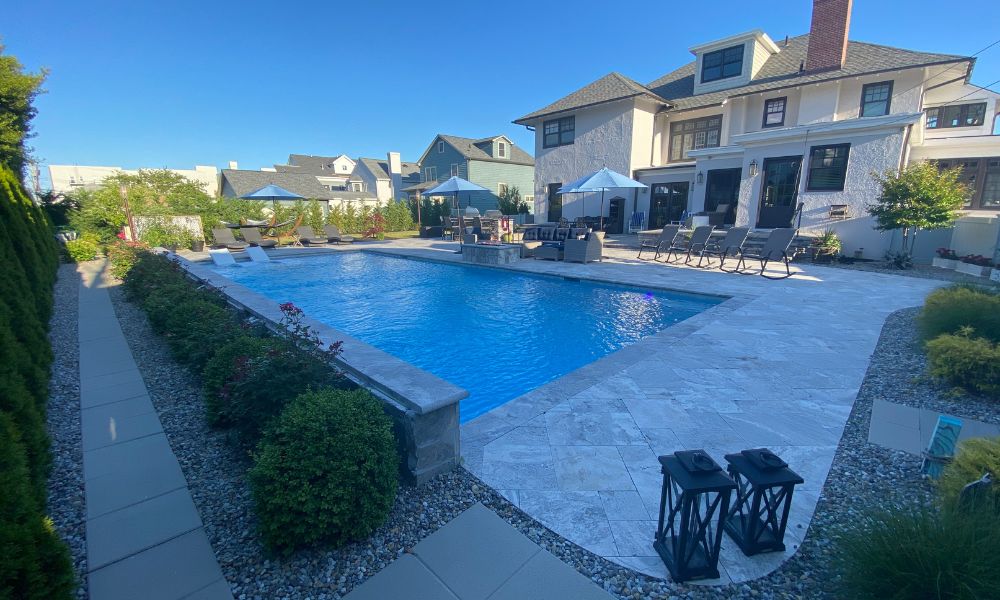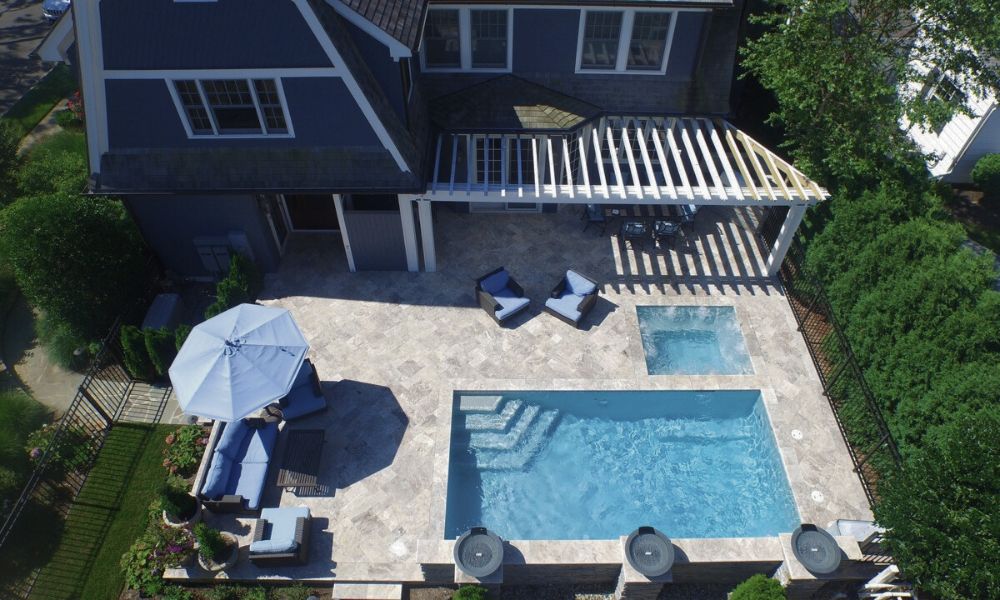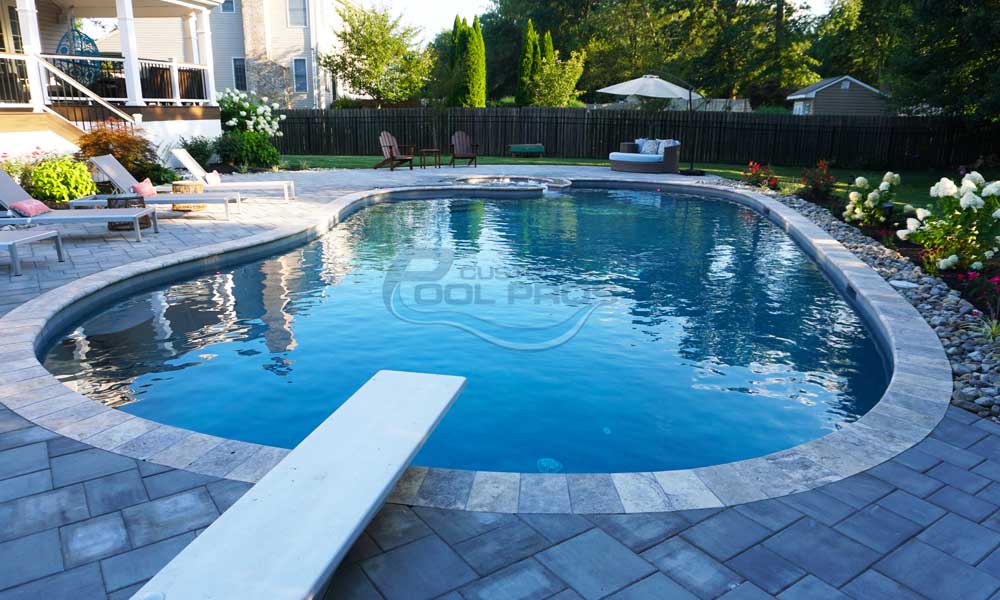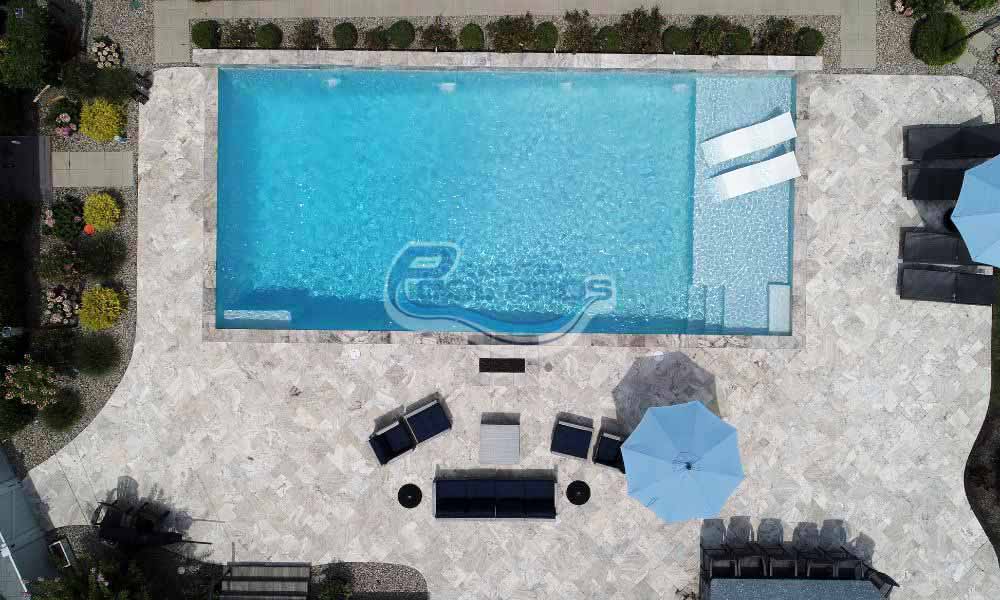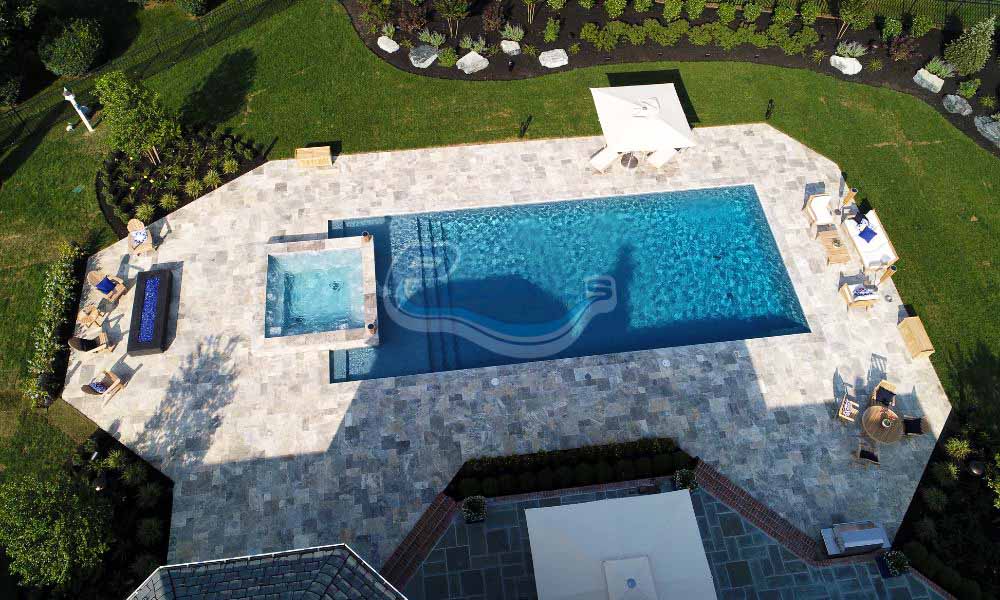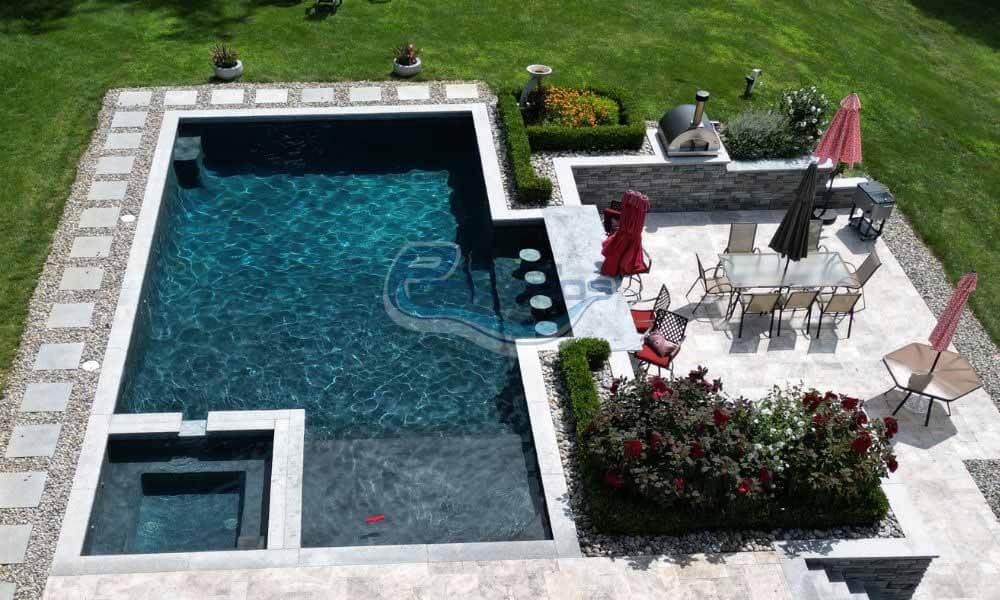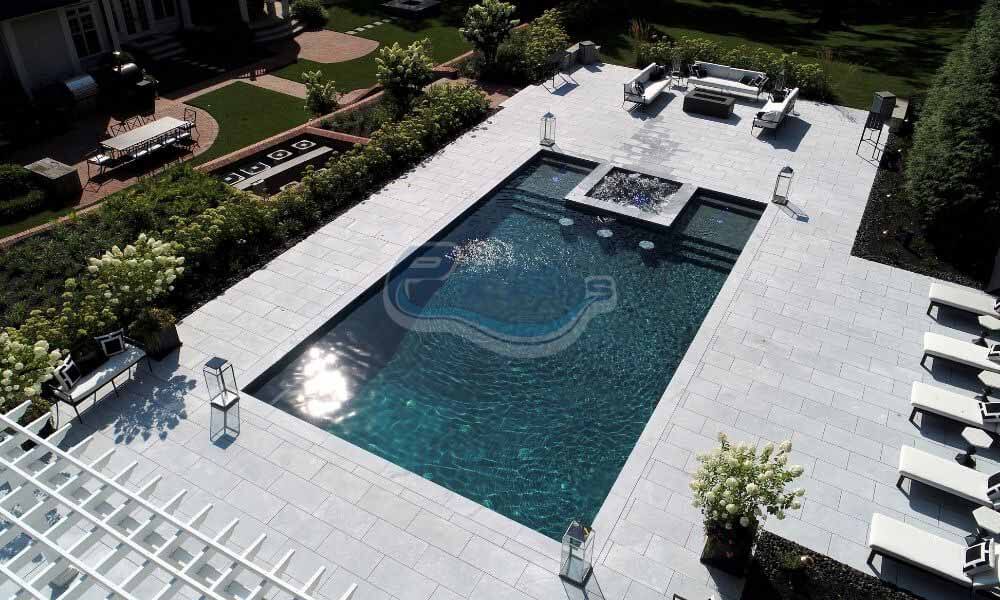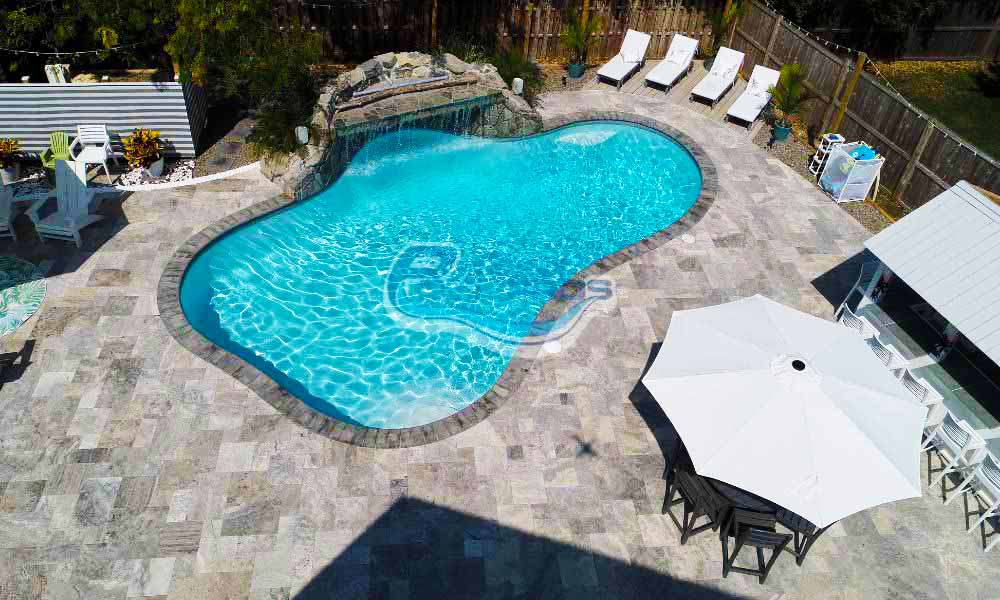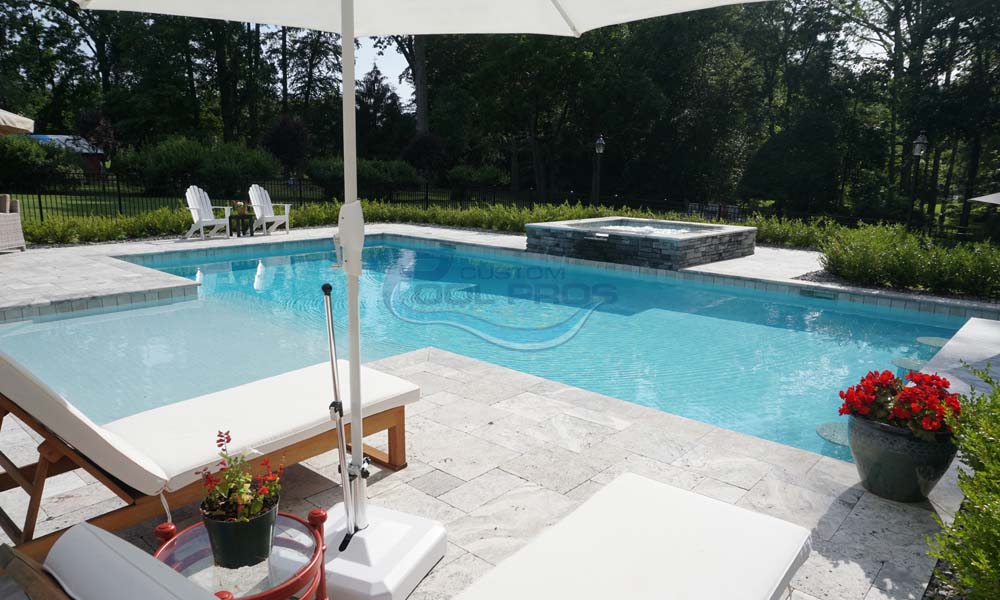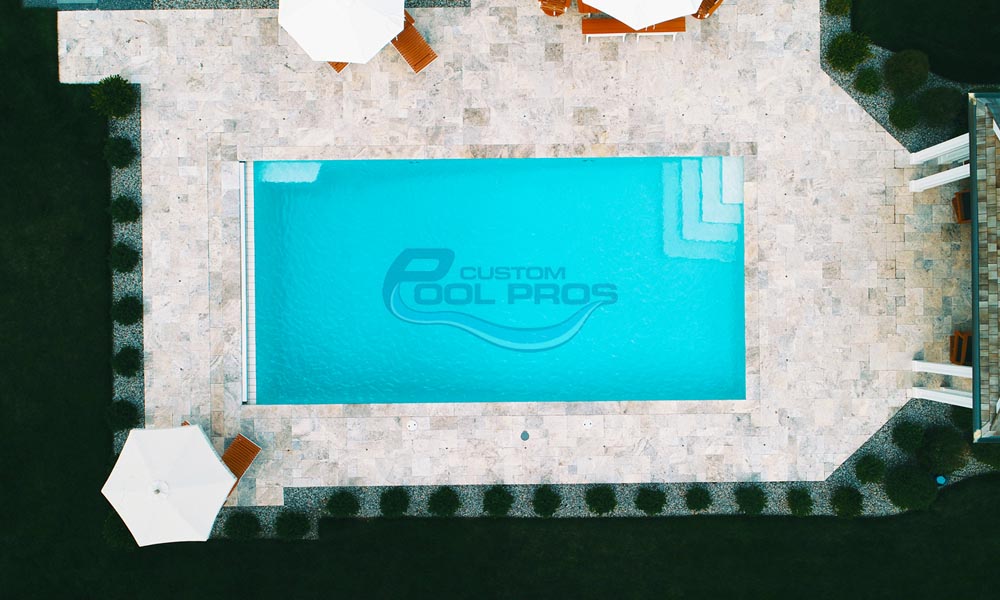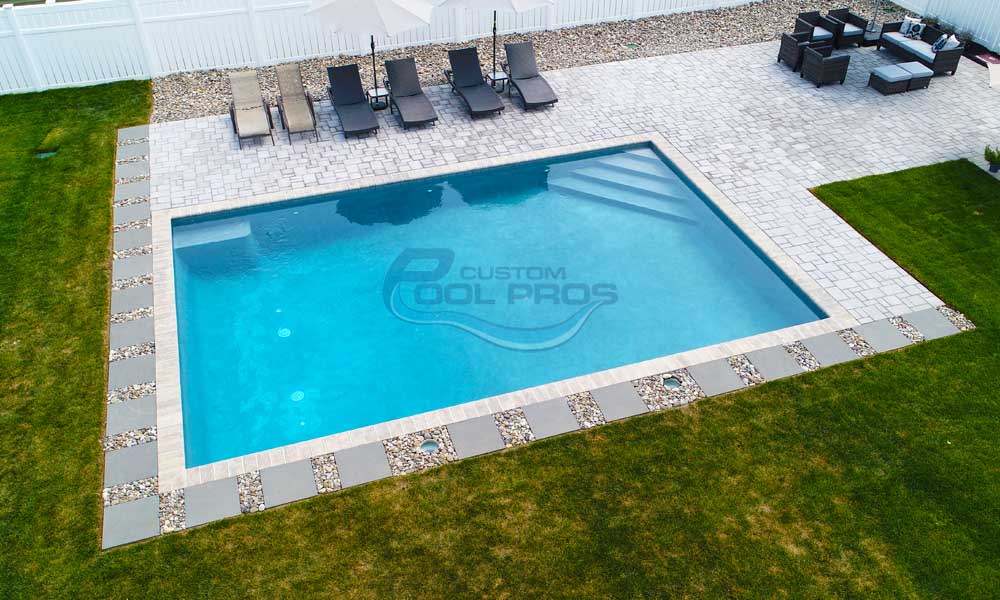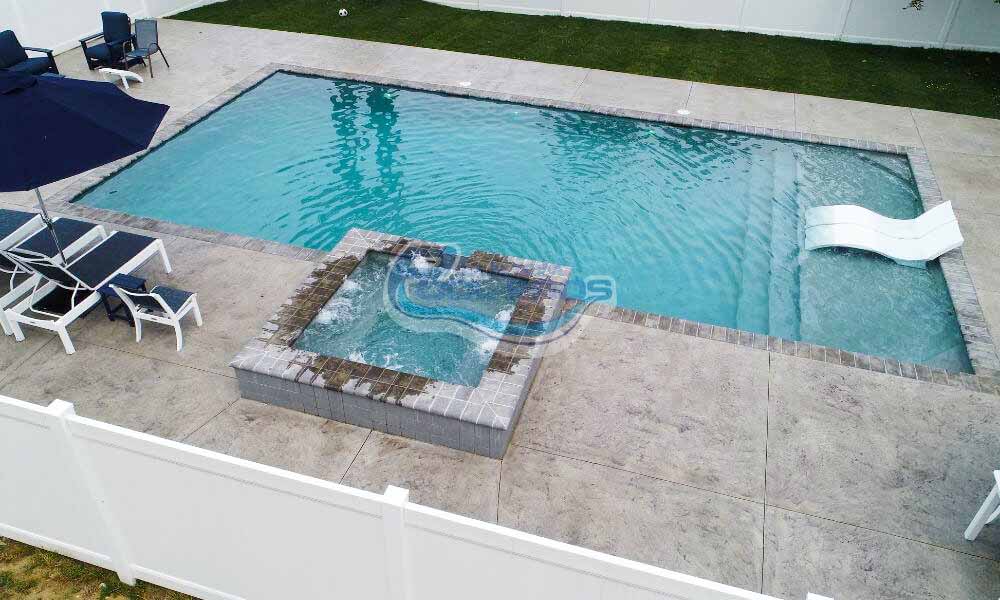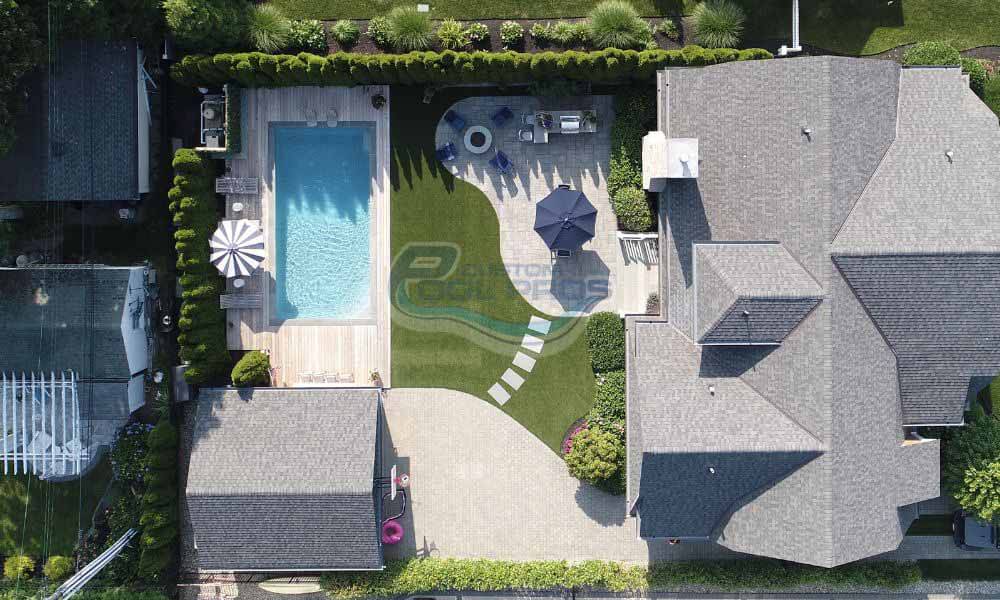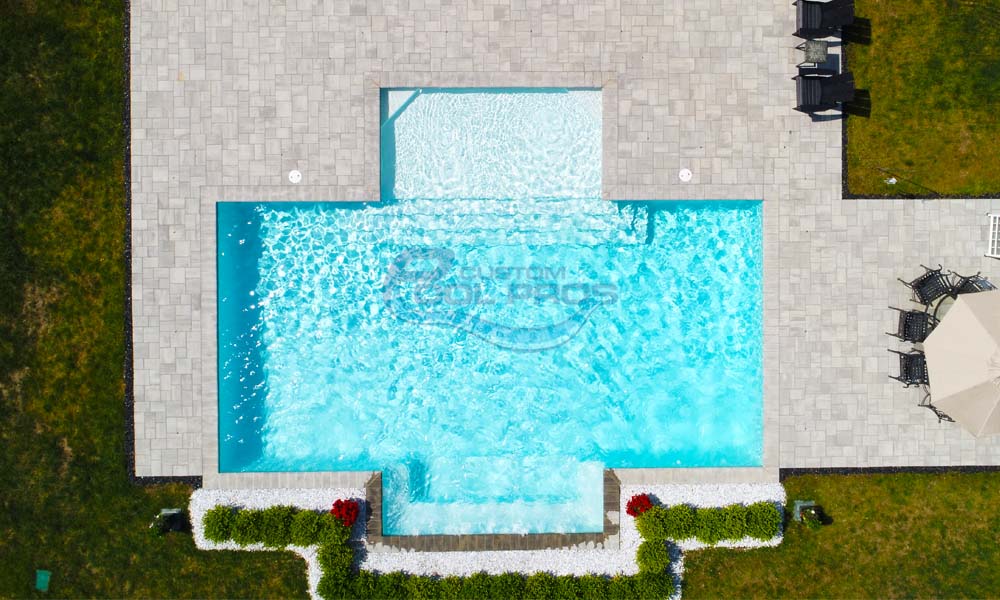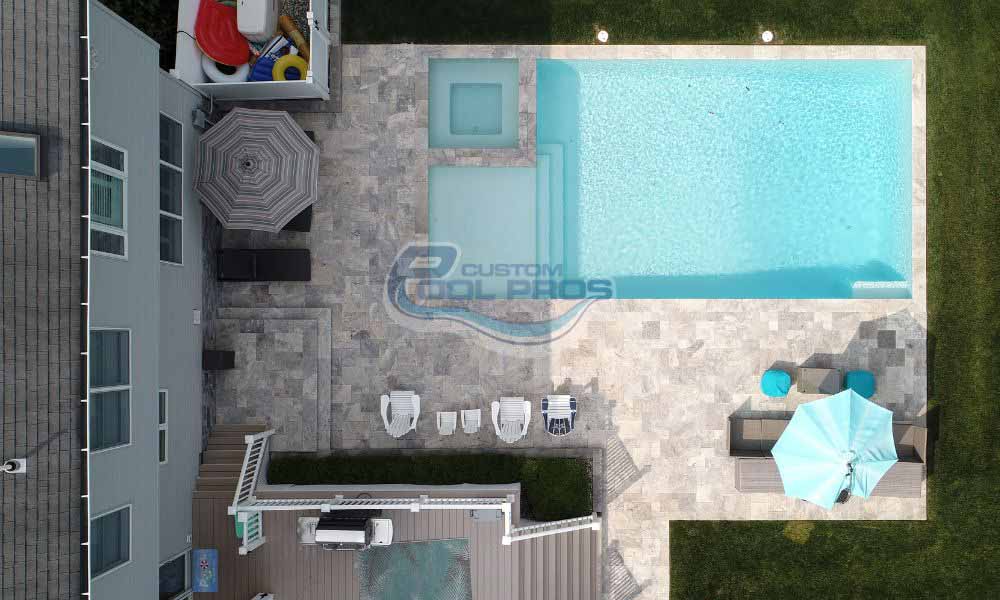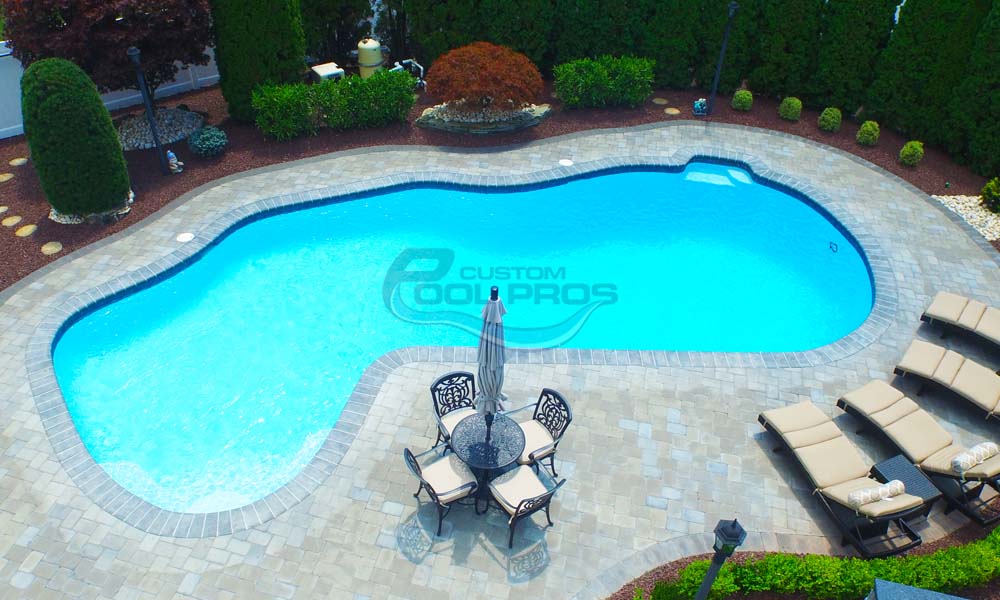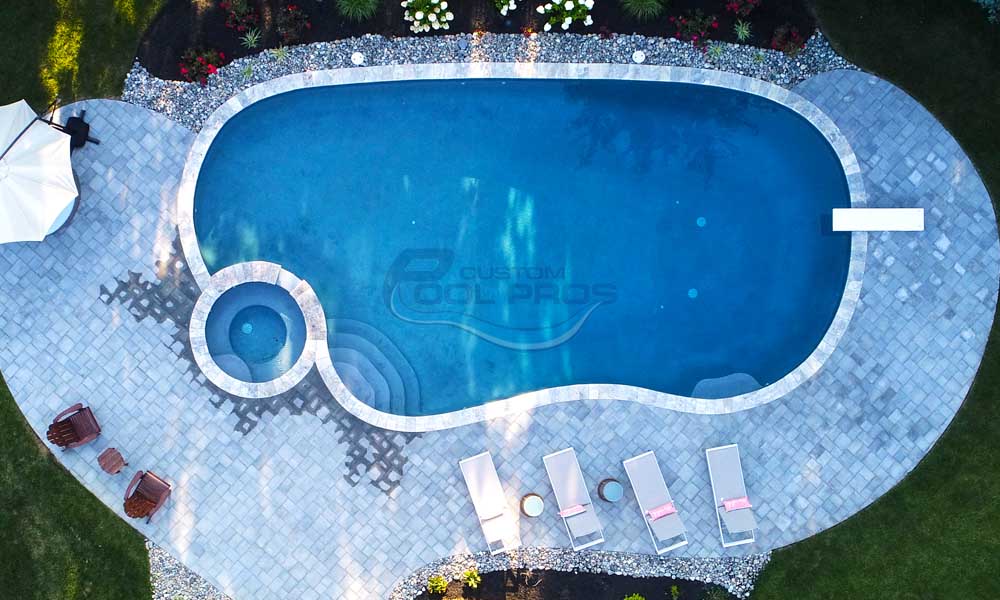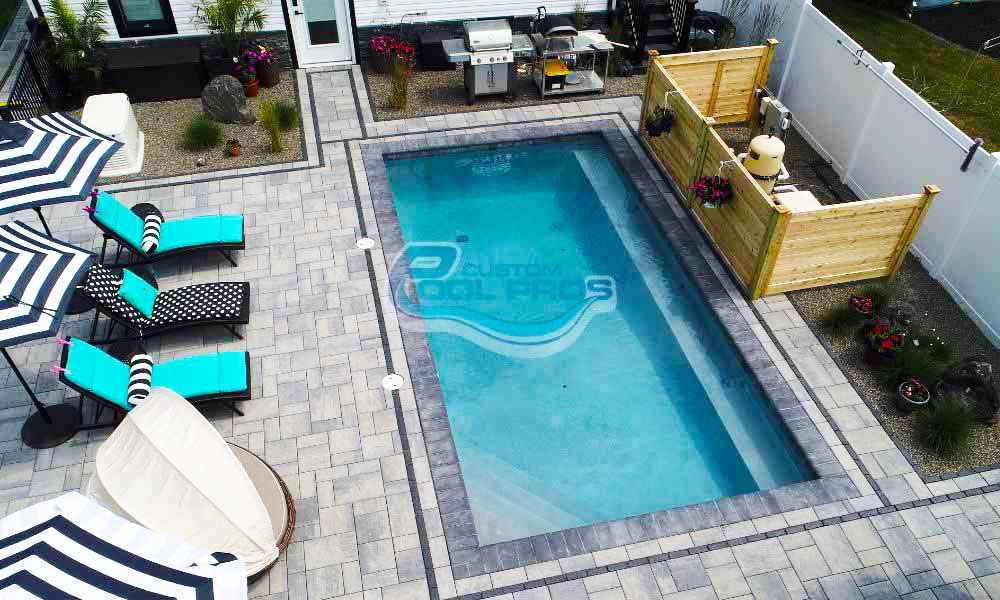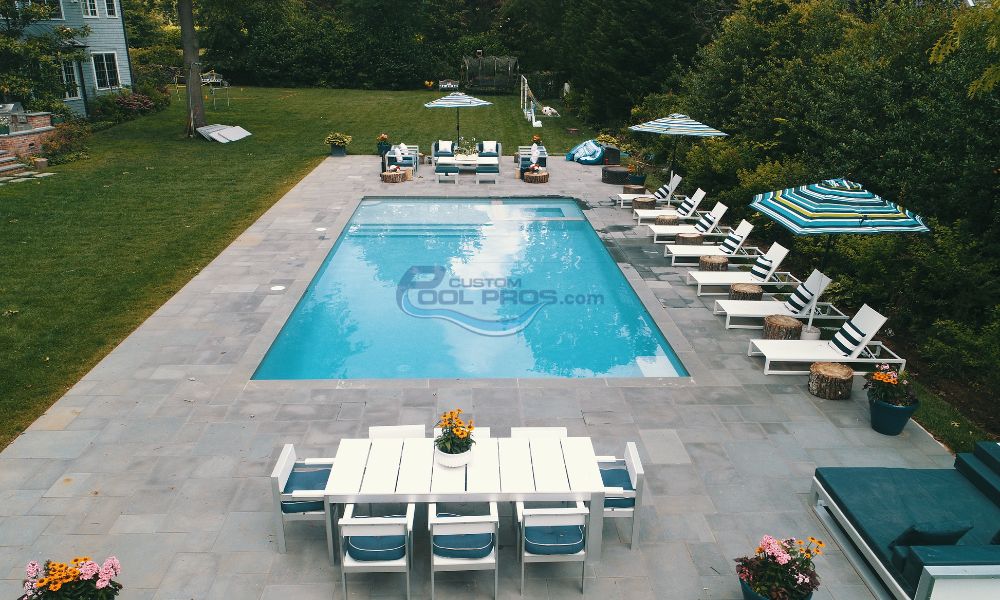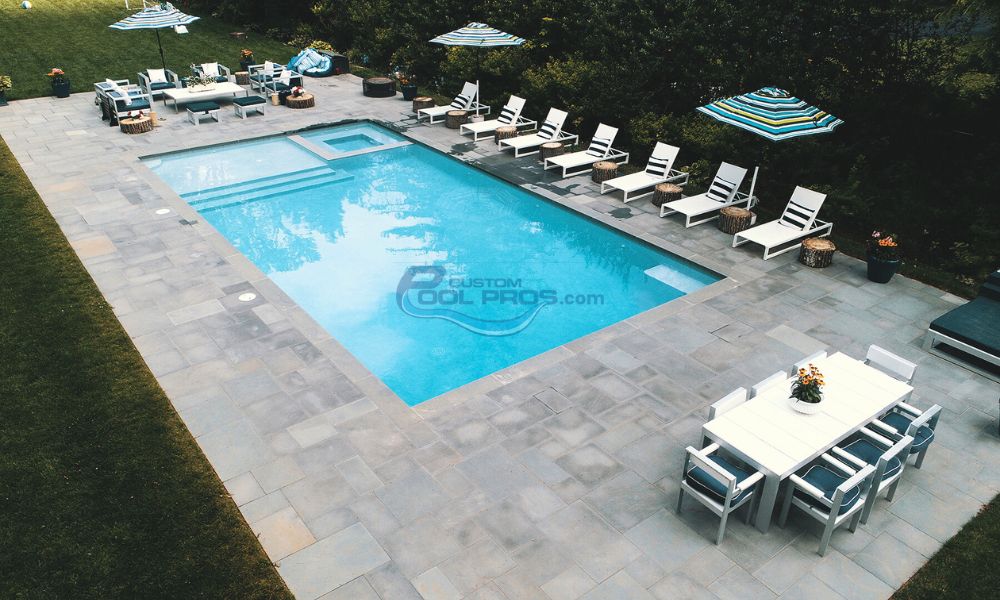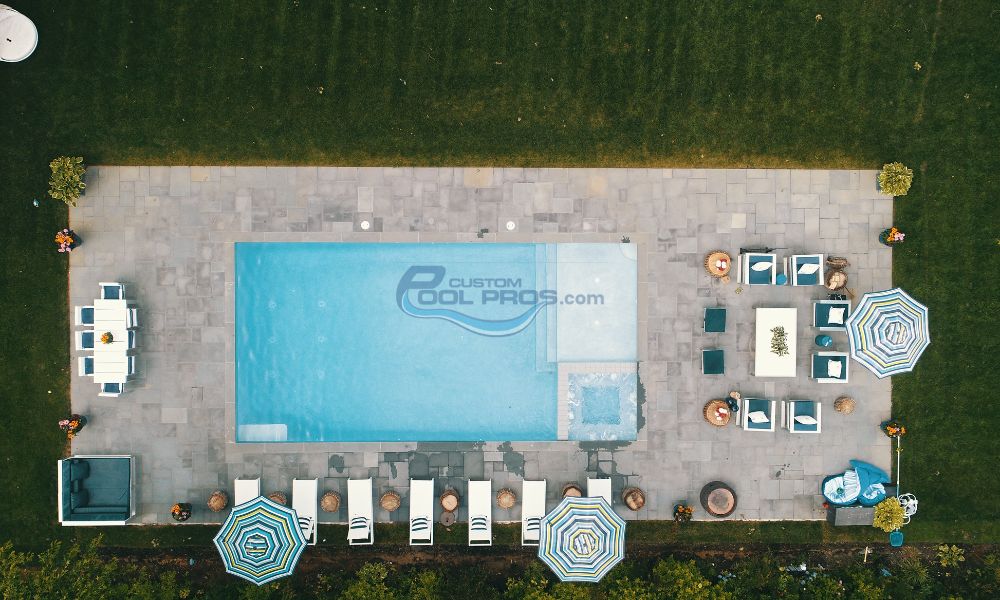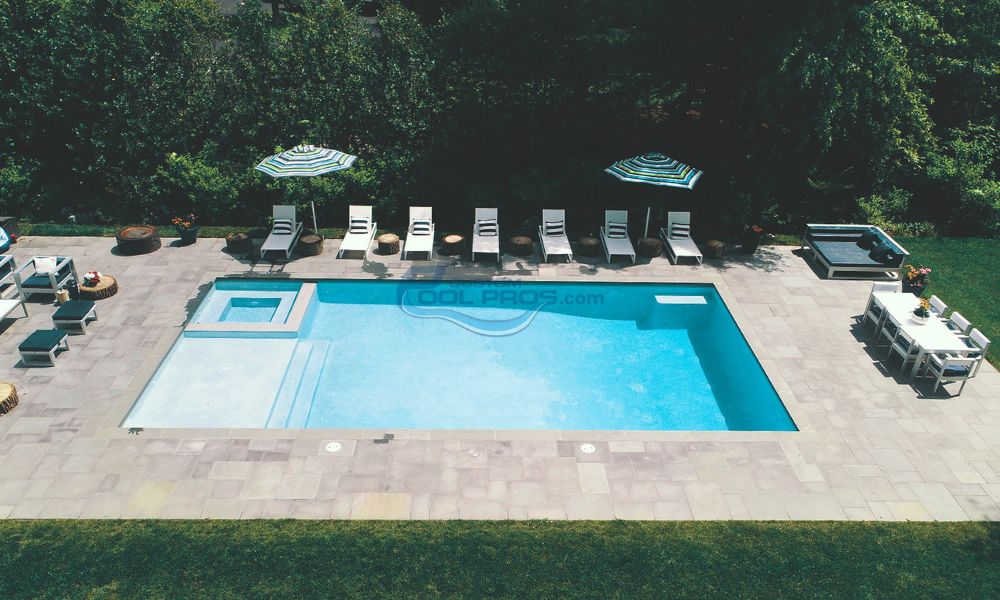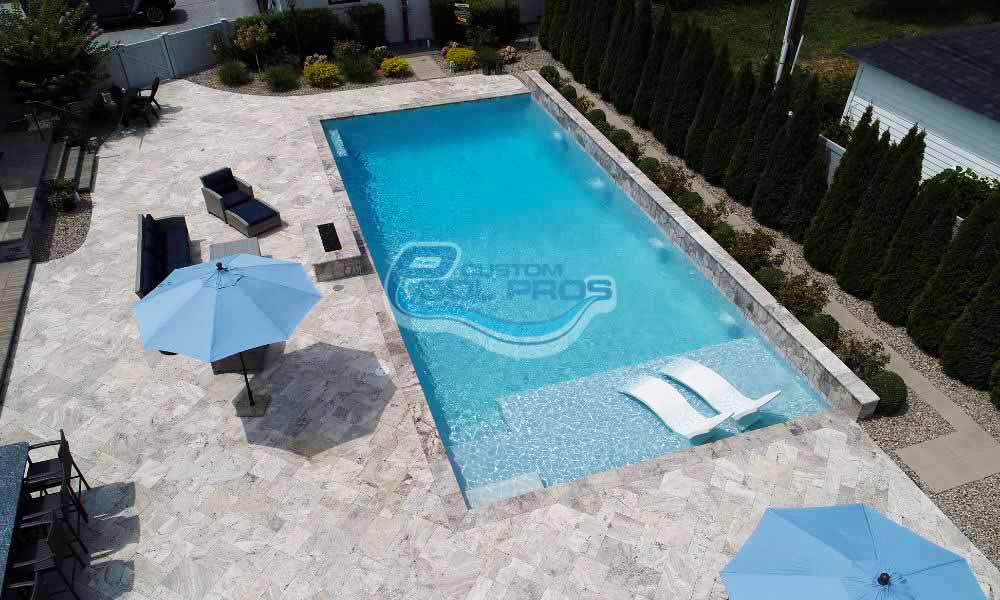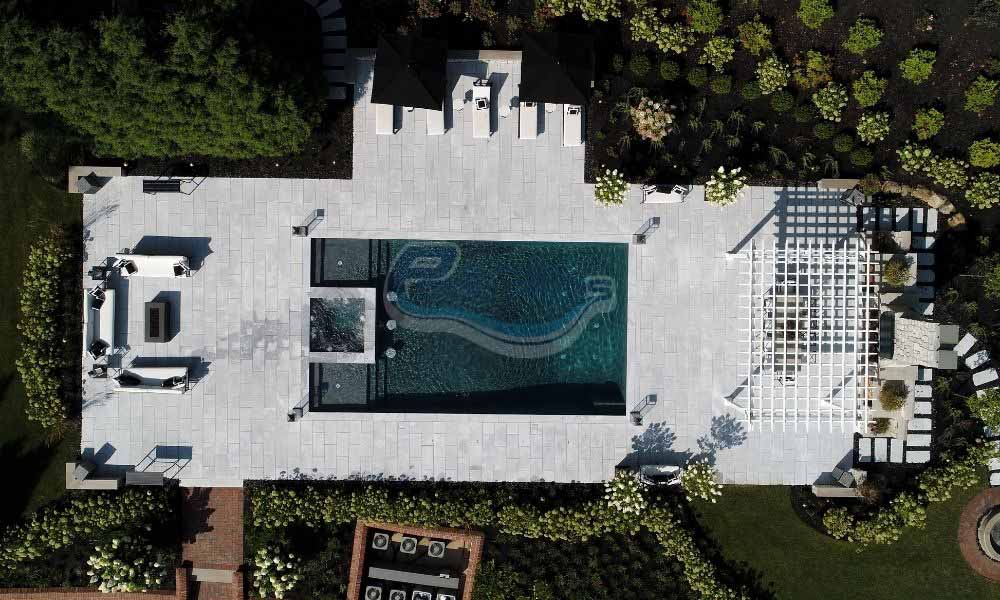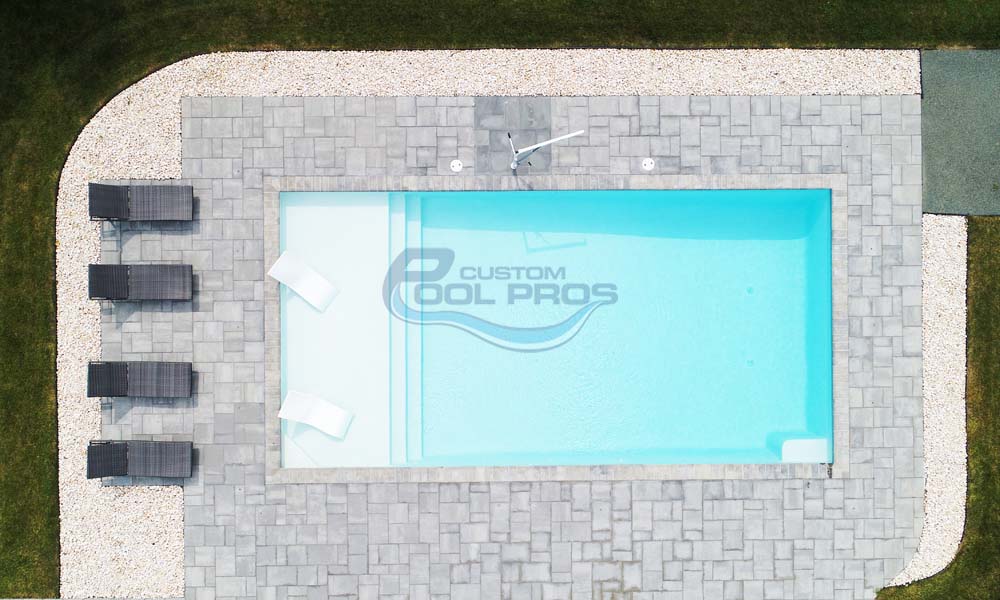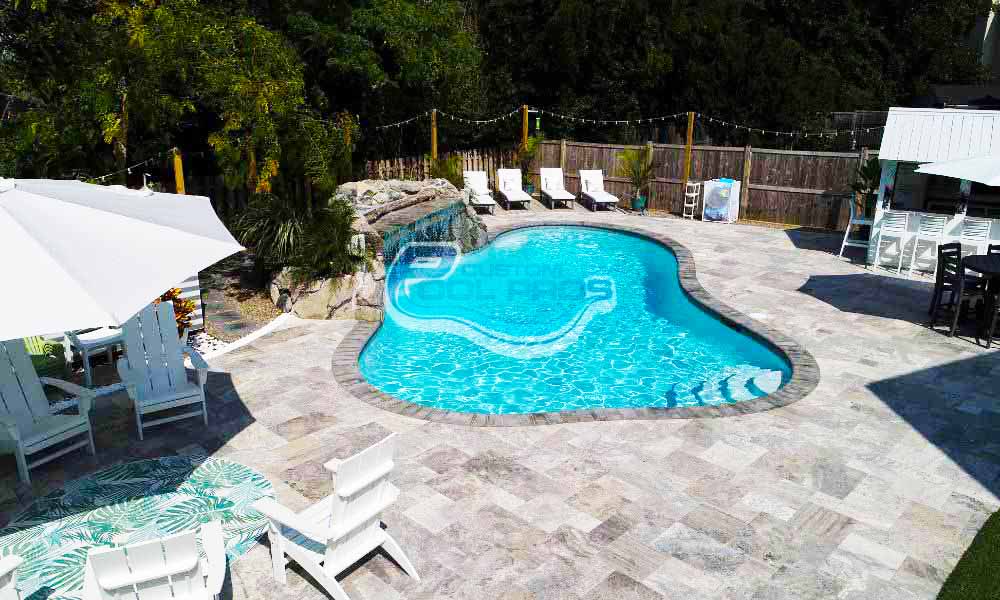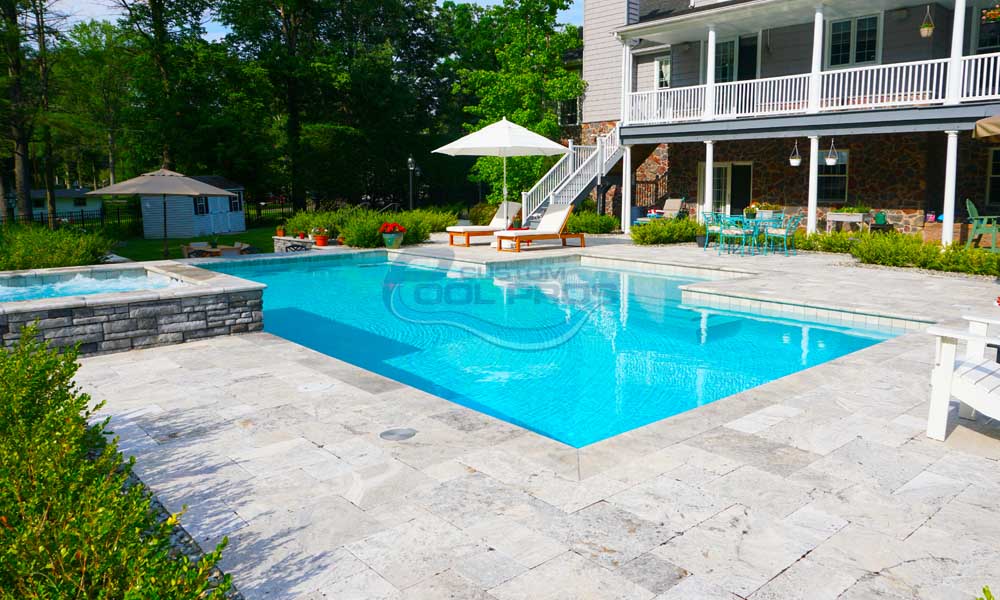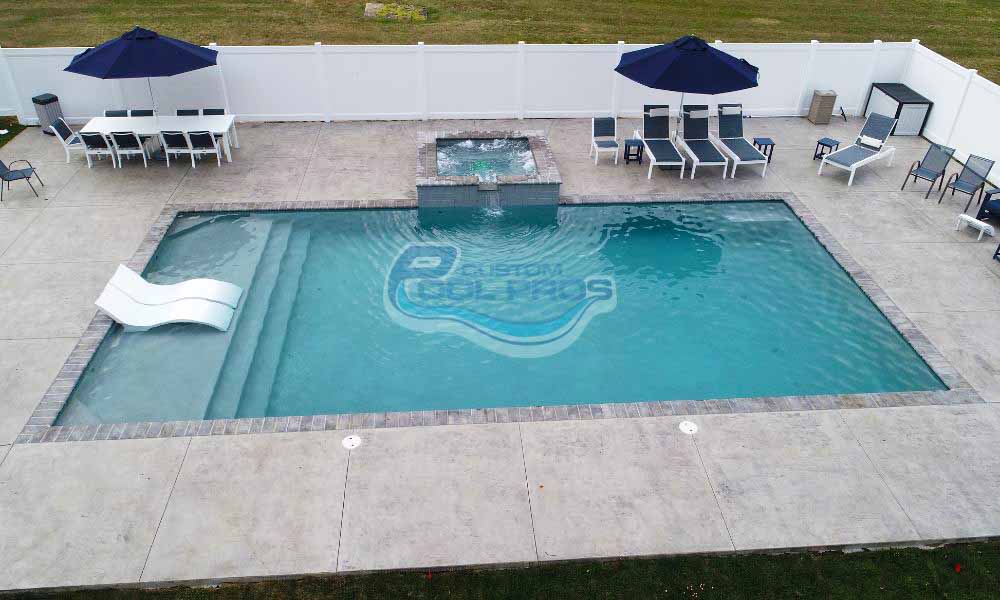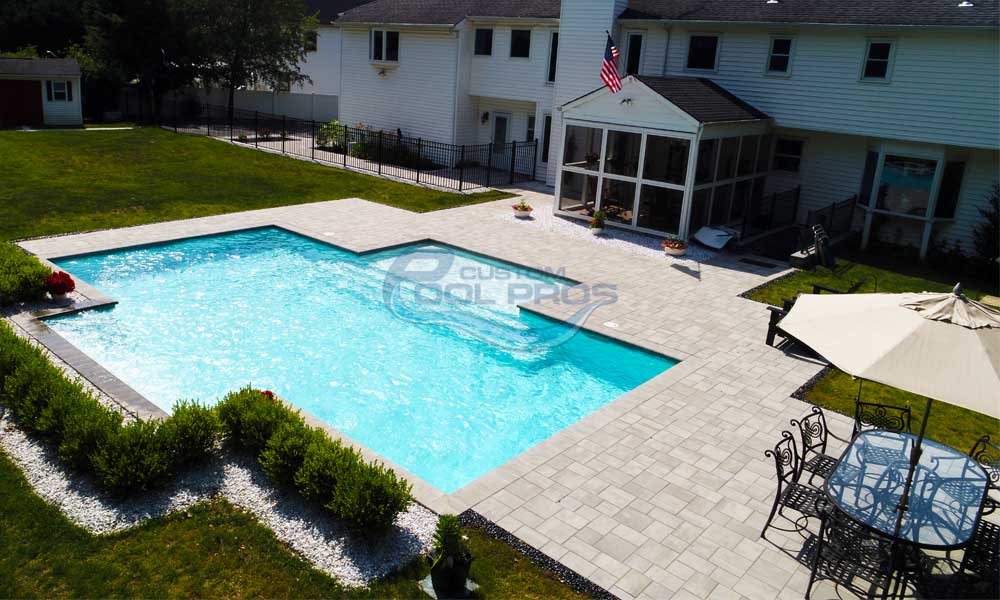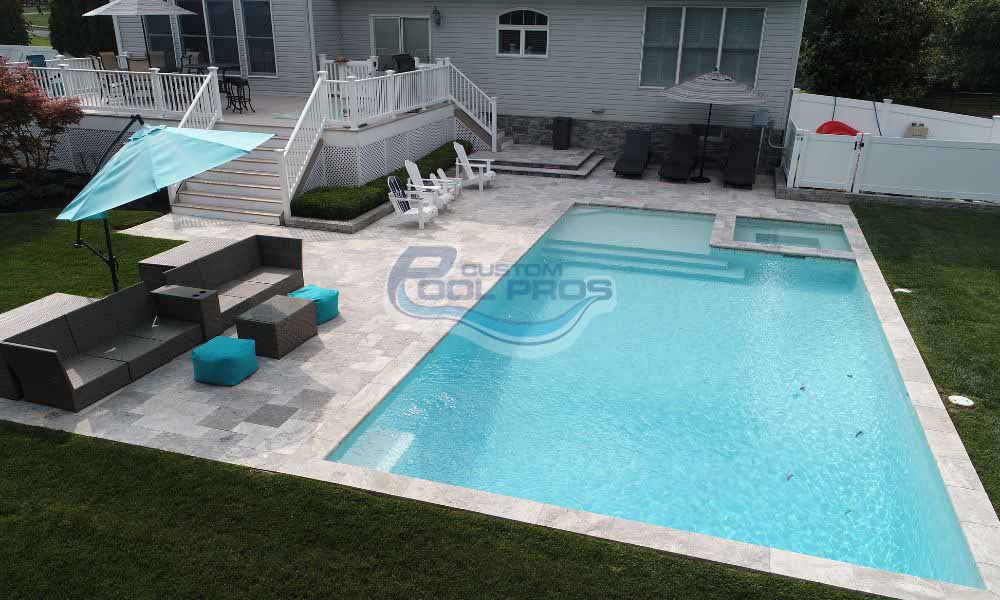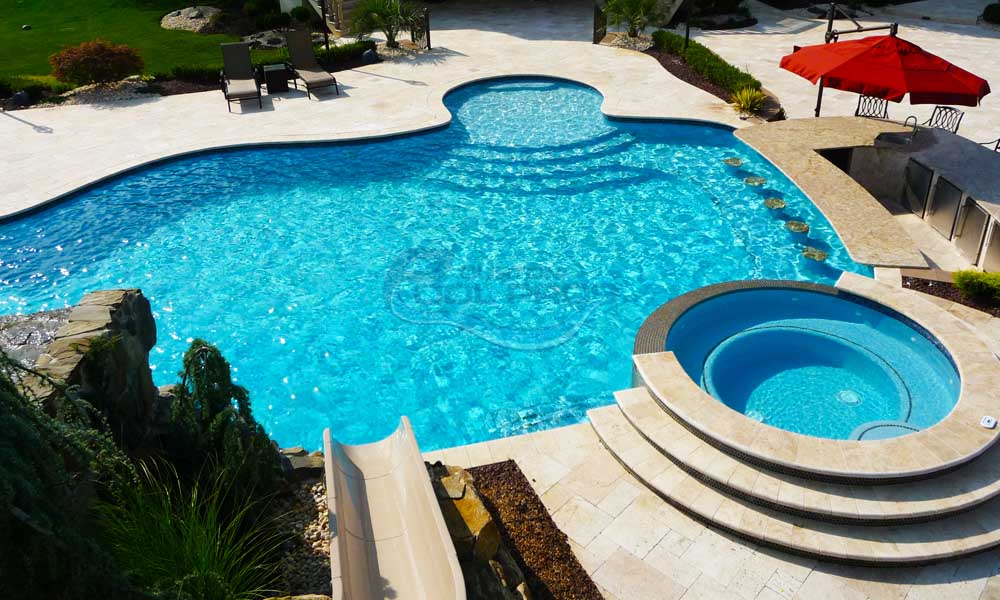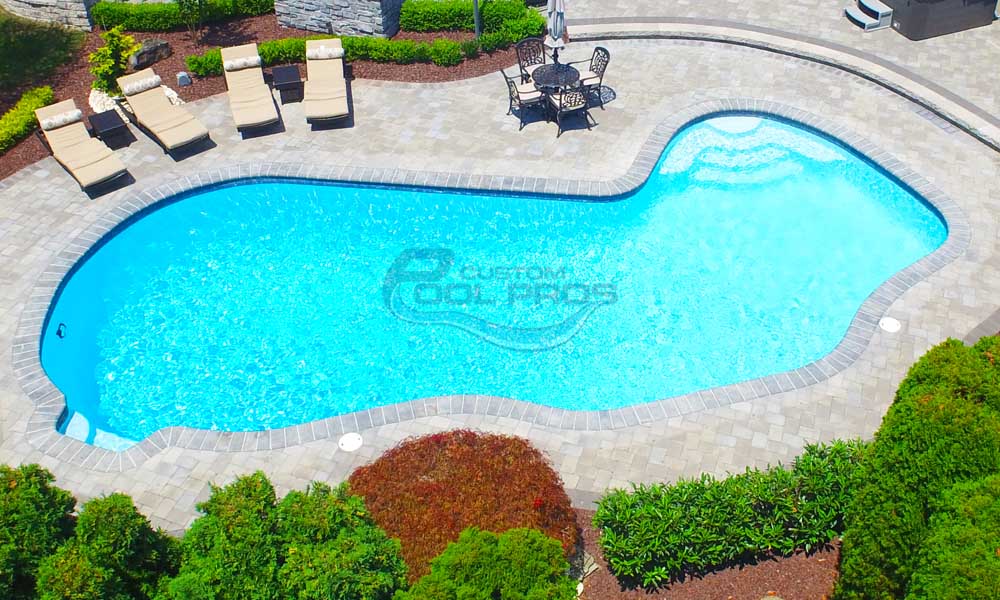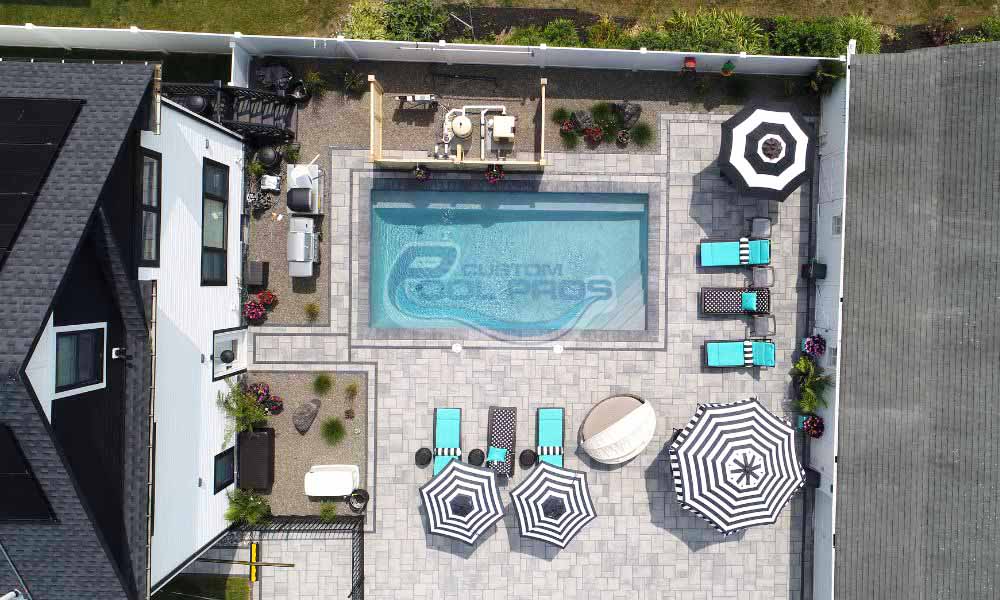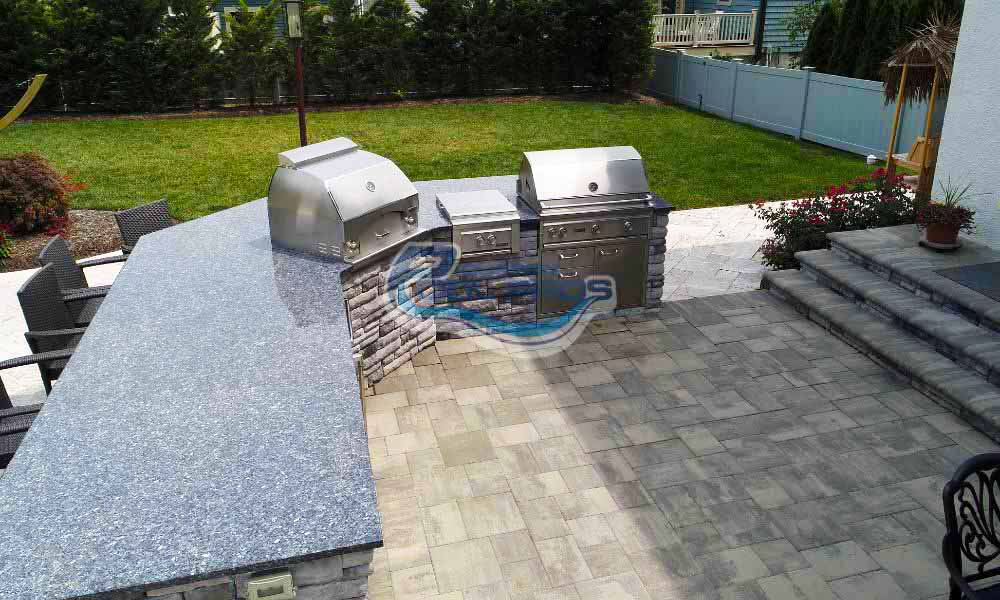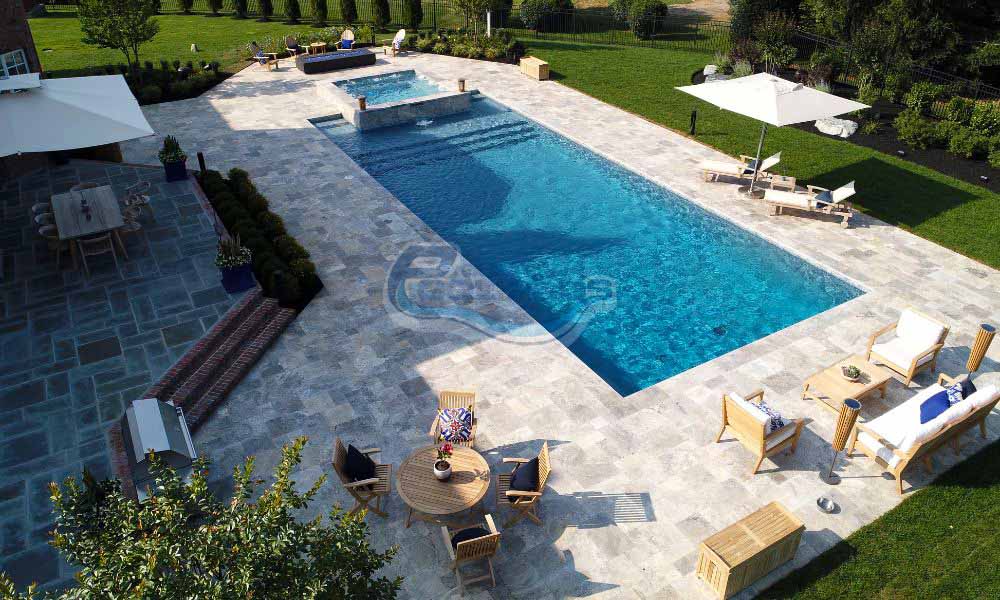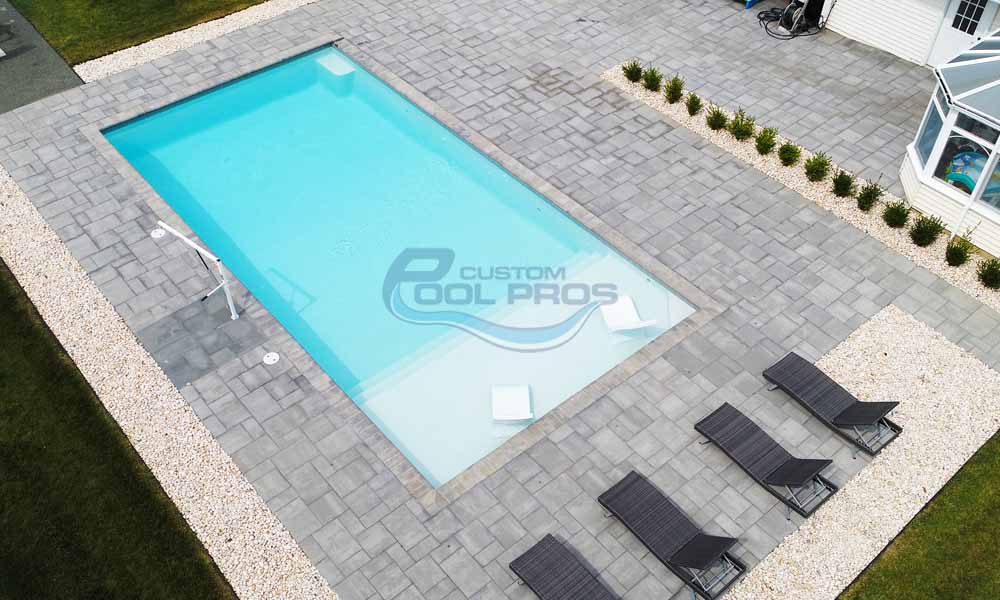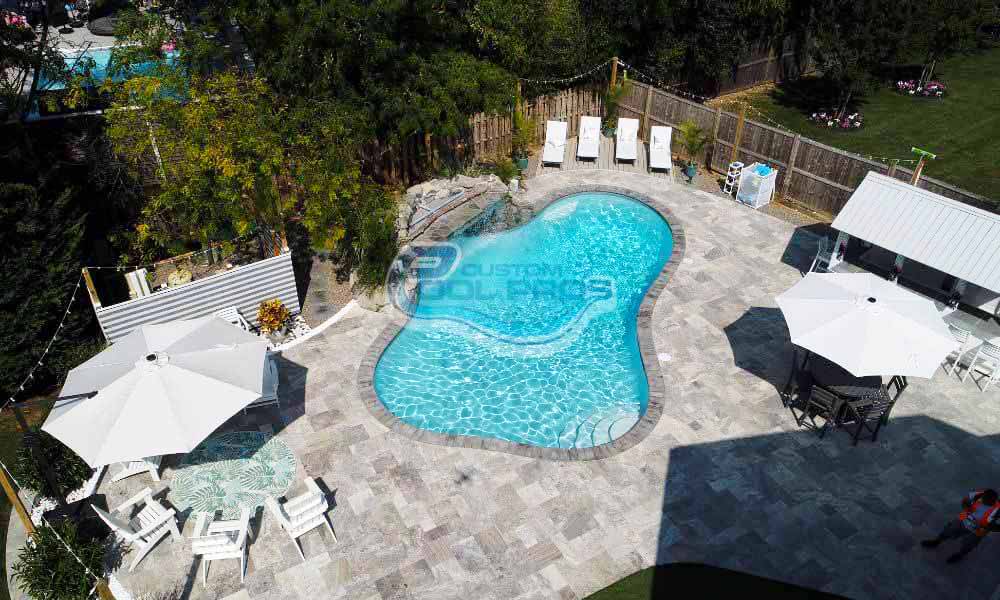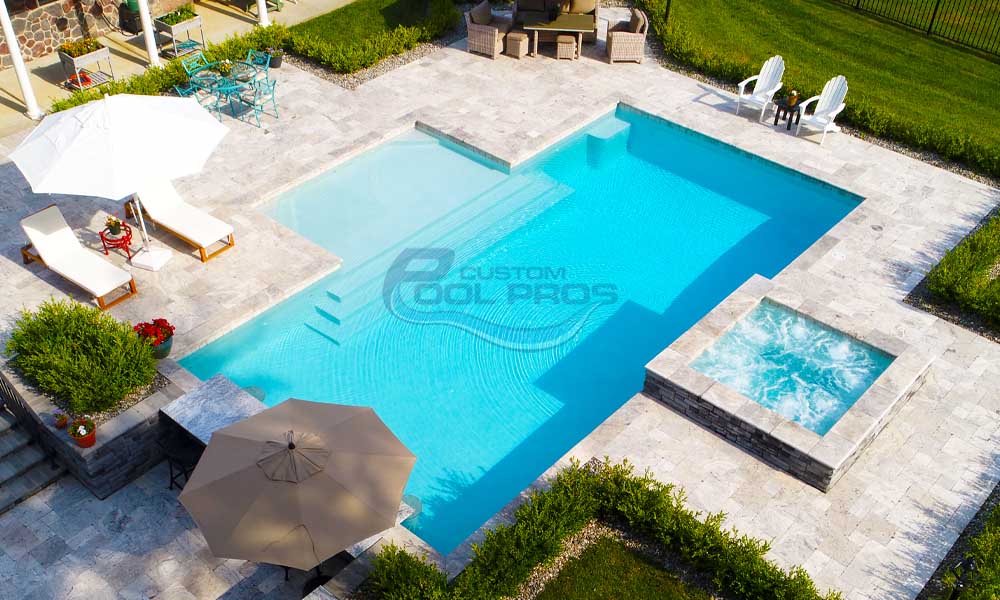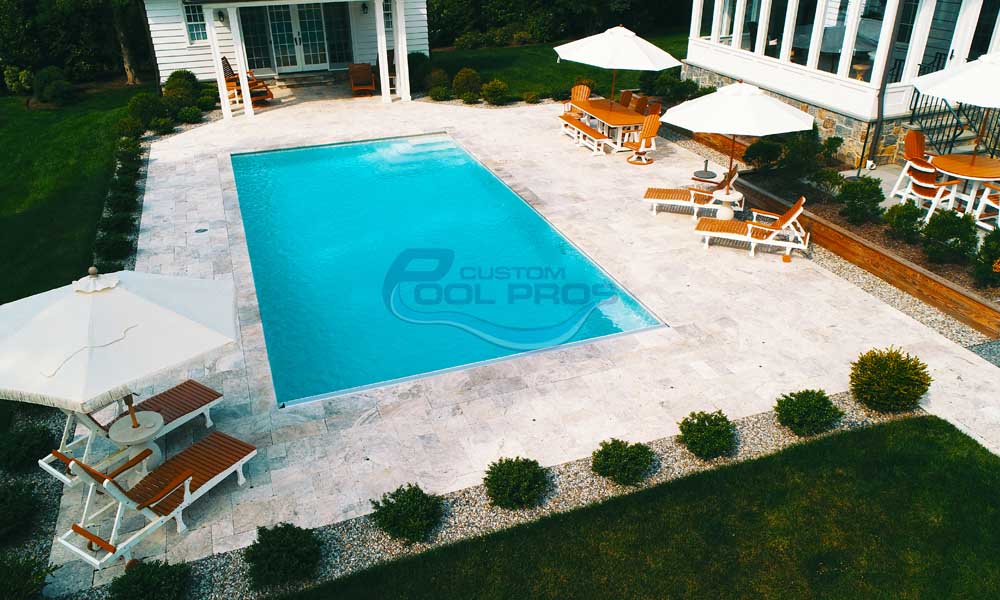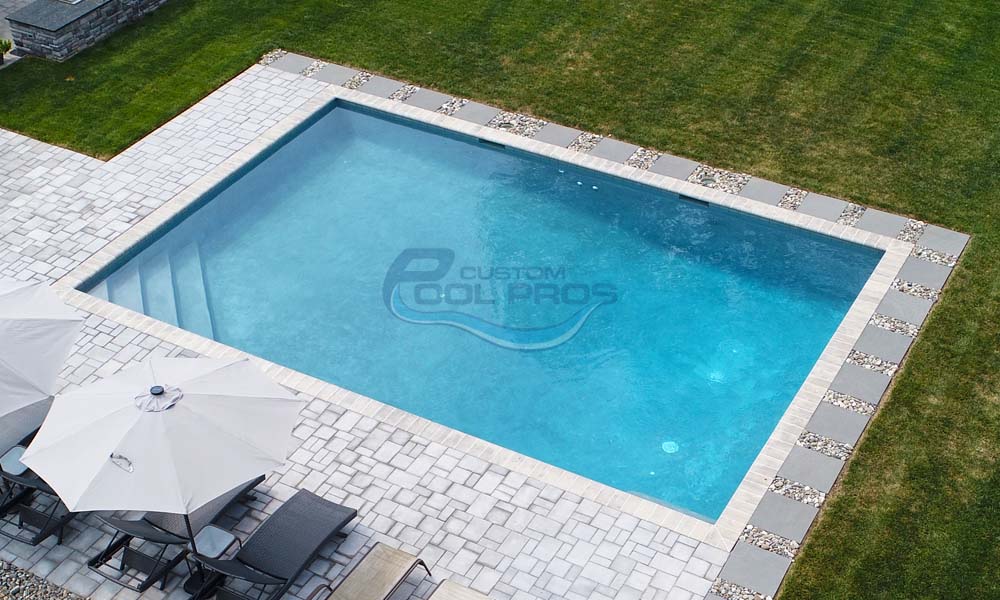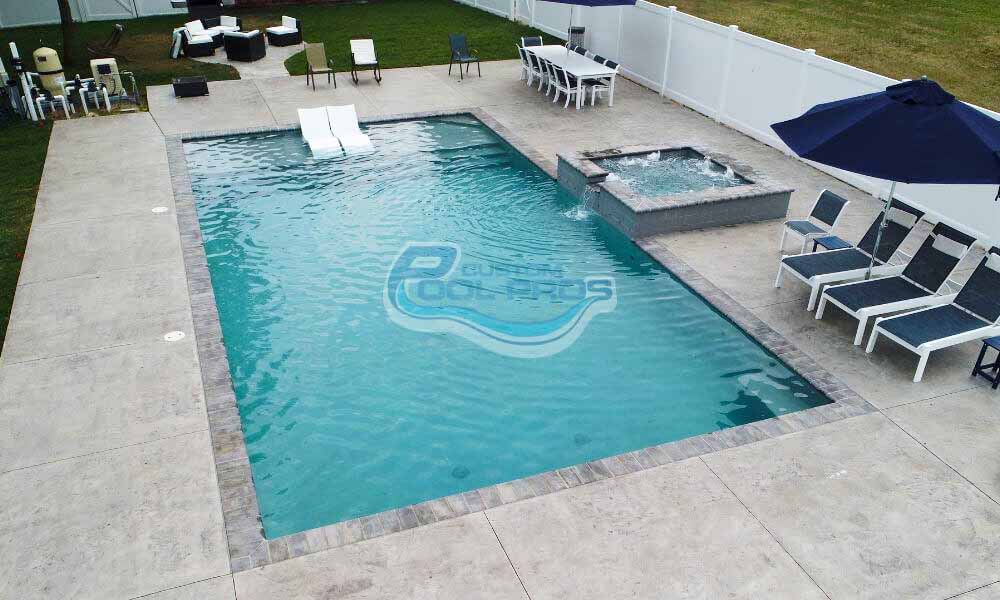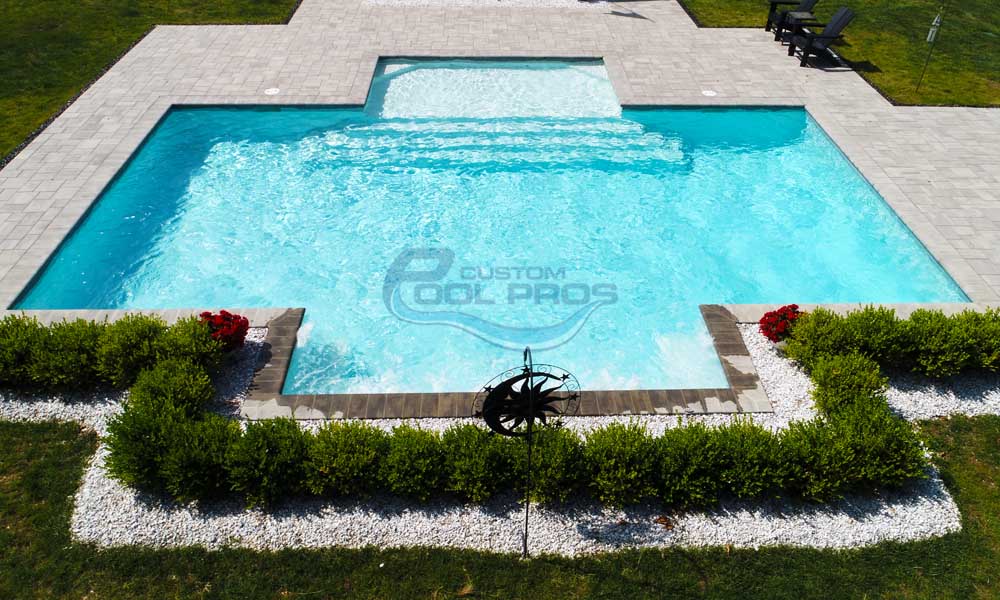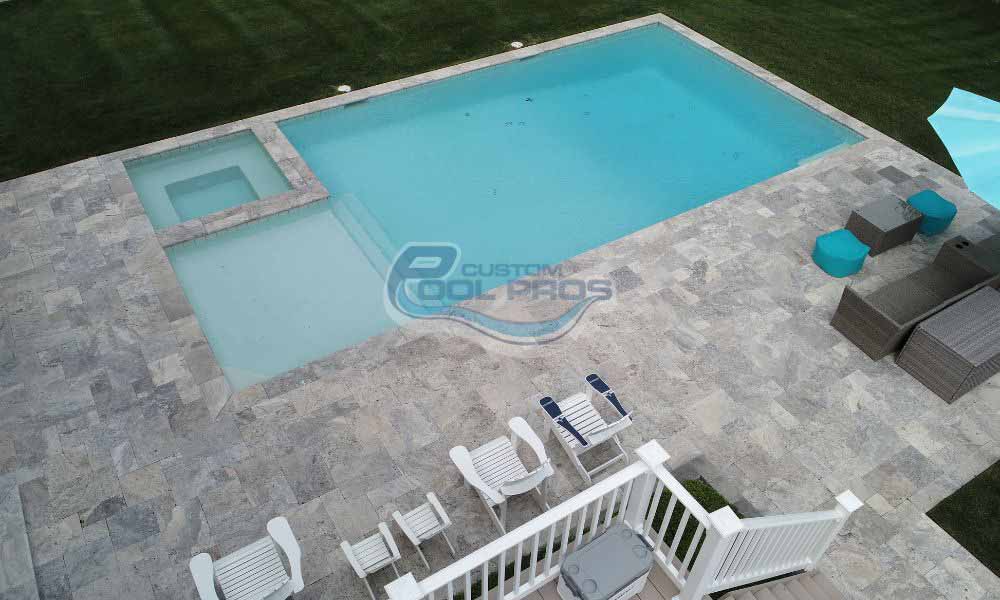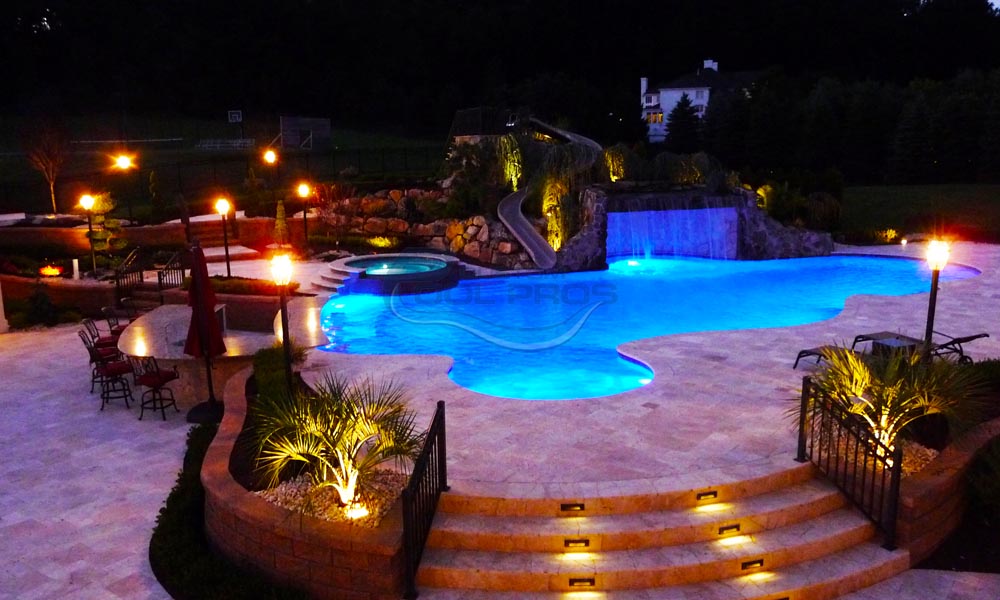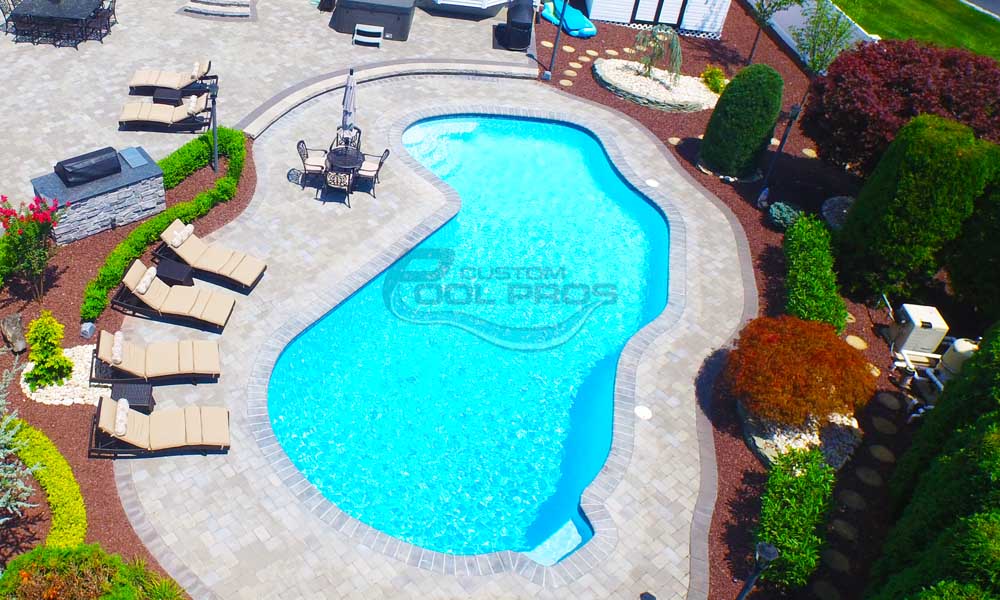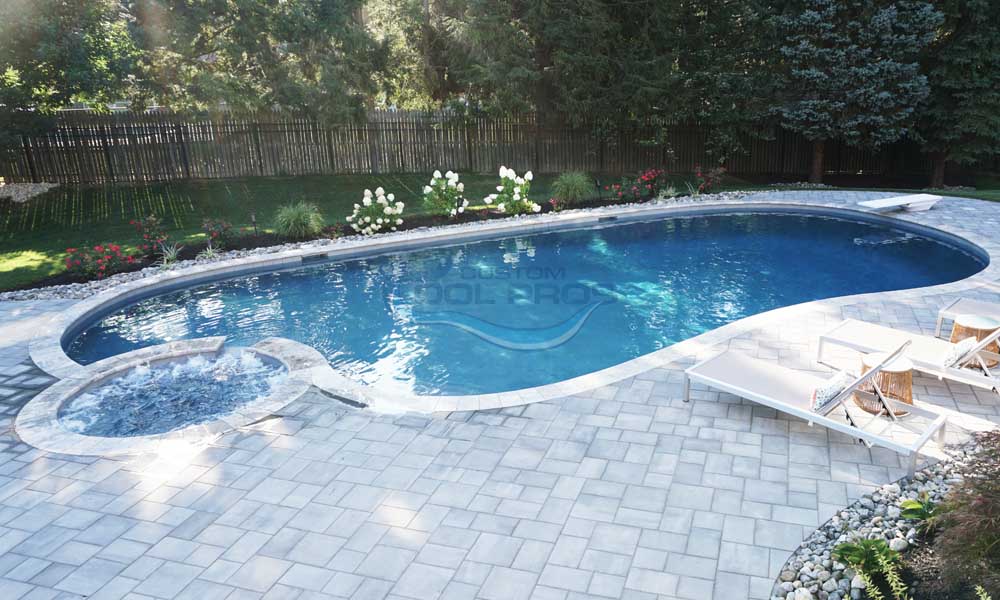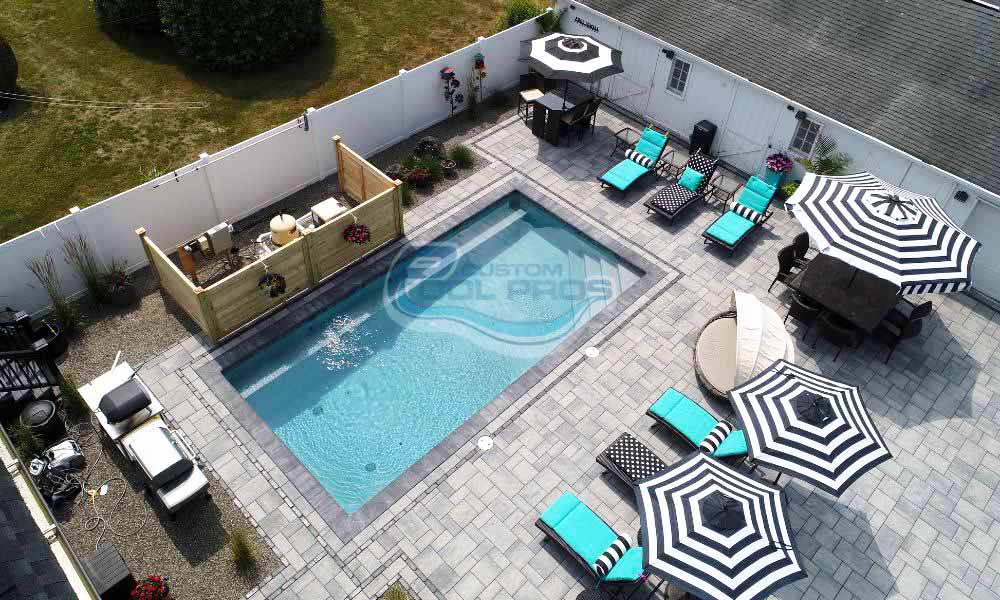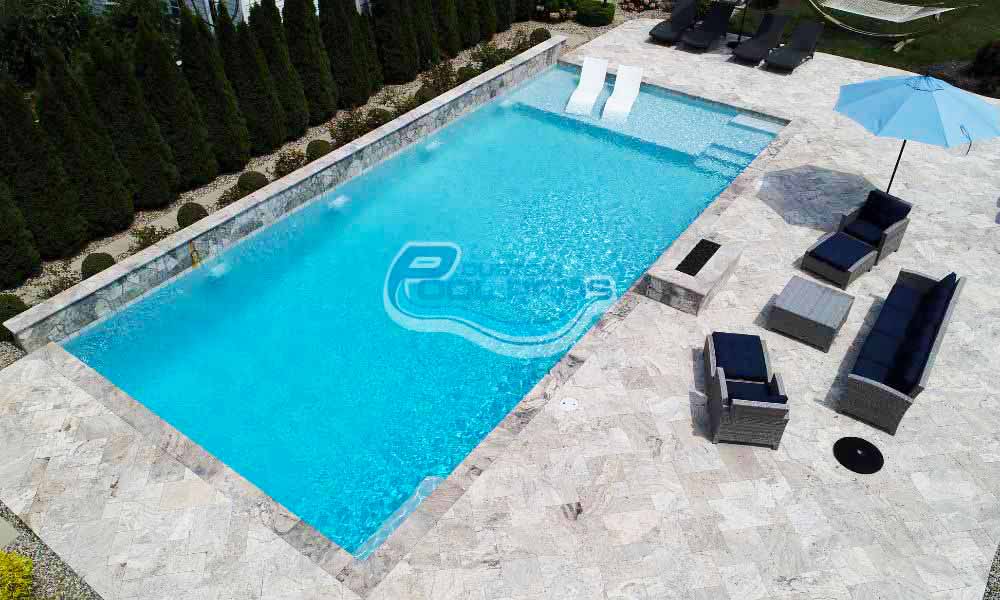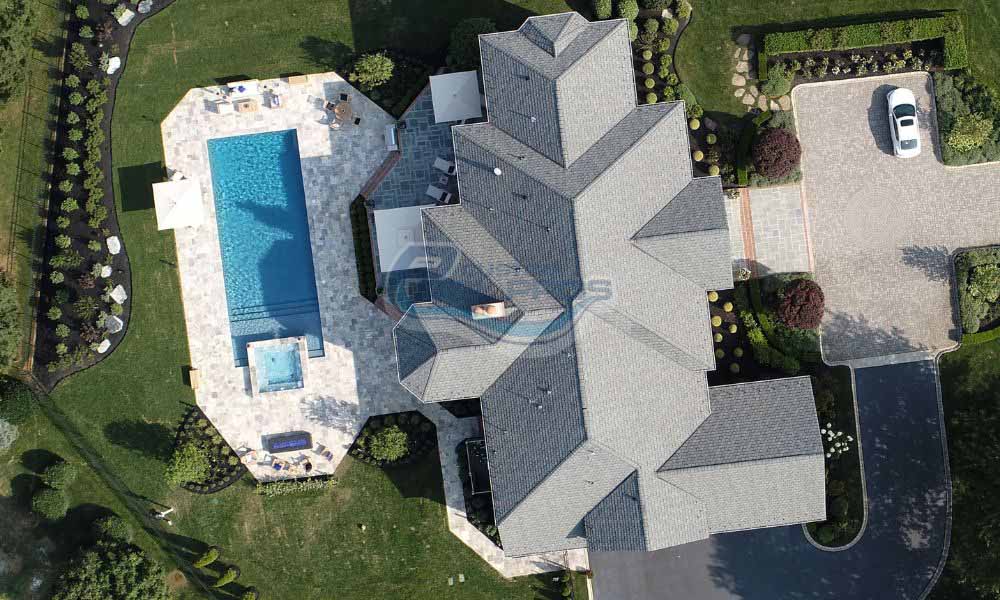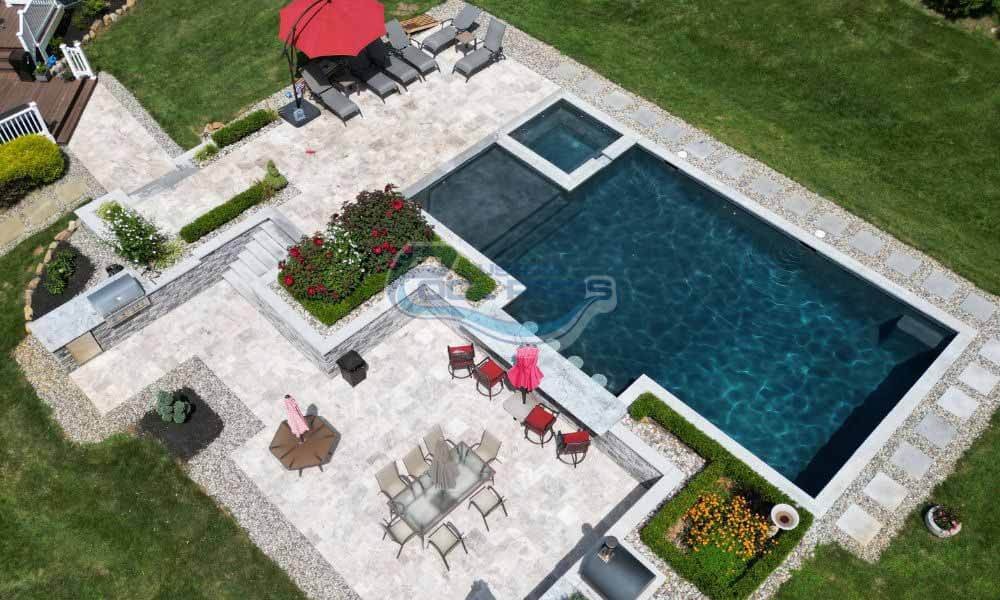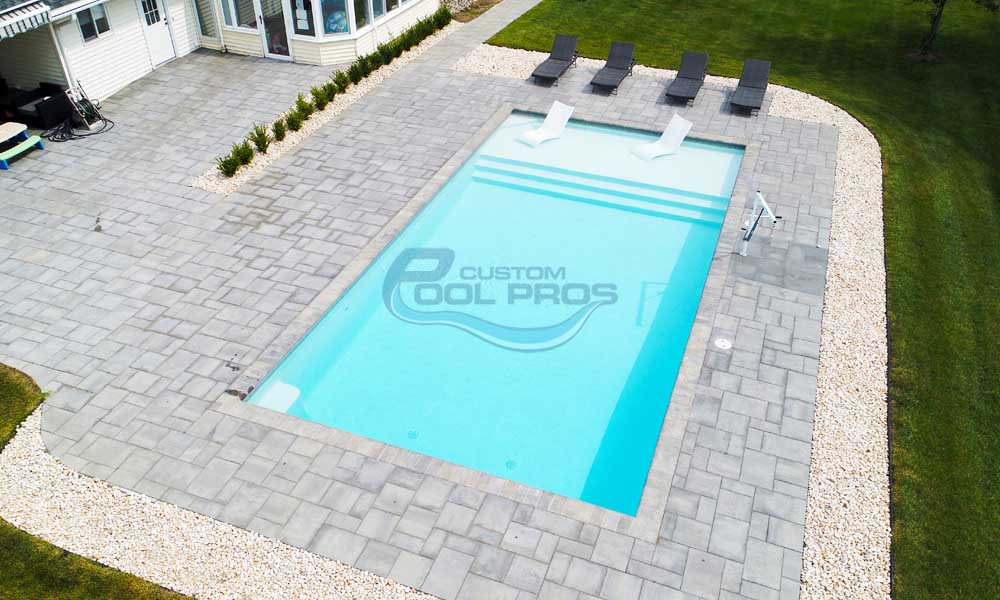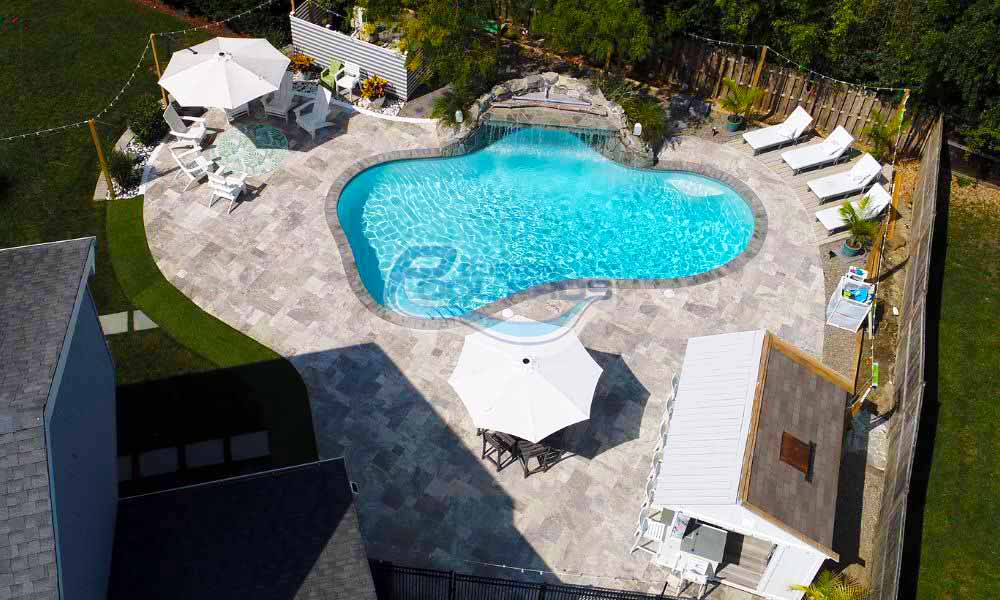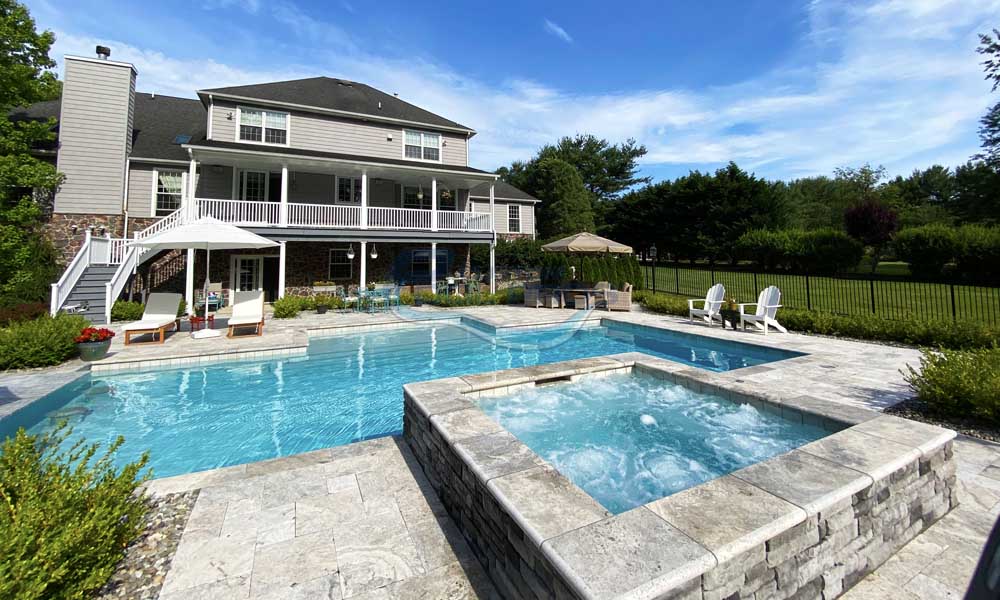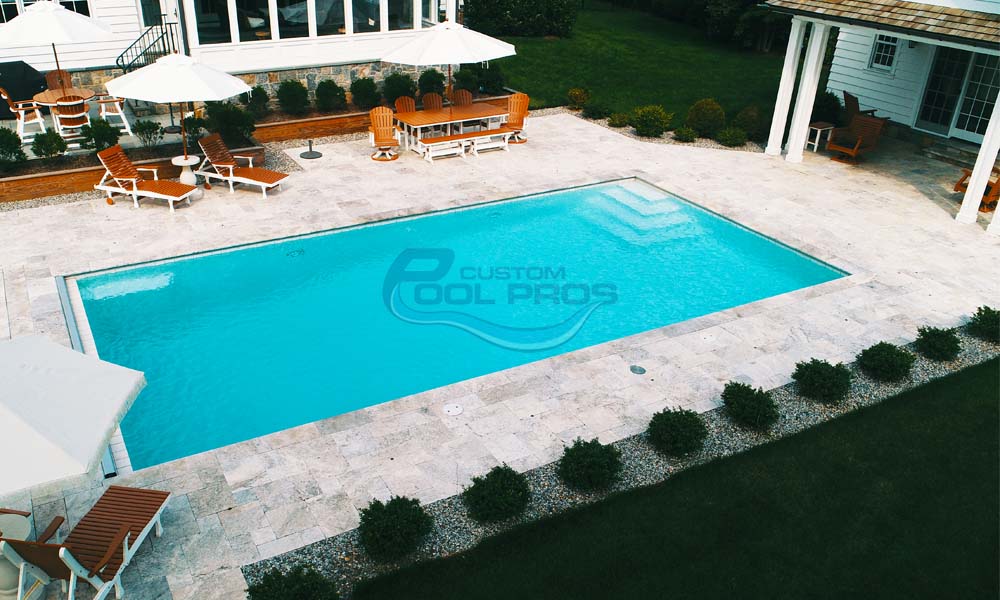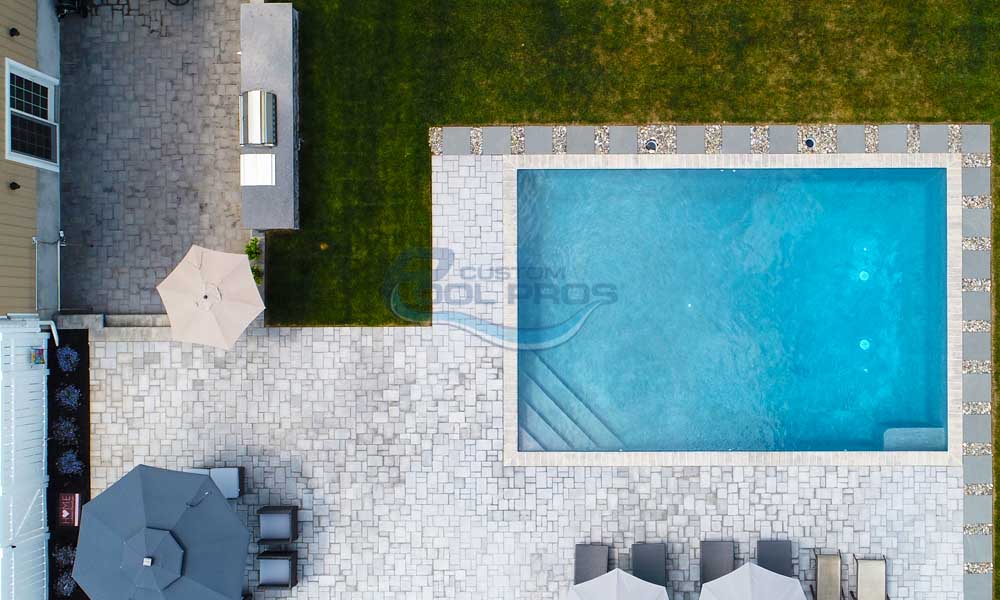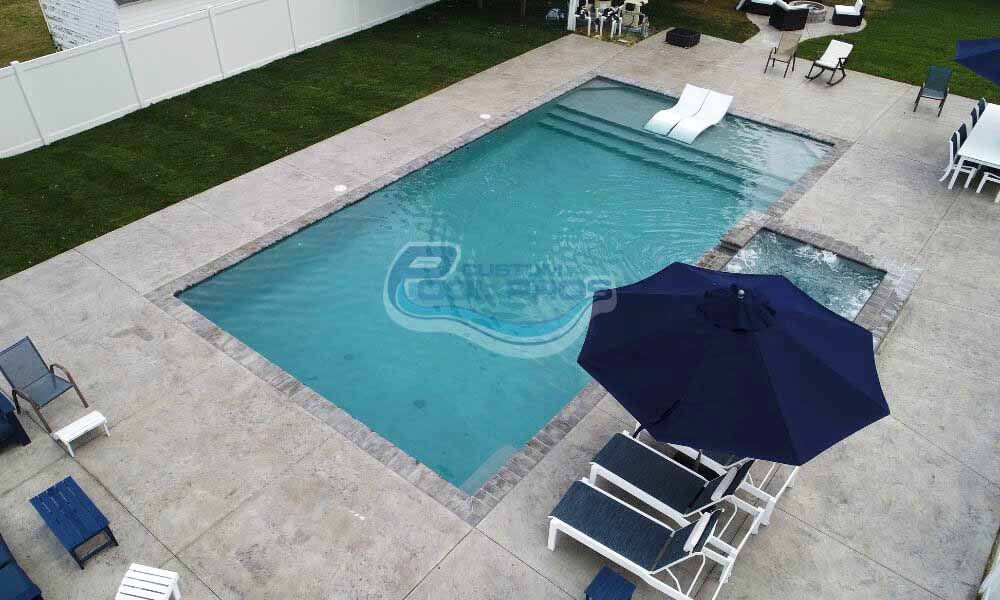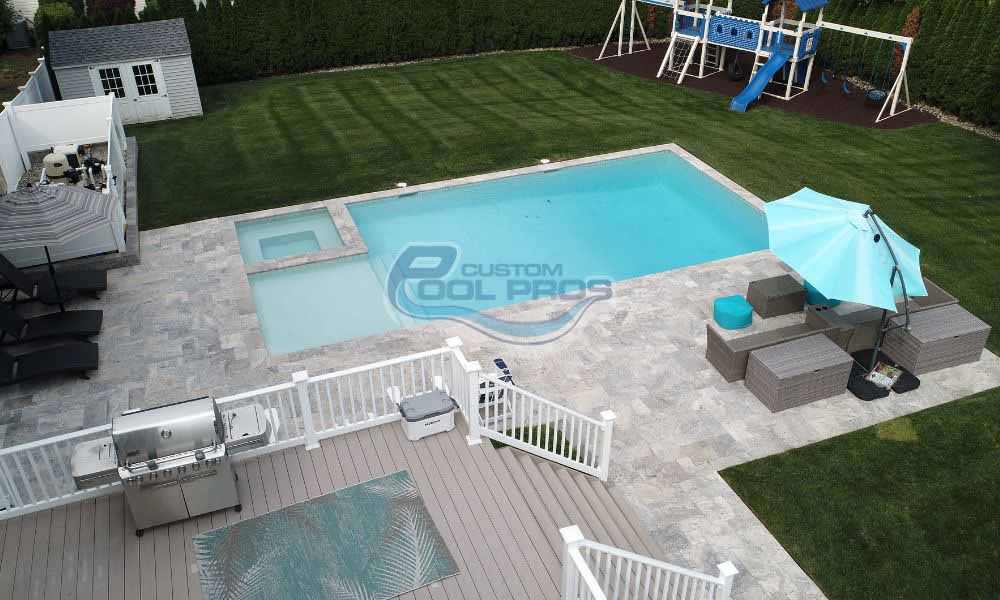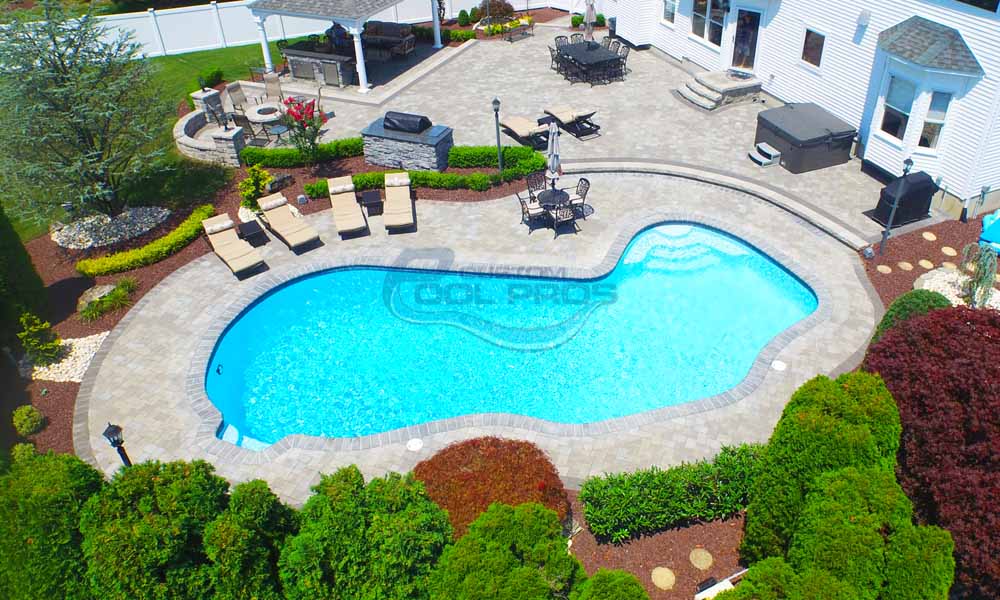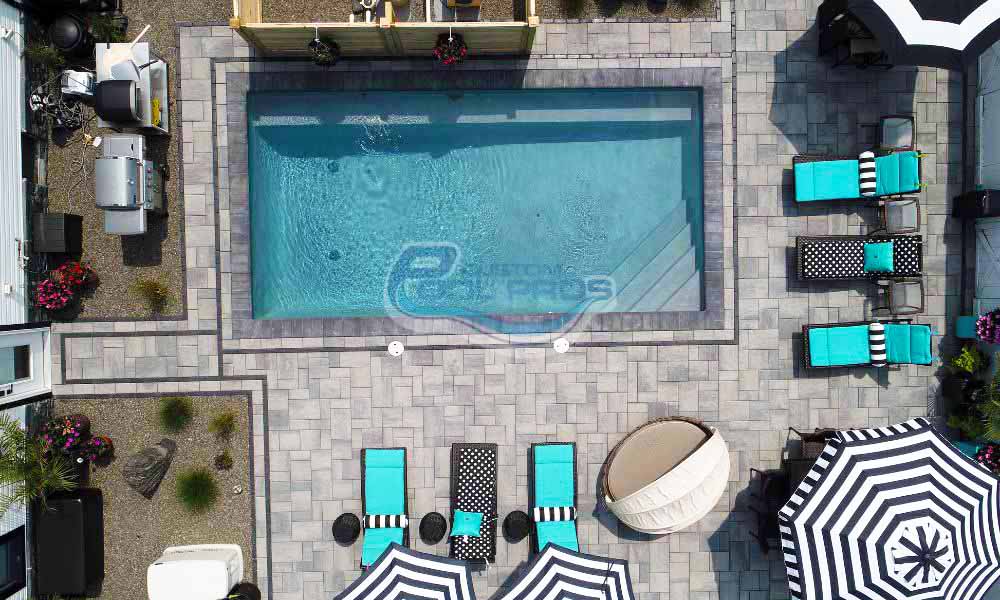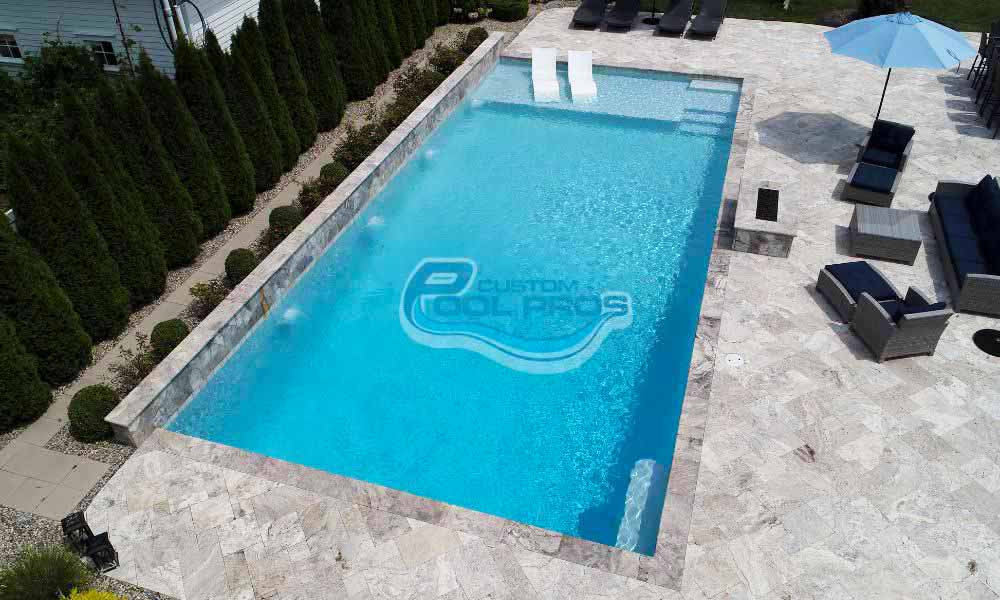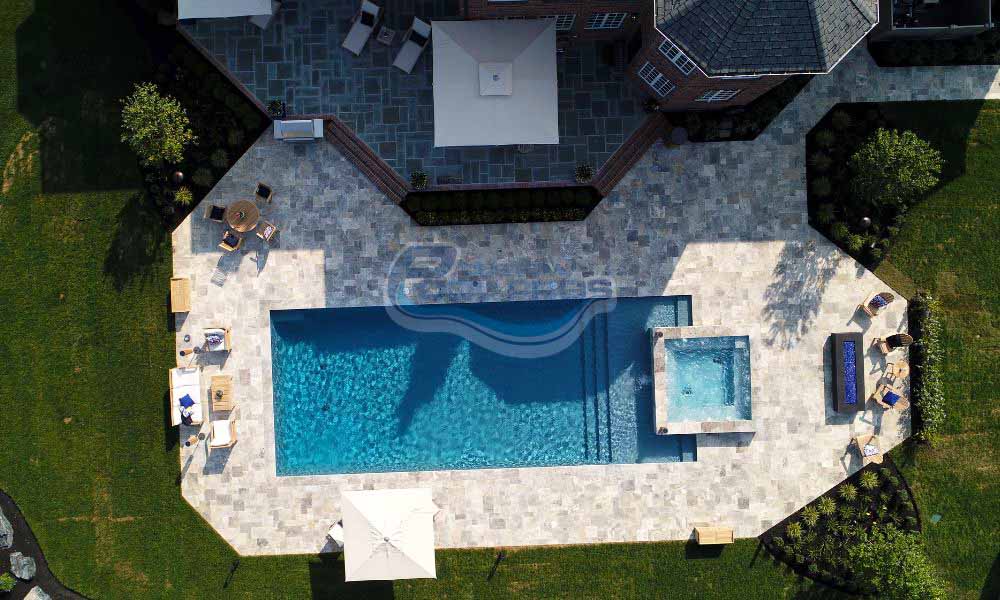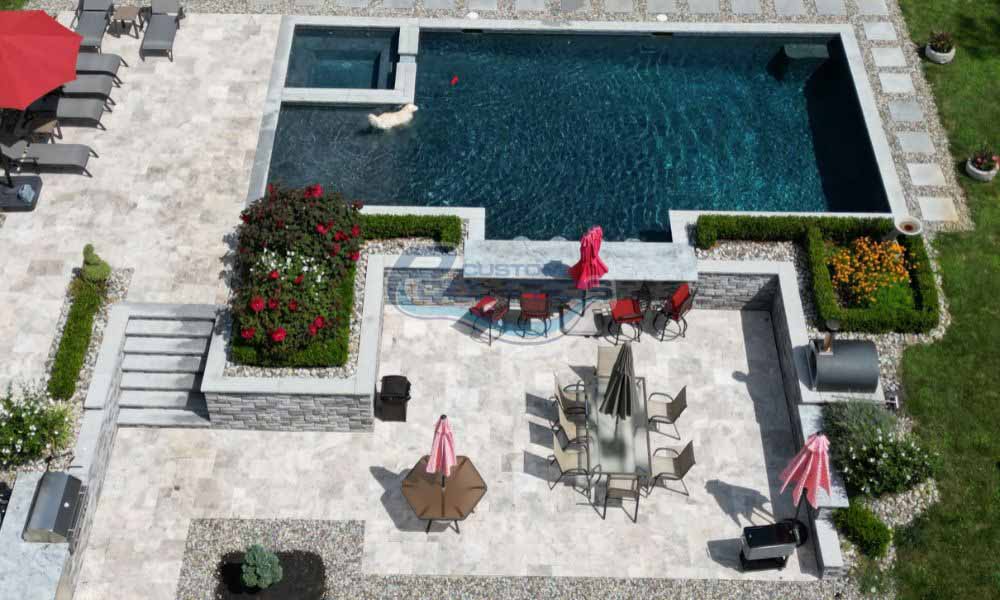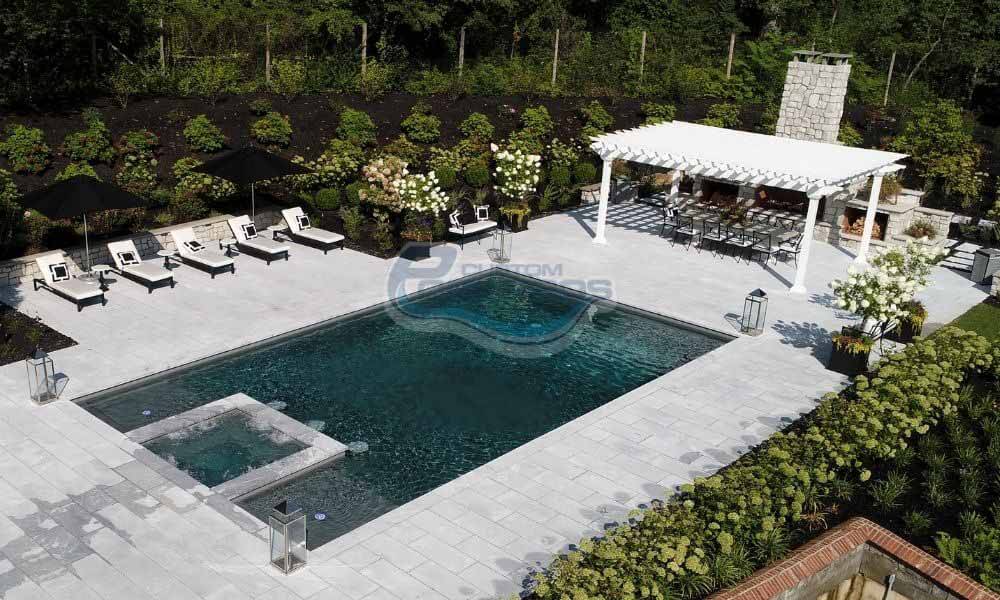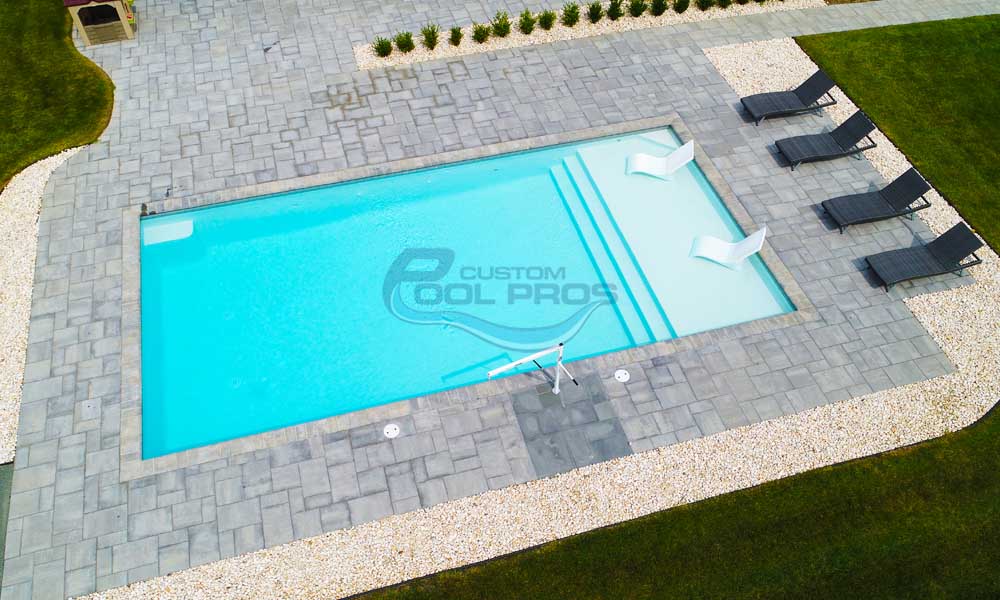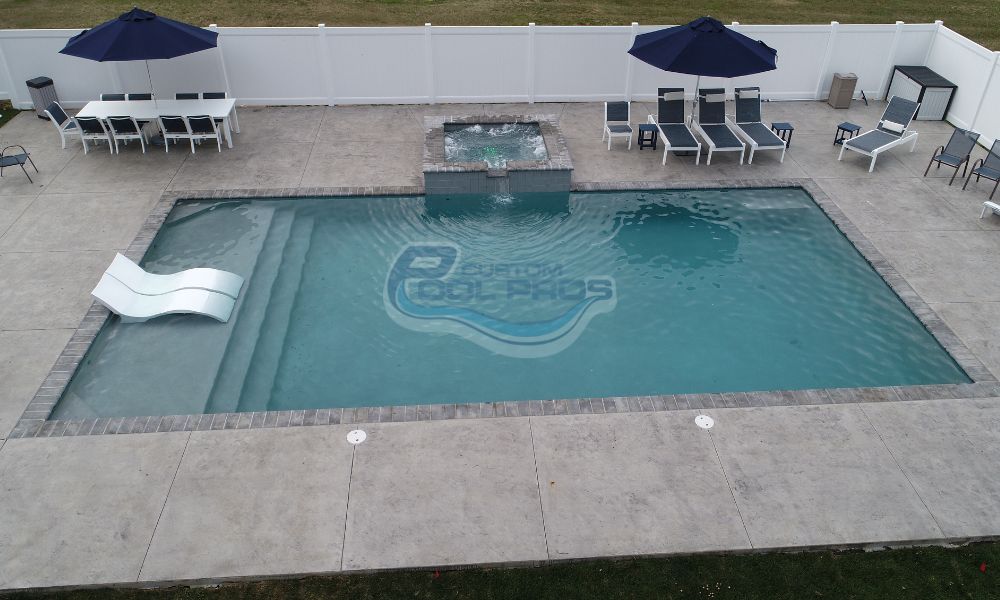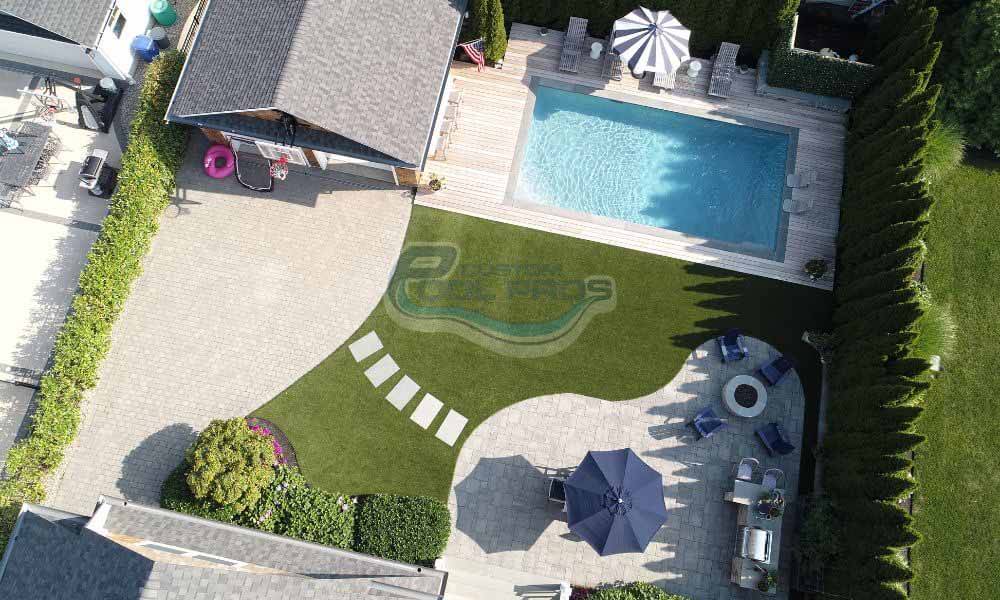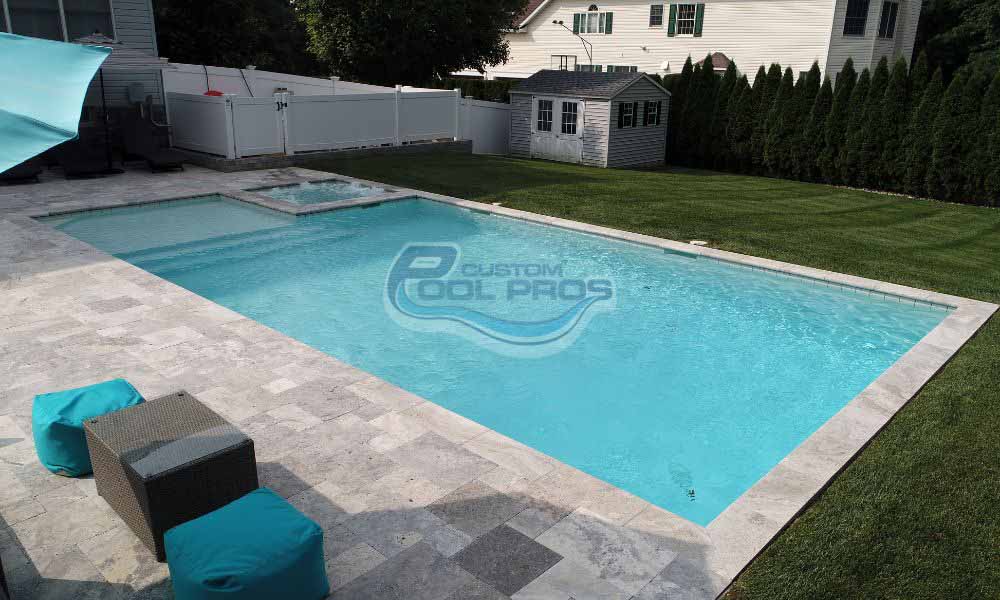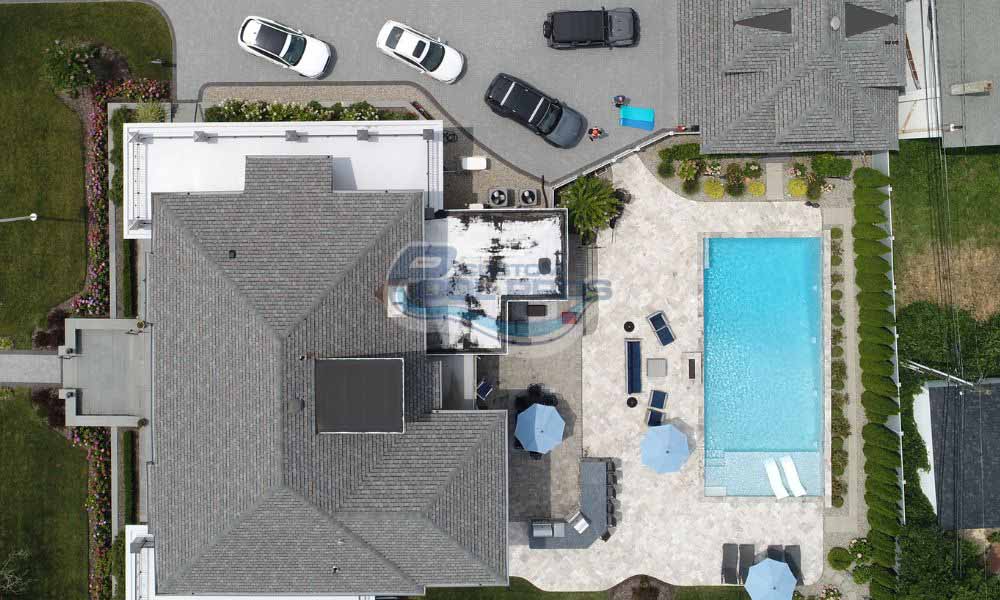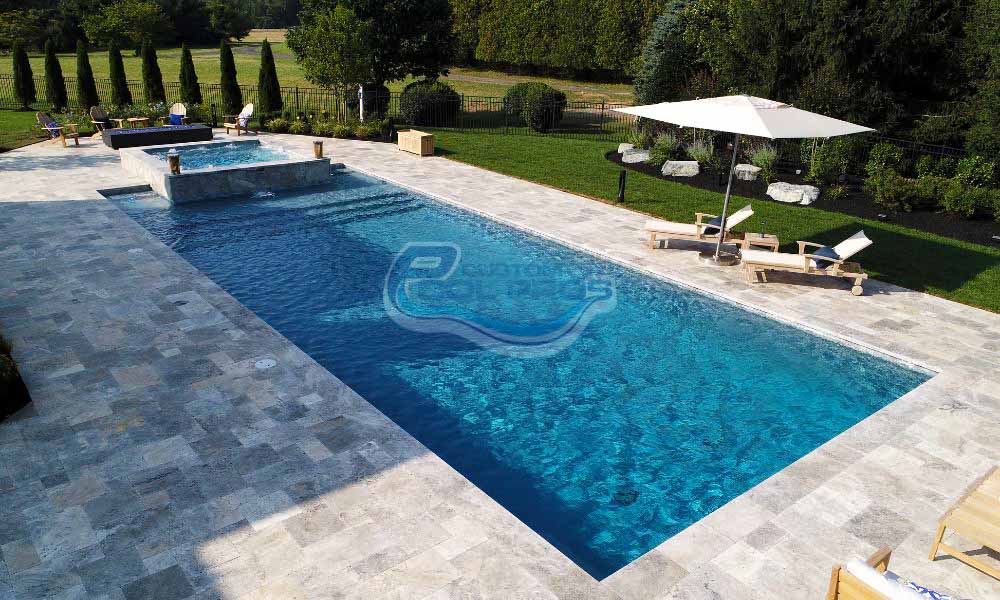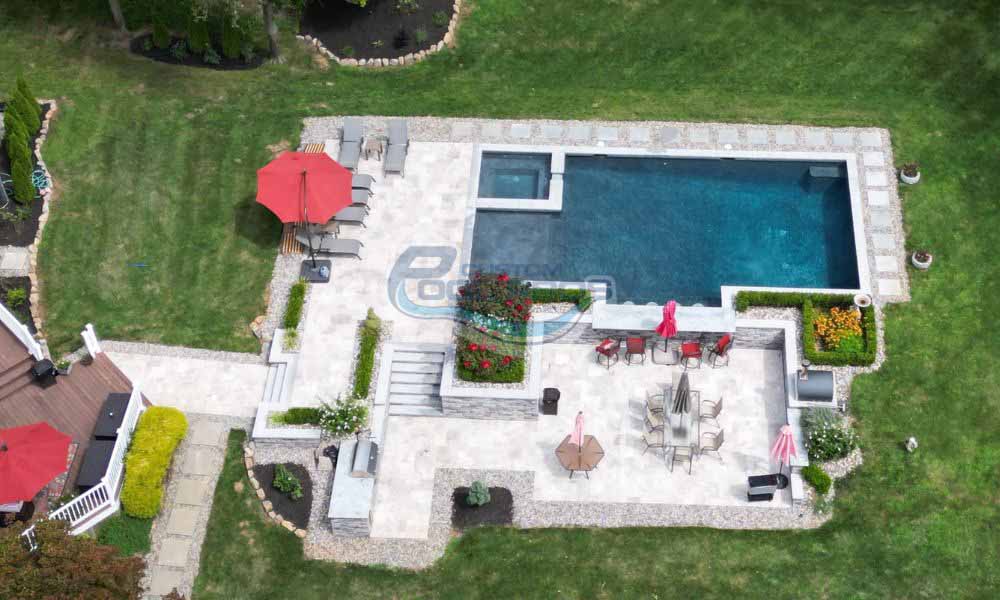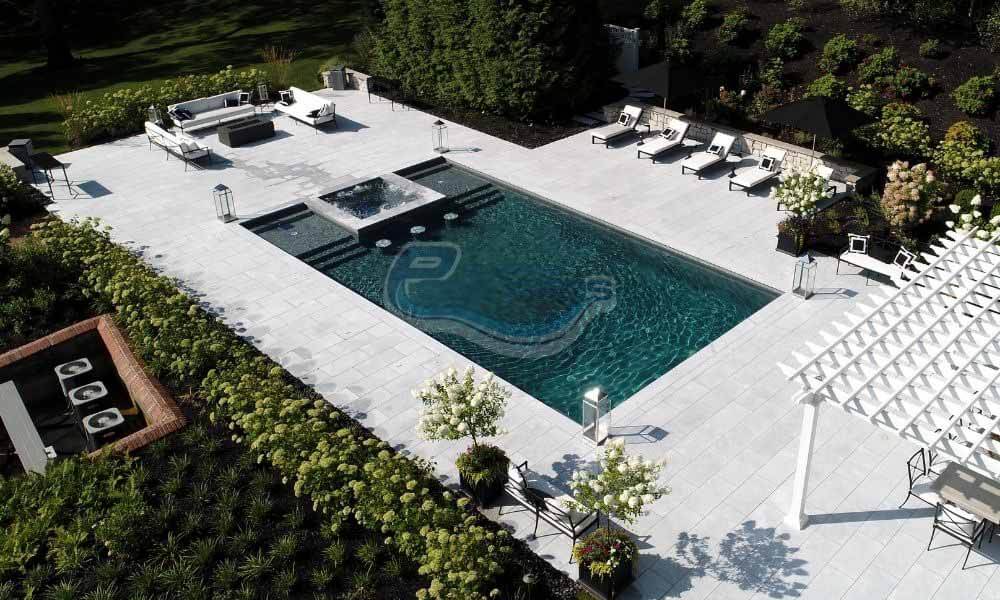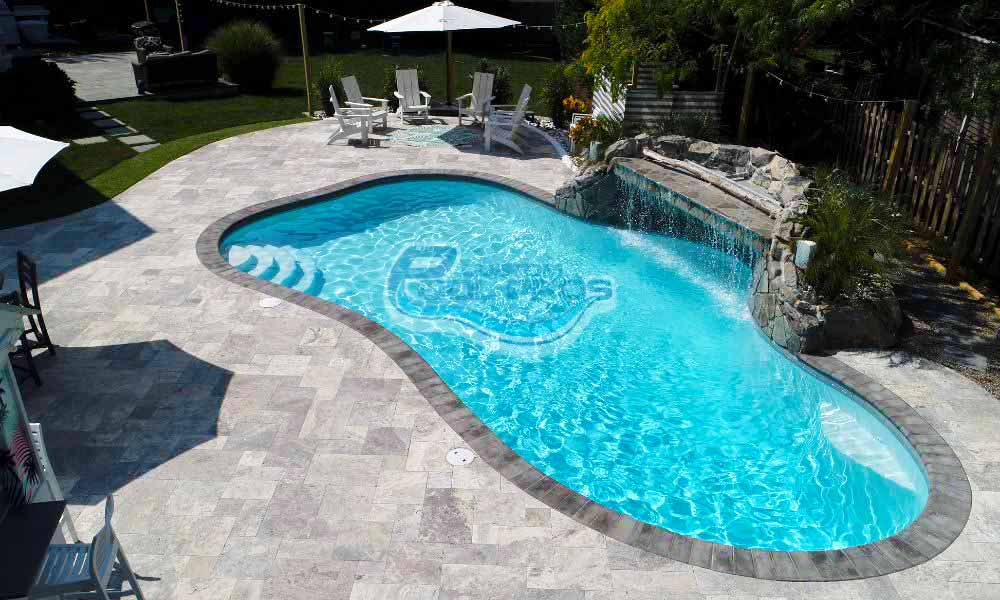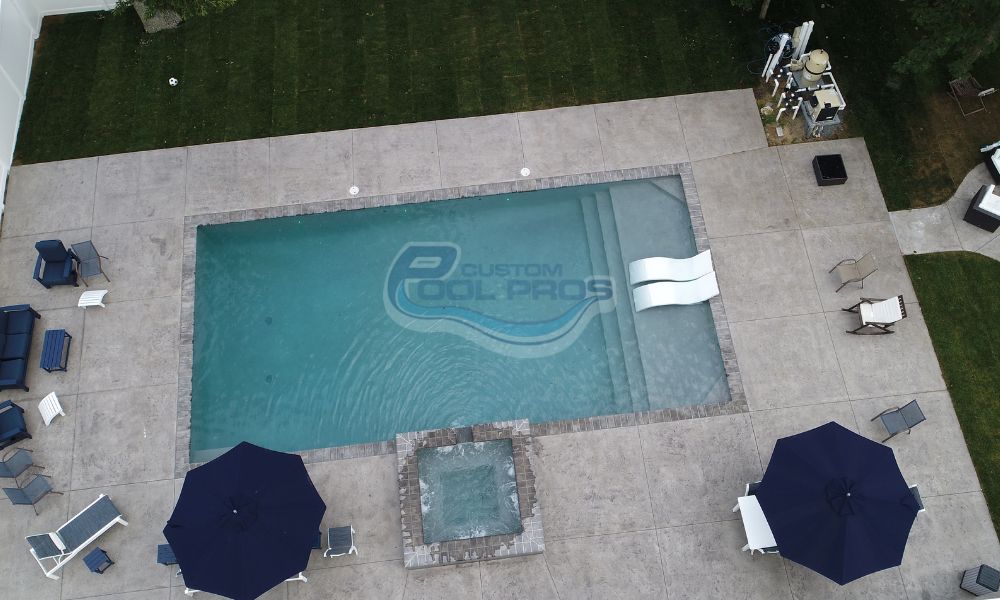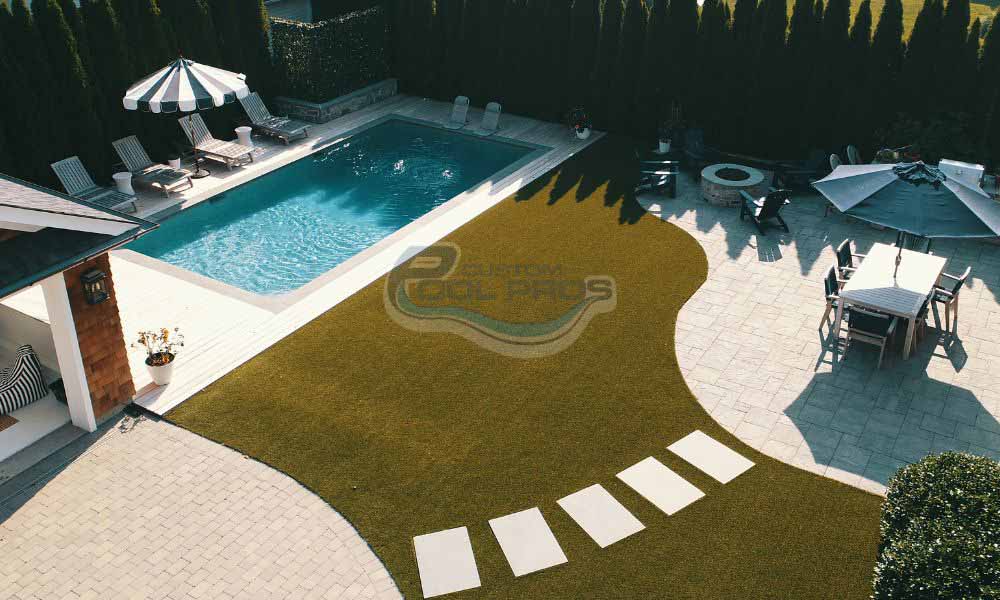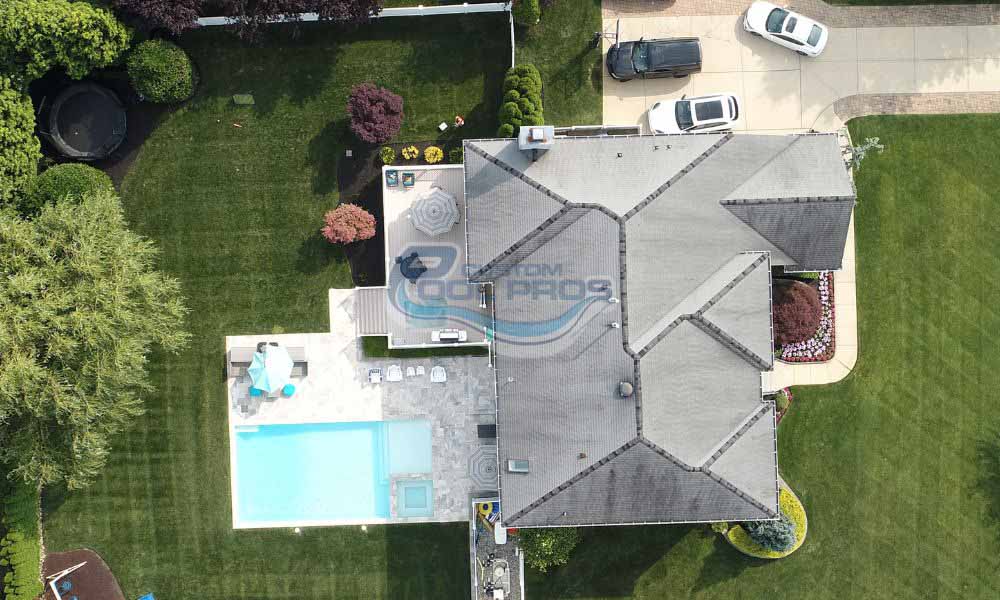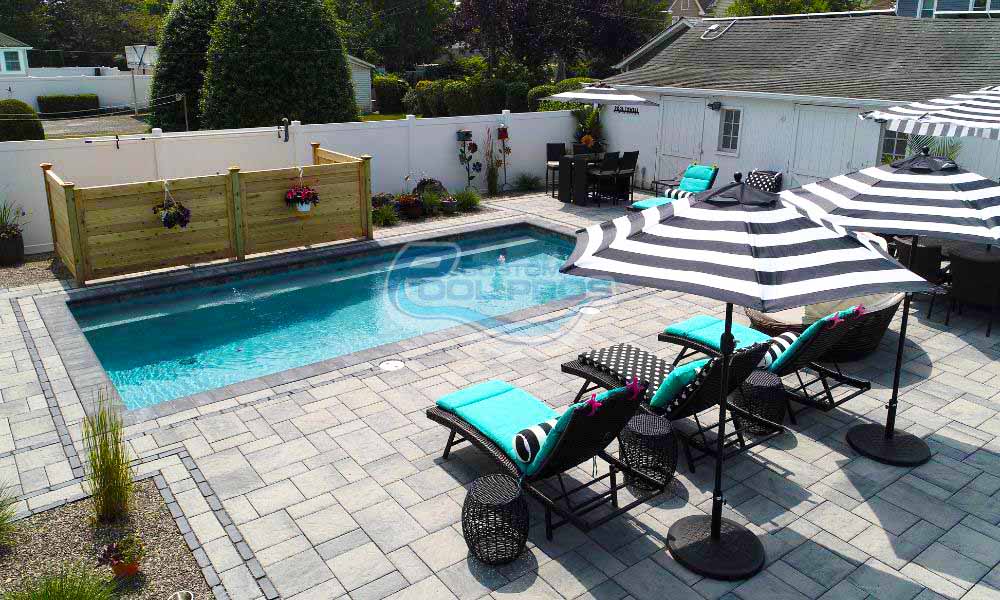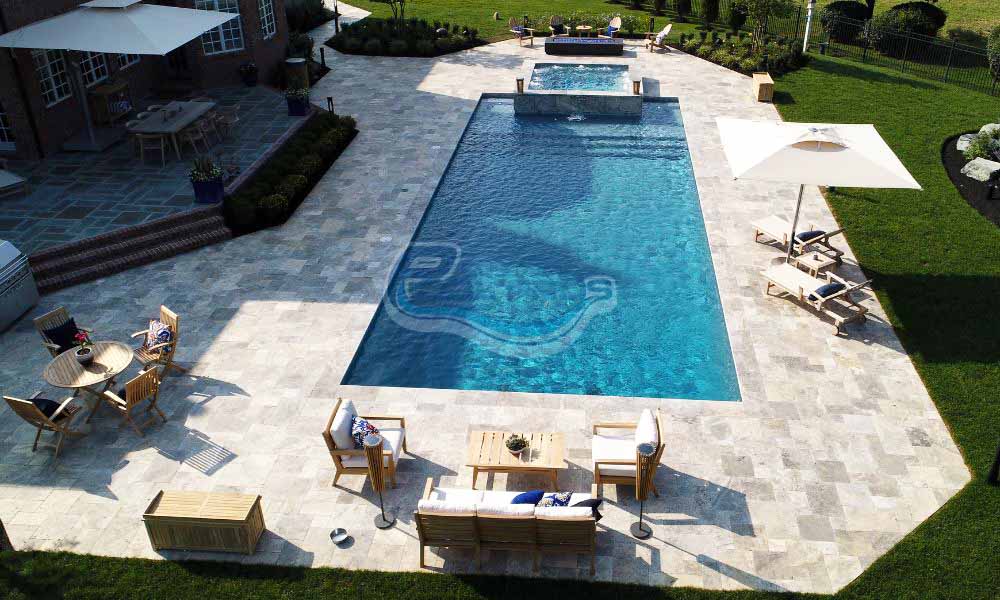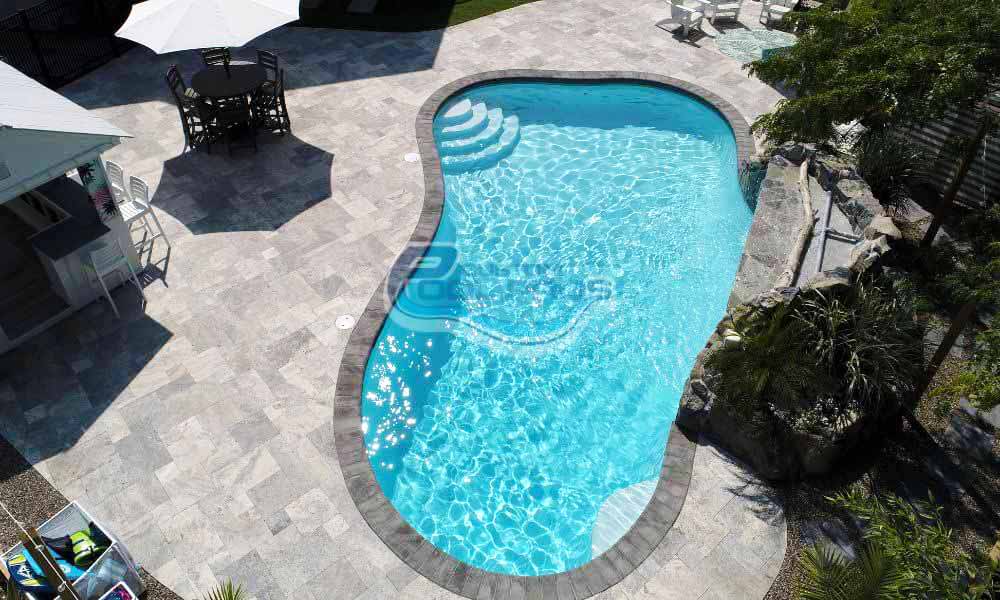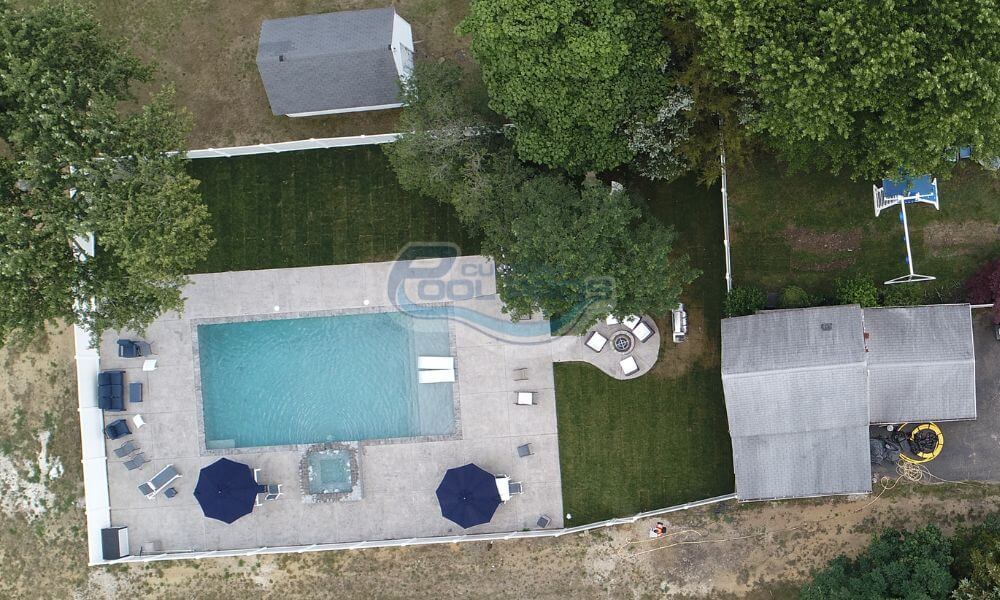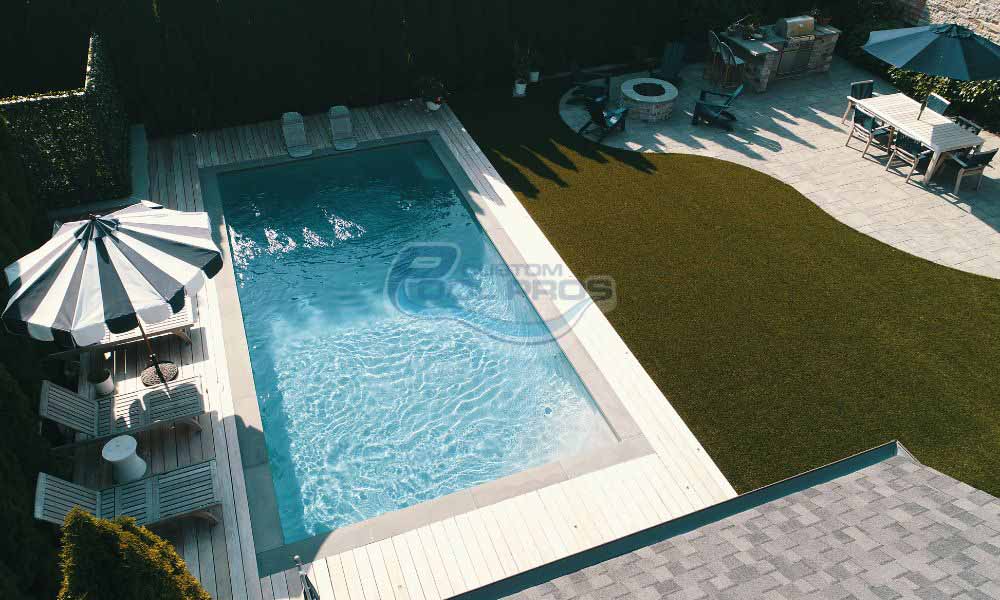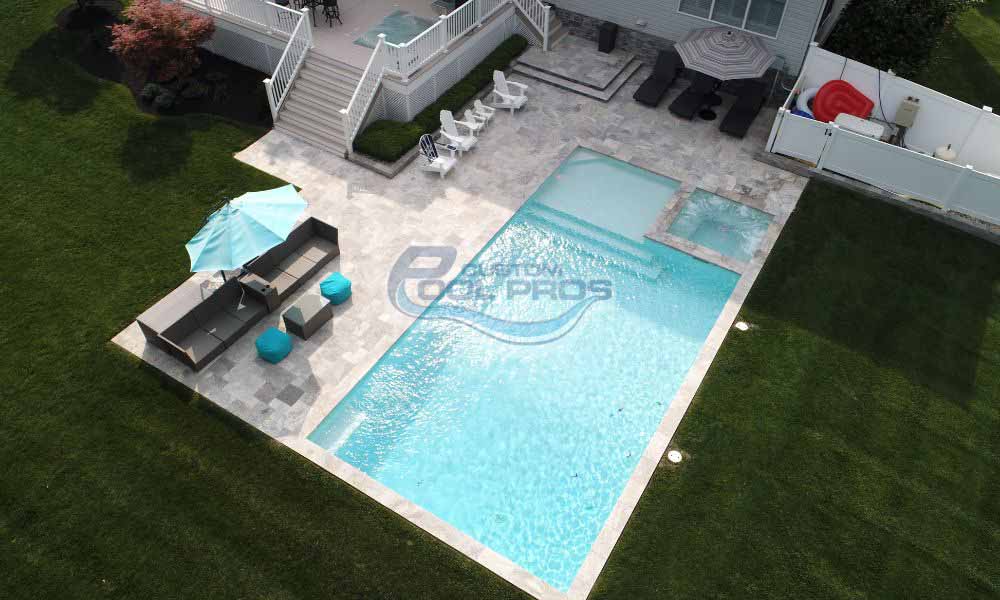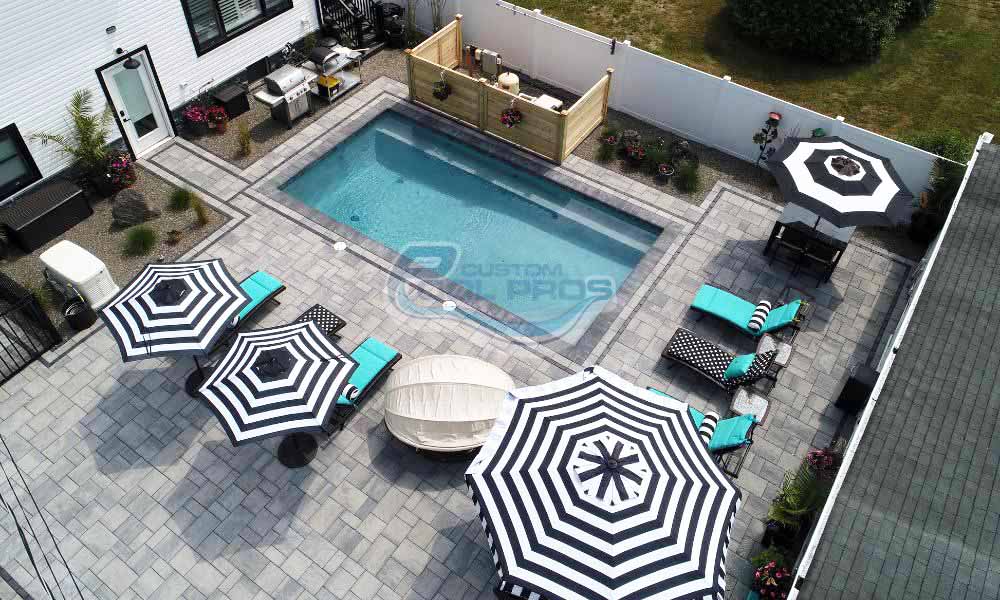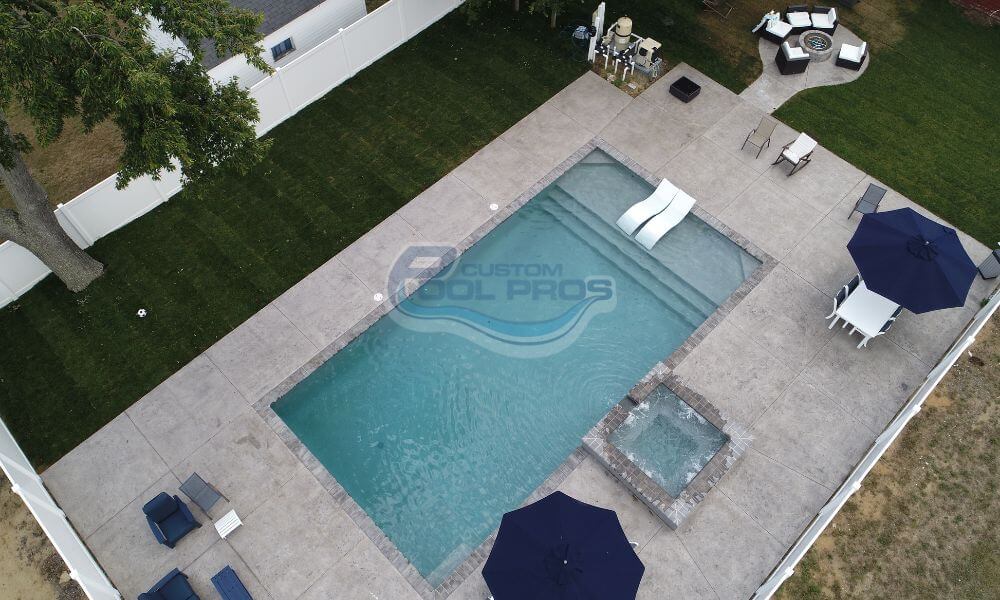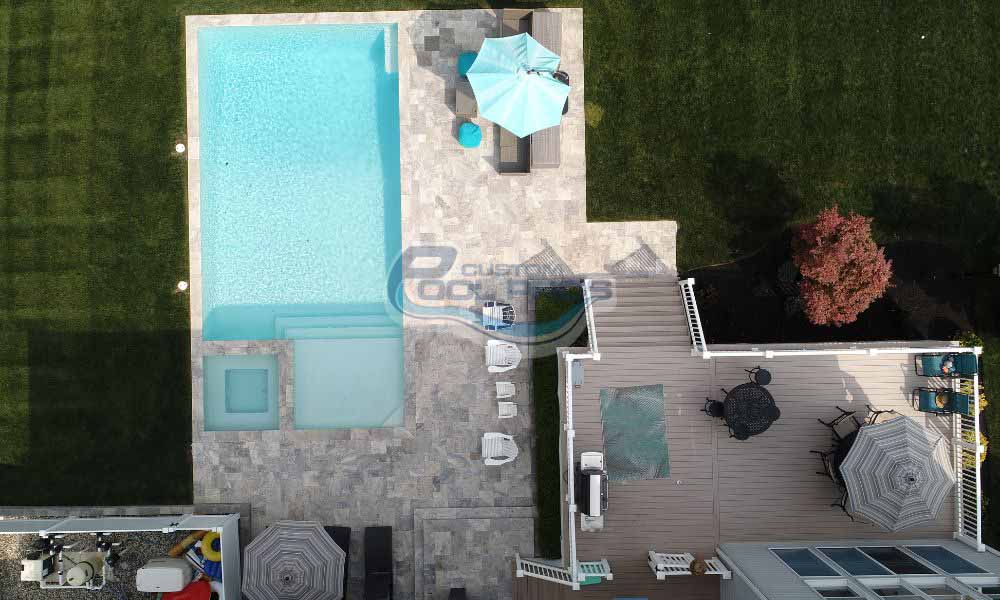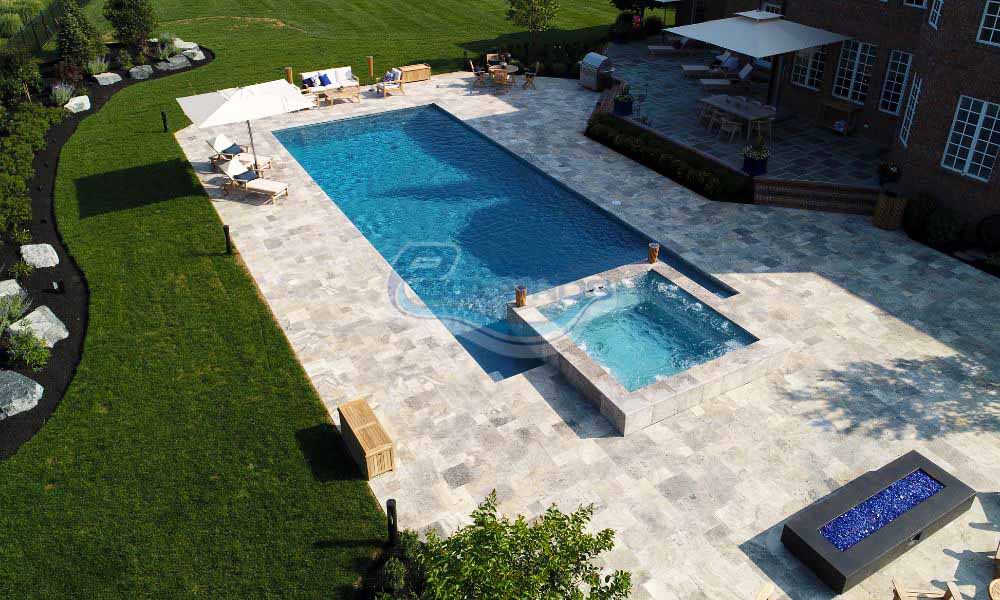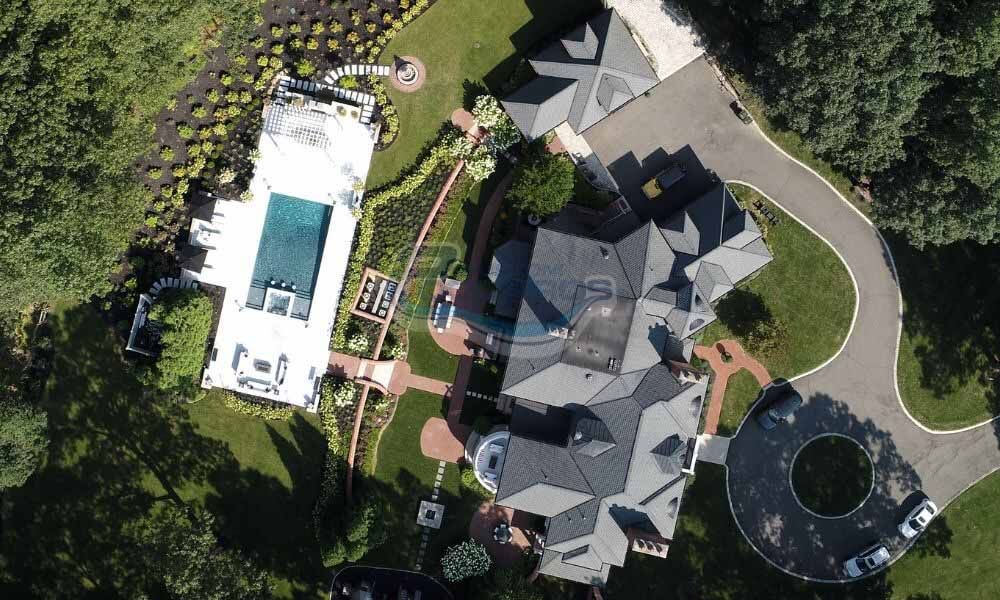The warm weather is the best time for barbeques, family gatherings, and of course pool parties. But it can be quite a disappointment to go out for a swim, only to notice that your pool has lost its sparkle and is a cloudy mess.
How can you keep your swimming pool looking crystal clear? We have all the information you need about keeping your chemical levels and the water in a sanitary condition.
Why Is My Swimming Pool Water So Cloudy?
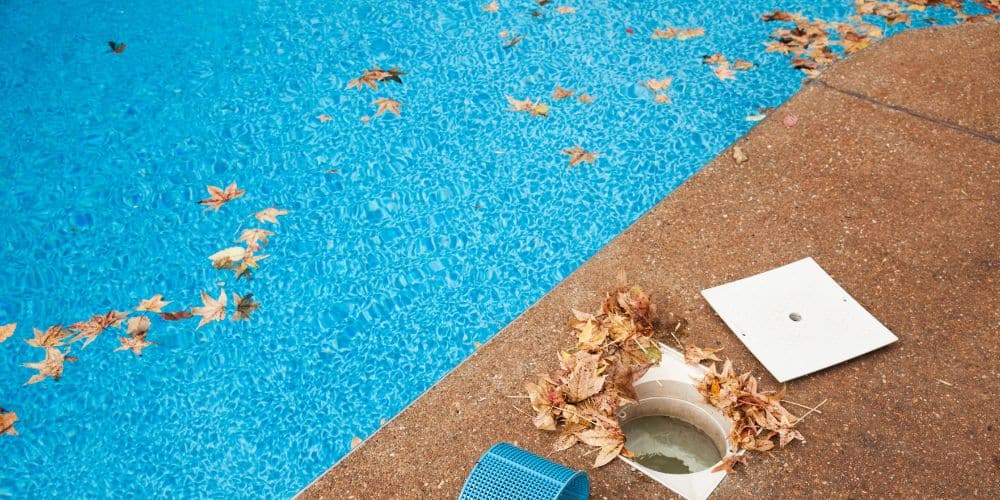
Aside from Mother Nature (wind and dust, algal growth, precipitation), four common factors contribute to a cloudy swimming pool, Improper pH and chlorine levels, High total alkalinity, High calcium hardness, and Other chemical imbalances. Here’s a step-by-step guide on how to clear up cloudy pool water fast.
1. Improper pH and chlorine levels
Too much or too little chlorine causes a cloudy pool. High pH levels can cause calcium buildup and scaling, resulting in cloudy pool water. When your free chlorine levels are too low, it will cause your chlorine to become overly reactive and quickly depleted. That means it’s less effective at sanitizing, leading to a build-up of contaminants and cloudy pool water.
2. High total alkalinity
The other contributor to a cloudy pool is high total alkalinity. A high alkaline level has a corrosive effect that causes calcium and pH scaling.
3. High calcium hardness
Having an excessive amount of calcium also results in a cloudy pool. Calcium that does not dissolve will build up and scale inside your pool plumbing and equipment.
4. Other chemical imbalances
Another contributing factor to a cloudy swimming pool is an elevated level of cyanuric acid, which throws off the balance with free chlorine levels. Plus, if the pool’s water contains too much bromine and phosphate, that would also affect its clarity.
Step-by-Step Guide on How to Clear Cloudy Pool Water
Fortunately, you can effectively clear a cloudy pool by adjusting the chemical levels, checking the pH, and by performing a thorough cleaning. Here are some recommendations.
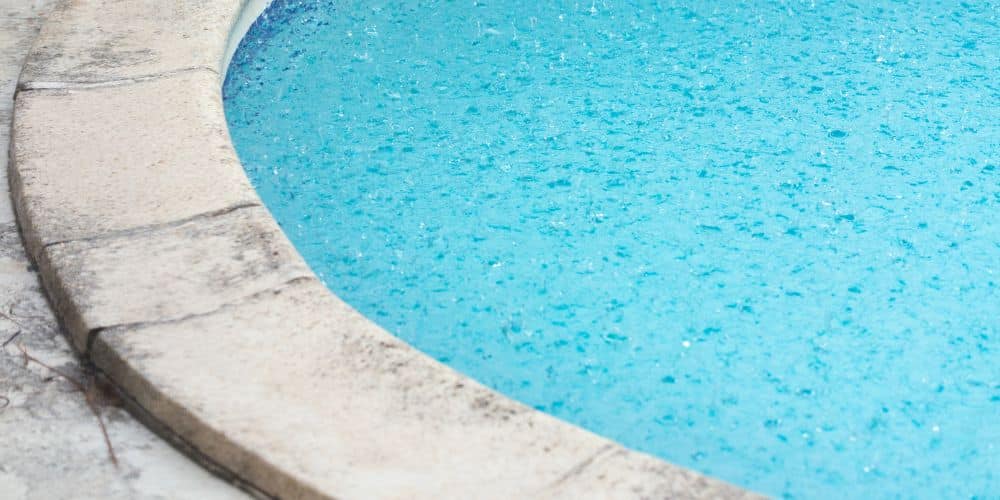
1. Balance free chlorine (FC) levels
The first step is to measure the amount of free chlorine by subtracting that value from your total chlorine. If your combined chlorine comes in at 0.5 ppm, or the FC falls below 3 ppm, then you’ll need to shock your pool right away to avoid bacterial and algal growth and the onset of ammonia.
2. Eliminate ammonia
If your problem is a high quantity of ammonia, then you’ll need to add 2 gallons of chlorine (12.5%) or sodium hypochlorite (10%) to shock your pool. Once you’ve added the chlorine, you’ll need to repeat the process to maintain the shock levels when your FC decreases.
3. Get rid of young algae
If you suspect that young algae are the culprit, you’ll need to complete a chlorine-loss test overnight by pouring more chloride into the water after sundown. If your reading shows that the FC level drops by more than 1 ppm during the night, then you have algae. From there, you’ll need to maintain a consistent shock for a few days.
Related-How to get rid of algae?
4. Monitor and balance pH and TA levels
Using test strips, you can also measure the pH and TA levels. By testing the water once or twice a week, you’ll know if you need to add muriatic acid to raise the pH level. And you’ll need to remember to aerate the pool immediately afterward.
5. Correct calcium hardness (CH) levels
Unfortunately, this process is more cumbersome. To effectively lower CH levels, the pool needs to be partially drained and refilled with fresh water.
Related-Ways to Drain & Clean a Vinyl Pool
6. Backwash filter or replace filtering agent
Depending on the type of filter (DE, sand, or cartridge), you’ll need to backwash it every two or three weeks or once a month. If the filtered water is murky, then you need to replace the filtering agent.
7. Remove contaminants Like debris and mineral deposits
Test and balance your water after a rainstorm and skim, brush, and vacuum the pool as needed. Doing this every week makes a difference, but you’ll still need to monitor chemical levels and add more chemicals as needed.
Frequently Asked Questions about Cloudy Pool Water
How long does it take for a cloudy pool to clear?
The time is determined by how cloudy the pool is. If you’re using a clarifier, you’ll need to keep your filter running 24 hours a day, keep your water chemistry balanced, and add the appropriate amount of water clarifier every other day until it’s clear.
Why is my pool cloudy after shocking?
The cloudiness means the shock treatment is working. Plus, a higher chlorine level will cloud the water temporarily. This is common, and it will dissipate over time as your filter runs.
Will rainwater makes my pool cloudy?
Heavy wind and rain can wash dirt, branches, and leaves into your pool, causing algae growth and making the water cloudy. In this scenario, make sure your filtration system is running in top shape, and check your pH levels to see how (or if) you need to add chemicals to balance it out.
Will Baking Soda Clear Up a Cloudy Pool?
You can use baking soda for quick cosmetic fixes, like scrubbing algae or grime, but it shouldn’t be a long-term solution. It has numerous side effects, like raising the pH and alkalinity levels. The most effective substance for clearing the cloudy pool is chlorine.
Should you swim in cloudy pool water?
According to the CDC, you might avoid swimming in such conditions. Swimming in cloudy water can cause a mild skin rash, red eyes, and rashes.
If you’re not certain about the health of your filtration system, or you have trouble accurately measuring your pH levels, the professionals at Custom Pool pros can help.
Also Read- https://monmouthpoolsnj.com/best-ways-to-sanitize-your-swimming-pool/



